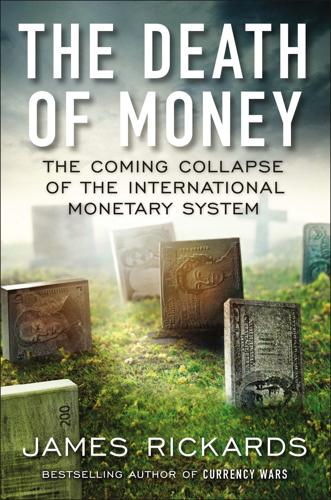
The Death of Money: The Coming Collapse of the International Monetary System
by
James Rickards
Published 7 Apr 2014
But even experts are largely unfamiliar with or confused by the IMF’s greatest power—the ability to create money. Indeed, the name of the IMF’s world money, the special drawing right, seems designed more to confuse than to enlighten. The IMF’s printing press is standing by, ready for use when needed in the next global liquidity crisis. It will be a key tool in engineering the dollar’s demise. ■ One Currency John Maynard Keynes once mused that not one man in a million was able to understand the process by which inflation destroys wealth. It is as likely that not one woman or man in ten million understands special drawing rights, or SDRs. Still, the SDR is poised to be an inflationary precursor par excellence.
…
-Iran financial war and, 55, 57 Indonesia, 45 inflation, 3–4, 7–9, 75–83 alternative measures of, 3 Berlin Consensus and, 122–23 versus deflation, in depression of 2007 to present, 243–52, 260, 290–91 export of, through exchange-rate mechanism, 75, 155 Federal Reserve’s targeting of, 186–87 money illusion and, 7–8 in 1960s and 1970s, 7–8 in 1977 to 1981, 1 in 1981 to 1986, 2 in PDS framework, 183 pro-inflation (easy-money) policy of Federal Reserve (See easy-money policy of Federal Reserve) in 2008 to present, 3, 75, 76, 77 information asymmetry, 83–88 information warfare, 44 infrastructure spending Berlin Consensus and, 123 in China, 98–101, 107 In-Q-Tel, 34, 35 insider trading Stewart’s trading of ImClone Systems, 25 by terrorists (See terrorist insider trading) interest rates bank risk taking in low-interest-rate environment, 80–81 low-interest-rate policy, of Greenspan, 76, 260 negative real rates, 183–84 zero-interest-rate policy, of Bernanke, 185, 260 internal adjustment of unit labor costs, 131 International Emergency Economic Powers Act (IEEPA), 295 International Monetary Fund (IMF), 12, 81, 190–214 Articles of Agreement, 199, 212–14, 235 Asian financial crisis and, 45, 120 C-20 project, 235 cluster paradigm and, 192–93, 194, 198 commitments to expand lending capacity of, 202–6 as de facto central bank, 199–207 deposit-taking function of, 201 financial transmission and, 193–94 gold dispositions by, 235–36, 277 governance reforms, implications of, 296 historical roles of, 191 lending role of, 199–201 leverage of, 201–6 management of, 194–95 special drawing rights (SDRs) issued by (See special drawing rights [SDRs]) spillover effects of national policy, 193, 194, 198 international monetary system, 1, 12, 118–21 Beijing Consensus, 118, 120–21 Bretton Woods system, 118, 208–9, 235, 290 C-20 project and IMF reforms, 235–36 collapses of, 5 debt and deflation as problems of, since 2009, 290–91 gold reserve rebalancing and potential reform of, 279–84 Washington Consensus, 118–19 Internet, 174 interstate highway system, 174–75 investment Berlin Consensus and, 123 Bernanke’s monetary policies aimed at increasing, 86 Chinese economic growth and, 95–101, 107–110 gold as not constituting an investment, 218–19 infrastructure (See infrastructure spending) lack of, and duration of Great Depression, 84 regime uncertainty and, 84–86 investment portfolio recommendations, 298–301 alternative funds, 299–300 cash, 300 fine art, 299 gold, 298–99 land, 299 Iran, 12, 30, 151, 152, 153, 156 cyberattacks conducted by, 60 U.S.
…
Foreign creditors no longer trusted the U.S. dollar as a store of value. The dollar was losing purchasing power, dropping by half from 1977 to 1981; U.S. inflation was over 50 percent during those five years. Starting in 1979, the International Monetary Fund (IMF) had little choice but to mobilize its resources to issue world money (special drawing rights, or SDRs). It flooded the market with 12.1 billion SDRs to provide liquidity as global confidence in the dollar declined. We would do well to recall those dark days. The price of gold rose 500 percent from 1977 to 1980. What began as a managed dollar devaluation in 1971, with President Richard Nixon’s abandonment of gold convertibility, became a full-scale rout by the decade’s end.
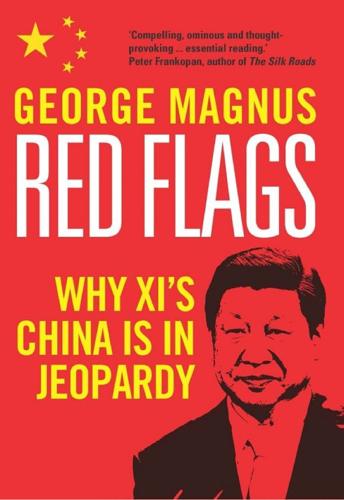
Red Flags: Why Xi's China Is in Jeopardy
by
George Magnus
Published 10 Sep 2018
–China Strategic and Economic Dialogue (i) Hua Guofeng (i) Huangpu district (Shanghai) (i) Huawei (i), (ii), (iii), (iv) hukou (i), (ii), (iii), (iv) Human Freedom Index (i) Human Resources and Social Security, Ministry of (i) Hunan (i) Hungary (i), (ii), (iii), (iv) ICORs (incremental capital-output ratios) (i), (ii), (iii) n4 IMF Article IV report (i) on broadening and deepening of financial system (i) China urged to devalue (i) China’s integration and (i) concern over smaller banks (i) concern over WMPs (i) credit gaps (i) credit intensity (i) GP research (i) ICOR (i) n4 laissez-faire ideas (i) pensions, healthcare and GDP research (i), (ii), (iii) Renminbi reserves (i) risky corporate loans (i) Special Drawing Rights (i), (ii), (iii), (iv), (v) WAPs (i) immigrants see migrants income inequality (i) India Adam Smith on (i) ASEAN (i) BRI misgivings (i) BRICS (i), (ii) comparative debt in (i) demographic dividend (i) economic freedom level (i) frictions with (i) Nobel Prize (i) pushing back against China (i) regional allies of (i) SCO member (i) Indian Ocean access to ports (i) African rail projects and (i) Chinese warships enter (i) rimland (i) shorelines (i) Indo-Pacific region (i), (ii) Indonesia Asian crisis (i) BRI investment (i) debt and GDP (i) GDP (i) rail transport projects (i) RCEP (i) retirement age (i) trade with China (i) Industrial and Commercial Bank of China (i), (ii) Industrial Revolution (i), (ii) industrialisation (i), (ii) Industry and Information Technology, Minister of (i) infrastructure (i), (ii), (iii), (iv) Initial Public Offerings (IPOs) (i) Inner Mongolia (i), (ii) innovation (i), (ii) Inquiry into the Nature and Causes of the Wealth of Nations (Adam Smith) (i) Institute for International Finance (i) institutions (i), (ii) insurance companies (i), (ii), (iii) intellectual property (i) interbank funding (i), (ii), (iii), (iv), (v) investment (i), (ii), (iii) Iran (i) Ireland (i), (ii), (iii) Iron Curtain (i) ‘iron rice bowl’ (i) Israel (i), (ii) Italy (i), (ii), (iii) Jakarta (i), (ii) Japan acts of aggression by (i) aftermath of war (i) ASEAN (i) between the wars (i) bond market (i) Boxer Rebellion and (i) Chiang Kai-shek fights (i) China and (i) China’s insecurity (i) credit gap comparison (i) dispute over Diaoyu islands (i), (ii) export-led growth (i), (ii) financial crisis (i) friction with (i) full-scale war with China (i), (ii) growth (i) high-speed rail (i) India and (i) Liaodong peninsula (i) Manchuria taken (i), (ii), (iii) Mao fights (i) middle- to high-income (i) migrants to (i) Okinawa (i) old-age dependency ratio (i) pensions, healthcare and GDP research (i) pushing back against China (i) RCEP (i) Renminbi block, attitude to (i) research and development (i) rimland (i) robots (i) seas and islands disputes (i) Shinzō Abe (i) TPP (i) trade and investment from (i) yen (i) Jardine Matheson Holdings (i) Jiang Zemin 1990s (i) Deng’s reforms amplified (i), (ii), (iii) influence and allies (i) Xiao Jianhua and (i) Johnson, Lyndon (i) Julius Caesar (i) Kamchatka (i) Kashgar (i) Kashmir (i) Kazakhstan (i), (ii) Ke Jie (i) Kenya (i) Keynes, John Maynard (i) Kharas, Homi (i) Kissinger, Henry (i), (ii), (iii), (iv) Korea (i), (ii), (iii) see also North Korea; South Korea Korean War (i), (ii) Kornai, János (i), (ii), (iii) n16 Kowloon (i), (ii) Krugman, Paul (i) Kunming (i) Kuomintang (KMT) (i), (ii) Kyrgyzstan (i) Kyushu (i) labour productivity (i) land reform (i) Laos (i), (ii), (iii) Latin America (i), (ii), (iii) Lattice Semiconductor Corporation (i) leadership (i) Leading Small Groups (LSGs) (i), (ii), (iii), (iv) Lee Kuan Yew (i) Lee Sodol (i) Legendary Entertainment (i) Lehman Brothers (i) lending (i) Leninism governance tending to (i) late 1940s (i) party purity (i) Xi’s crusade on (i), (ii) Lenovo (i), (ii) Lewis, Arthur (i) Lewis turning point (i) LGFVs (local government financing vehicles) (i) Li Keqiang (i), (ii) Liaodong peninsula (i), (ii) LinkedIn (i) Liu He (i), (ii), (iii) Liu Xiaobo (i) local government (i), (ii), (iii) London (i), (ii), (iii) Luttwak, Edward (i), (ii), (iii) Macartney, Lord George (i), (ii), (iii) Macau (i), (ii) Made in China 2025 (MIC25) ambitious plans (i) importance of (i) mercantilism (i) priority sectors (i) robotics (i) Maddison, Angus (i), (ii), (iii) n3 (C1) Maghreb (i) major banks see individual entries Malacca, Straits of (i) Malay peninsula (i) Malaysia ASEAN member (i) Asian crisis (i) high growth maintenance (i) Nine-Dash Line (i) rail projects (i), (ii) Renminbi reserves (i) TPP member (i) trade with (i) Maldives (i) Malthus, Thomas (i), (ii) Manchuria Communists retake (i) Japanese companies in (i) Japanese puppet state (i), (ii), (iii) key supplier (i) North China Plain and (i) Pacific coast access (i) Russian interests (i) targeted (i) Manhattan (i), (ii) see also New York Mao Zedong arts and sciences (i) China stands up under (i) China under (i) Communist Party’s grip on power (i) consumer sector under (i) Deng rehabilitated (i) Deng, Xi and (i) east wind and west wind (i) Great Leap Forward (i) industrial economy under (i) nature of China under (i) People’s Republic proclaimed (i) positives and negatives (i) property rights (i) women and the workforce (i) Xi and (i) Maoism (i) Mar-a-Lago (i) Mark Antony (i) Market Supervision Administration (i) Marshall Plan (i), (ii) Marxism (i), (ii), (iii), (iv) Mauritius (i) May Fourth Movement (i) McCulley, Paul (i) n18 Mediterranean (i) Menon, Shivshankar (i) mergers (i) MES (market economy status (ii)) Mexico completion of education rates (i) debt comparison (i) GDP comparison (i) NAFTA (i) pensions comparison (i) TPP member (i) US border (i) viagra policy (i) Middle East (i), (ii), (iii) middle-income trap (i), definition (i) evidence and argument for (i) governance (i) hostility to (i) hukou system (i) lack of social welfare for (i) low level of (i) migrant factory workers (i) patents and innovation significance (i) significance of technology tech strengths and weaknesses (i) total factor productivity focus (i) vested and conflicted interests (i) ultimate test (i) World Bank statistics (i) migrants (i), (ii), (iii), (iv), (v) Ming dynasty (i) Minsky, Hyman (i) mixed ownership (i), (ii) Modi, Narendra (i) Mombasa (i) monetary systems (i) Mongolia (i), (ii) Monogram (i) Moody’s (i) Morocco (i) mortality rates (i) see also population statistics mortgages (i) motor cars (i), (ii) Moutai (i) Mundell, Robert (i) Muslims (i) Mutual Fund Connect (i) Myanmar ASEAN (i) Chinese projects (i) disputes (i) low value manufacturing moves to (i) Qing Empire in (i) ‘string of pearls’ (i) ‘Myth of Asia’s Miracle, The’ (Paul Krugman) (i) NAFTA (North American Free Trade Agreement) (i) Nairobi (i) Namibia (i) Nanking (i) Treaty of (i), (ii) National Bureau of Statistics fertility rates (i) GDP figures (i) ICOR estimate (i), (ii), (iii) n4 SOE workers (i) National Cyberspace Work Conference (i) National Development and Reform Commission (i), (ii), (iii) National Financial Work Conferences (i) National Health and Family Planning Commission (i) National Medium and Long-Term Plan for the Development of Science and Technology (i) National Natural Science Foundation (i) National People’s Congress 2007 (i) 2016 (i) 2018 (i), (ii), (iii), (iv) National People’s Party of China (i) National Science Foundation (US) (i) National Security Commission (i) National Security Strategy (US) (i), (ii) National Supervision Commission (i), (ii), (iii), (iv) Needham, Joseph (i) Nepal (i), (ii) Netherlands (i) New Development Bank (i), (ii) New Eurasian Land Bridge (i) New Territories (i), (ii) New York (i) see also Manhattan New Zealand (i), (ii), (iii) Next Generation AI Development Plan (i) Nigeria (i) Nine-Dash Line (i) Ningpo (i) Nixon, Richard (i) Nobel Prizes (i), (ii) Nogales, Arizona (i) Nogales, Sonora (i) Nokia (i) non-communicable disease (i) non-performing loans (i), (ii), (iii), (iv), (v), (vi) North China Plain (i) North Korea (i) see also Korea Northern Rock (i) Norway (i) Nye, Joseph (i) Obama, Barack Hu Jintao and (i) Pacific shift recognised (i) Renminbi (i) US and China (i), (ii) OECD (Organisation for Economic Co-operation and Development) China’s ranking (i) GDP rates for pension and healthcare (i) GP doctors in (i) tertiary education rates (i) US trade deficit with China (i) Office of the US Trade Representative (i) Official Investment Assistance (Japan) (i) Okinawa (i) old-age dependency ratios (i), (ii), (iii) Olson, Mancur (i) Oman (i) one-child policy (i), (ii) Opium Wars financial cost of (i) First Opium War (i), (ii), (iii) Qing dynasty defeated (i) Oriental Pearl TV Tower, Shanghai (i) Pacific (i), (ii), (iii) Padma Bridge (i) Pakistan Economic Corridor (i) long-standing ally (i) Renminbi reserves (i) SCO member (i) ‘string of pearls’ (i) Paris (i) Party Congresses see numerical list at head of index patents (i) Peking (i), (ii), (iii) see also Beijing pensions (i) People’s Bank of China see also banks cuts interest rates again (i) floating exchange rates (i) lender of last resort (i), (ii) long term governor of (i) new rules issued (i) new State Council committee coordinates (i) places severe restrictions on banks (i) publishing Renminbi values (i) Renminbi/dollar rate altered (i) repo agreements (i) sells dollar assets (i) stepping in (i) Zhou Xiaochuan essay (i) People’s Daily front-page interview (i), (ii) on The Hague tribunal (i) riposte to Soros (i) stock market encouragement (i) People’s Liberation Army (i), (ii) Persia (i) Persian Gulf (i), (ii) Peru (i) Pettis, Michael (i) n12 Pew Research (i) Peyrefitte, Alain (i) Philippines (i), (ii), (iii), (iv) Piraeus (i) PISA (Programme for International Student Assessment) (i) Poland (i), (ii), (iii) ‘Polar Silk Road’ (i) Politburo (i), (ii), (iii), (iv) pollution (i) Polo, Marco (i) Pomeranz, Kenneth (i) population statistics (i) see also ageing trap; WAP (working-age population) consequences of ageing (i) demographic dividends (i), (ii) hukou system and other effects (i) low fertility (i), (ii), (iii) migrants (i), (ii) old-age dependency ratios (i), (ii), (iii) one-child policy (i), (ii) places with the most ageing populations (i) rural population (i) savings trends (i) technology and (i) under Mao (i) women (i) Port Arthur (i) Port City Colombo (i), (ii) Portugal (i), (ii), (iii), (iv) pricing (i), (ii) private ownership (i), (ii) productivity (i), (ii) Propaganda, Department of (i) property (i) property rights (i) Puerto Rico (i) Punta Gorda, Florida (i) Putin, Vladimir (i) Qianlong, Emperor (i) Qing dynasty (i), (ii), (iii) Qingdao (i) Qualcomm (i) Qualified Domestic Institutional Investors (i), (ii) Qualified Foreign Institutional Investors (i), (ii) Qiushi, magazine (i) rail network (i), (ii) RCEP (Regional Comprehensive Economic Partnership) (i), (ii), (iii) real estate (i), (ii) reform authoritative source warns of need for (i), (ii) different meaning from West (i) of economy via rebalancing (i), (ii) as embraced by Deng Xiaoping (i) fiscal, foreign trade and finance (i), (ii) Hukou (i) of ownership (i) state-owned enterprises (i) third plenum announcements (i) in Xi Jinping’s China (i) ‘Reform and Opening Up’ (Deng Xiaoping) (i), (ii), (iii) regulations and regulatory authorities (financial) (i), (ii) Reinhart, Carmen (i) Renminbi (i) 2015 mini-devaluation and capital outflows (i), (ii) appreciates (i) banking system’s assets in (i) bloc for (i) capital flight risk (i) devaluation (i), (ii), (iii), (iv) dim sum bonds (i) efforts to internationalise (i) end of peg (i) foreign investors and (i) fully convertible currency, a (i) growing importance of (i) IMF’s Special Drawing Rights (i) Qualified Institutional Investors (i) in relation to reserves (i) Renminbi trap (i), (ii), (iii), (iv) share of world reserves (i) significance of (i), (ii) Special Drawing Rights and (i), (ii) US dollar and (i), (ii), (iii), (iv), (v) repo markets (i), (ii) research and development (R&D) (i), (ii) Resources Department (i) retirement age (i) Rhodium Group (i) rimland (i) Robinson, James (i) robots (i) Rogoff, Kenneth (i) Roman Empire (i) Rotterdam (i) Rozelle, Scott (i) Rudd, Kevin (i) Rudong County (i) Rumsfeld, Donald (i) Rural Cooperative Medical Scheme (i) rural workers (i) Russia see also Soviet Union 19th century acquisitions (i), (ii) ageing population (i) BRI and (i) BRICS (i), (ii), (iii) C929s (i) China’s view of (i) early attempts at trade (i) fertility rates (i) Human Freedom Index (i) middle income trap and (i) Pacific sea ports (i) Polar Silk Road (i) Renminbi reserves (i) SCO member (i) Ryukyu Islands (i) Samsung (i) San Francisco (i) SASAC (i), (ii) Saudi Arabia (i) savings (i), (ii), (iii) Scarborough Shoal (i) Schmidt, Eric (i) Schumpeter, Joseph (i) SCIOs (i) Second Opium War (i) Second World War China and Japan (i), (ii) economic development since (i) Marshall Plan (i), (ii) US and Japan (i) Senkaku islands see Diaoyu islands separatism (i), (ii) Serbia (i) service sector (i), (ii) Seventh Fleet (US) (i) SEZs (special economic zones) (i), (ii), (iii), (iv) shadow banks (i), (ii), (iii), (iv), (v), (vi), (vii), (viii), (ix) n18 see also banks Shandong (i), (ii) Shanghai 1st Party Congress (i) arsenal (i) British influence in (i) central bank established (i) Deng’s Southern Tour (i) firms halt trading (i) income per head (i) interbank currency market (i) PISA scores (i) pollution (i) property price rises (i) stock market (i), (ii), (iii) Western skills used (i) Shanghai Composite Index (i), (ii) Shanghai Cooperation Organisation (SCO) (i), (ii), (iii) Shanghai Free Trade Zone (i), (ii), (iii) Shanghai–Hong Kong Bond Connect Scheme (i) Shanghai–Hong Kong Stock Connect Scheme (i), (ii) Shanghai World Financial Centre (i) Shenzhen first foreign company in (i) n3 (Intro.)
…
Between 2015 and 2017, the central bank and regulatory authorities had to deal with a stock-market crash, exchange-rate instability, currency-reserve depletion and capital flight, and then they had to backtrack on many of the liberalisation initiatives as they proceeded to implement a regulatory crackdown in 2017. Liberalisation of the exchange rate over the years has proceeded in fits and starts, culminating in the adoption in 2014 of trading bands that were 2 percentage points either side of a daily central rate, the admission in 2015 of the Renminbi to the IMF’s Special Drawing Rights and, in the same year, the announcement that the Renminbi would be managed not only against the US dollar, but also against a new basket of currencies. China’s long-standing intention to have a fully convertible currency, and to have a flexible currency, however, does not necessarily mean that the authorities are getting any closer to having a floating exchange rate.
…
On the other hand, the Renminbi is fully convertible for current account transactions, that is for goods and services, and the exchange rate regime has been liberalised. The currency has been the subject of an active campaign in and outside China to internationalise its usage in denominating trade and investment transactions, and as a reserve asset held by other central banks. It is one of the constituent units of the IMF’s Special Drawing Rights, and a lot of people believe that it is on course to become a more significant reserve currency, perhaps one day rivalling the US dollar. This chapter is going to argue two things. First, that it is not enough to want currency stability – delivering it, if domestic money and credit policies are not compatible, is impossible.
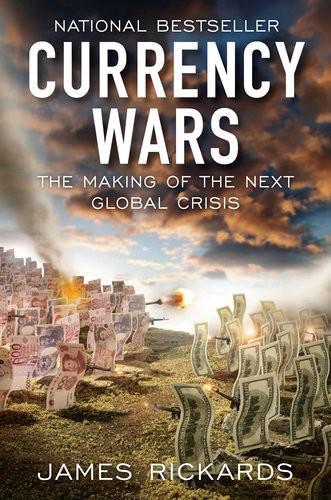
Currency Wars: The Making of the Next Gobal Crisis
by
James Rickards
Published 10 Nov 2011
The best advice for advocates of the multiple reserve currency model is “Be careful what you wish for.” This is an untested and untried model, absent gold or some single currency anchor. The missing-anchor problem may be one reason why the dollar continues to dominate despite its difficulties. Special Drawing Rights Perhaps no feature of the international monetary system is more shrouded in mystery and confusion for the nonexpert than the special drawing right, or SDR. This should not be the case, because the SDR is a straightforward device. The SDR is world money, controlled by the IMF, backed by nothing and printed at will. Once the IMF issues an SDR, it sits comfortably in the reserve accounts of the recipient like any other reserve currency.
…
If the price of gold was too low, the problem was not a shortage of gold but an excess of paper money in relation to gold. This excess money was reflected in rising inflation in the United States, the United Kingdom and France. In 1969, the IMF took up the “gold shortage” cause and created a new form of international reserve asset called the special drawing right, or SDR. The SDR was manufactured out of thin air by the IMF without tangible backing and allocated among members in accordance with their IMF quotas. It was promptly dubbed “paper gold” because it represented an asset that could be used to offset balance of payments deficits in the same manner as gold or reserve currencies.
…
Yet mainstream economists and central bankers alike are well aware of dollar weakness and the risks to international monetary stability from the new currency wars. Taking a range of views from the conventional to the cutting-edge, we can foresee four outcomes in prospect for the dollar—call them The Four Horsemen of the Dollar Apocalypse. In order of disruptive potential from smallest to greatest, they are: multiple reserve currencies, special drawing rights, gold and chaos. Multiple Reserve Currencies A country’s reserves are something like an individual’s savings account. An individual can have current income from a job and have various forms of debt, yet still maintain some savings for future use or a rainy day. These savings can be invested in stocks and commodities or just left in the bank.
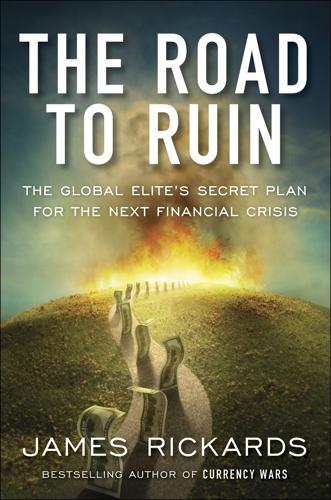
The Road to Ruin: The Global Elites' Secret Plan for the Next Financial Crisis
by
James Rickards
Published 15 Nov 2016
Either Treasury’s lawyers didn’t think of it or Treasury chose not to use it. The use of these emergency economic powers and martial law is a more coercive version of the ice-nine plan to freeze accounts in place. Ice-nine is intended to buy time and restore calm while elites work on plans to allocate losses and reliquefy the system with IMF special drawing rights. If events spin out of control faster than elites expect, more radical measures may be needed. Such measures may involve property confiscation. States of emergency and IEEPA enable outright confiscation by the state. If resistance is encountered, martial law powers backed up by heavily militarized local police, the National Guard, and regular military forces will carry out the president’s executive orders.
…
A liquidity injection of the kind seen in 1998 and 2008 will not suffice because central bank balance sheets are stretched. There will be little time to respond. Ice-nine account freezes will be used to buy time while global elites convene an international monetary conference. They will attempt to use special drawing rights (SDRs) issued by the IMF to refloat the system. SDRs might work. But a more likely outcome is that citizens will see through the sham of resolving a paper money crisis with more paper money. Investors will grow impatient with ice-nine. They will want their money back. The money riots will begin.
…
The agenda thrives today in institutions with anodyne names like United Nations and International Monetary Fund. The agenda is simple: world money, world taxation, and world order. World Money World money is not a new concept; it has been used throughout history. World money is gold. The elite agenda is to hoard gold and substitute special drawing rights as the currency of world trade and finance. Other forms of money, including clamshells, feathers, and paper, have been used at certain times and places with tribal consent, or force of law. Any medium can be money based on confidence in its value in some future exchange. Yet gold is the only money good at all times, and all places, and is therefore true world money.
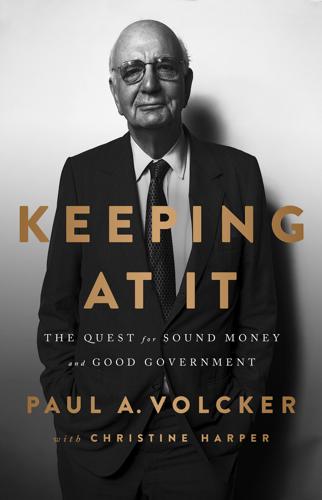
Keeping at It: The Quest for Sound Money and Good Government
by
Paul Volcker
and
Christine Harper
Published 30 Oct 2018
That could not last for long. Another, more systematic, step we could take was to propose activation of the recently agreed special drawing rights, the culmination of Joe Fowler’s contingency planning speech to the Virginia Bar. Even that seemingly modest step was questioned by continental Europeans, habitually concerned that the United States was trying by one device or another to escape monetary discipline. I promptly set off to sell the idea of activating these new special drawing rights, traveling right around the world. We succeeded, but with a reduced amount: $3.5 billion of the “paper gold” in year one and $3 billion in each of the next two.
…
With President Johnson’s approval, he wanted to get a discussion started. He would simply test out the idea as a form of “contingency planning.” It took time but, three years after I left the Treasury, he pulled it off. It would fall to me to activate the new official reserve assets (with the awkward name of “special drawing rights”) when, as under secretary for monetary affairs, I faced a deepening dollar crisis. Later in the fall of 1965, Fowler became deeply concerned about a warning he had received from Fed chairman Martin. The Fed planned to raise its discount rate, the rate the Fed charges banks for short-term loans, with the presumed effect of raising all market rates.
…
From time to time, I prepared him for some now long-forgotten testimony before congressional committees. Members from both parties invariably welcomed him with respect. I joined him regularly in the advisory committee meetings that Secretary Fowler had developed to advise, or at least support, the new international agreement creating special drawing rights (SDRs). Over the years, David led important nongovernmental institutions, notably the prestigious Council on Foreign Relations in New York, and the Trilateral Commission, which he essentially founded in the early 1970s (and to which I return in a later chapter). It was not a coincidence that I became active in both organizations.
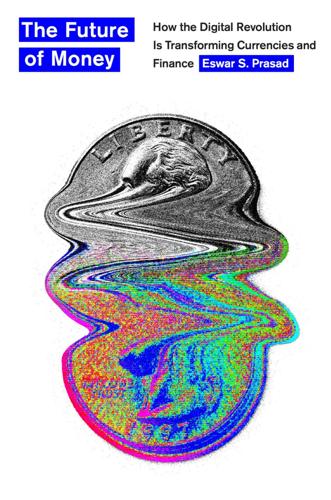
The Future of Money: How the Digital Revolution Is Transforming Currencies and Finance
by
Eswar S. Prasad
Published 27 Sep 2021
A Special Safe Haven SDRs as Reserves The IMF was established in 1944 but formally began operating in 1945. SDR allocations are reported in “Special Drawing Right (SDR),” International Monetary Fund, March 24, 2020, https://www.imf.org/en/About/Factsheets/Sheets/2016/08/01/14/51/Special-Drawing-Right-SDR. Data on global foreign exchange reserves are obtained from the IMF’s COFER database. Is the SDR a Currency? For details about the SDR, including the text quoted in this section, see “Special Drawing Right (SDR),” International Monetary Fund, March 24, 2020, https://www.imf.org/en/About/Factsheets/Sheets/2016/08/01/14/51/Special-Drawing-Right-SDR. The announcement of the renminbi’s inclusion in the IMF’s SDR basket, which took effect on October 1, 2016, is available at “IMF Adds Chinese Renminbi to Special Drawing Rights Basket,” International Monetary Fund, September 30, 2016, https://www.imf.org/en/News/Articles/2016/09/29/AM16-NA093016IMF-Adds-Chinese-Renminbi-to-Special-Drawing-Rights-Basket.
…
The announcement of the renminbi’s inclusion in the IMF’s SDR basket, which took effect on October 1, 2016, is available at “IMF Adds Chinese Renminbi to Special Drawing Rights Basket,” International Monetary Fund, September 30, 2016, https://www.imf.org/en/News/Articles/2016/09/29/AM16-NA093016IMF-Adds-Chinese-Renminbi-to-Special-Drawing-Rights-Basket. What is the source of the IMF’s hard currency that is used to honor its obligations to countries who may want to exchange their SDRs? The major countries whose currencies make up the SDR basket commit to providing their currency to the IMF to finance such loans, with the IMF guaranteeing repayment and offering the supplier countries a small interest rate for using their currencies.
…
The burning question this discussion brings up regards who, or what country, would be in charge of issuing such a global currency, ideally in digital form, for that would add to its attraction. To some observers, the answer is hiding in plain sight. A Special Safe Haven There is already a candidate for the coveted title of SHC, which would also go partway toward satisfying the proponents of a single global currency—the rather infelicitously named Special Drawing Rights (SDRs) issued by the IMF. What’s more, SDRs are digital. SDRs as Reserves The IMF was founded (along with its sister organization, the World Bank) in 1944 to help countries manage their external finances. This multilateral institution now counts nearly all countries in the world as its members.
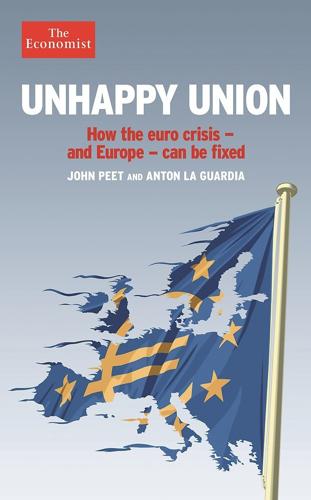
Unhappy Union: How the Euro Crisis - and Europe - Can Be Fixed
by
John Peet
,
Anton La Guardia
and
The Economist
Published 15 Feb 2014
He urged the Europeans to act decisively, and concentrated his efforts on trying to convince Germany to enhance the European firewall. If the ECB persisted in refusing to intervene in an unlimited manner (for example, by issuing the EFSF a banking licence), how about contributing the Europeans’ unused allocations of “special drawing rights”? SDRs are created by the IMF as a reserve asset, a sort of virtual gold, and their supply was greatly boosted in 2009 to give countries extra liquidity in the financial crisis. Now the tables were turned on Merkel. The idea was firmly blocked by the Bundesbank, which held Germany’s allocation and regarded their use as tantamount to printing money.
…
(eds), The Delphic Oracle on Europe, Oxford University Press, 2011 Tsoukalis, L., The Unhappy State of the European Union, Policy Network, March 2014 Van Middelaar, L., The Passage to Europe, Yale University Press, 2013 Appendix 4 How The Economist saw it at the time May 1st–7th 2010 July 10th–16th 2010 November 20th–26th 2010 December 4th–10th 2010 January 15th–21st 2011 March 12th-18th 2011 June 11th-17th 2011 June 25th-July 1st 2011 October 29th-November 4th 2011 November 5th-11th 2011 November 12th-18th 2011 November 26th-December 2nd 2011 February 18th–24th 2012 March 31st–April 6th 2012 May 19th–25th 2012 May 26th-June 1st 2012 July 28th-August 3rd 2012 August 11th-17th 2012 November 17th-23rd 2012 March 23rd-29th 2013 May 25th–31st 2013 September 14th–20th 2013 October 26th-November 1st 2013 January 4th-10th 2014 Index 1974–75 global recession 10 A accession treaties 112 accountability 125–129, 162 Alliance of Liberals and Democrats for Europe (ALDE) 130–131 Alogoskoufis, George 42 Amsterdam treaty 111–112, 193 Anastasiades, Nicos 2, 86–88 Anglo Irish Bank 53 Ansip, Anders 104 Arab spring 145–146 Argentina 5, 50 Armenia 149 Ashton, Catherine 28, 43, 144 Asmussen, Jörg 51, 82 Austria 111, 127 influence 108 interest rates 93 Azerbaijan 149 Aznar, José Maria 17 B Bagehot, Walter 9 bail-in rules 83, 90–91, 165 see also Cyprus bail-outs national approval requirement 127 no-bail-out rule 45, 162, 163–165 Balkans war 143 Bank of Cyprus 86–87 Bank of England 47, 157 bank recapitalisation 58–59, 74–77, 84 Bankia 72 banking sector characteristics 35 banking supervision see financial supervision banking union 23, 74–75, 77, 83–85, 90–92, 106, 165, 195 see also deposit guarantees; financial supervision Barnier, Michel 41, 138 Barroso, José Manuel early days of crisis 41 European Commission 97, 98, 141, 172 Greece 3, 78 Italy 63 Batista, Paulo Nogueira 46 Belarus 149 Belgium 17, 100, 127 Berlusconi, Silvio euro currency view 151 Italy’s failure to reform 59, 60, 62–63 People of Freedom party (PdL) 107 resignation 64 Black Wednesday 16–17 Blair, Tony 28, 112 BNP Paribas 40 Bolkestein directive 137 bond yields 37, 38, 61, 70, 89 bond spreads 37, 42, 70, 80, 88 Bootle, Roger 1 Bowles, Sharon 98, 129 Brandt, Willy 10 Bretton Woods 9–10 Brown, Gordon 24, 41, 48, 102, 112, 144 Bruegel think-tank 35, 74, 163, 166 budget deficits Maastricht ceiling 15 timescales for meeting targets 88–89 see also stability and growth pact budgets annual, European 21, 27, 118 central 13, 168–170 federal 164, 168 fiscal capacity 84 Bulgaria 108, 113, 124, 126, 147 Bundesbank 16, 23, 157 C Cameron, David 14, 17, 64–65, 117–119, 132, 140 Cannes G20 summit (2011) 62–64 Capital Economics 1 Cassis de Dijon judgment 21 Catalonia 178 CEBS (Committee of European Banking Supervisors) 35 central banks, national 22–23 Centre for European Policy Studies 34 Centre for European Reform 34 CFSP (Common Foreign and Security Policy) 142, 144 China 33, 139, 167 Chirac, Jacques 18, 23, 100, 127 Christofias, Demetris 86 Churchill, Winston 7, 115, 161 Clark, Christopher 178 climate change 135–136 Clinton, Hillary 144 Cockfield, Arthur 13 Committee of European Banking Supervisors (CEBS) 35 Committee of Permanent Representatives (COREPER) 20 Committee of Regions 21 common fisheries policy 100, 138 Common Foreign and Security Policy (CFSP) 142, 144 community method 19, 21–22 Competitiveness Pact see Euro Plus Pact complacency pre-crisis 36–37 Constâncio, Vítor 34 constitution proposals 26–27 convergence criteria 14–16, 41, 112, 193 COREPER (Committee of Permanent Representatives) 20 COSAC (Conference of Community and European Affairs Committees of Parliaments of the European Union) 133 Council of Ministers 20, 121, 130 Council of the European Union see Council of Ministers Court of Auditors 21 Court of First Instance 21 Crafts, Nicholas 9 credit ratings (countries) 69, 77–78, 108 Crimea 150 Croatia 113, 143, 147 current-account (im)balances 25, 31, 88–89, 167–168 customs union, German 9 Cyprus accession 147 bail-out 2, 85–88 entry to euro 112 finances pre-crisis 30 Cyprus Popular Bank (Laiki) 86–88 Czech Republic 113, 118 D Dayton agreement 143 de Gaulle, Charles 9, 22, 96 de Larosière, Jacques 41, 74 Deauville meeting between Sarkozy and Merkel 51–52, 102 debt mutualisation 74, 103, 166–167 defence and security 8, 143, 145 deflation 92 Delors, Jacques 11, 37, 97 Delpla, Jacques 167 democratic accountability 125–129, 162 democratic deficit 121, 129–132, 162–163, 171–172 Denmark European participation 112 justice and home affairs (JHA) 111, 139 ministerial accountability 133 opt-outs 139 referendums 16, 27, 132 shadowing of euro 113 single currency opt-out 110, 115 UK sympathies 119 deposit guarantees 5, 40–41, 74, 77, 91 Deutschmark 10, 12, 16 devaluation, internal 31, 65–66 Dexia 72 Dijsselbloem, Jeroen 24, 87 double majority voting 20, 114 Draghi, Mario 156 appointment as ECB president 23, 68 crisis-management team 2 demand for fiscal compact 64 Long Term Refinancing Operations (LTRO) 68–70 outright monetary transactions (OMT) 78–81 pressure on Berlusconi 59 “whatever it takes” London speech 79 Duisenberg, Wim 23 E e-commerce 137 east–west divide 108 ECB (European Central Bank) bond-buying 47–49, 59–60 crisis-management planning 2, 4 delays 156 European System of Central Banks 22 liquidity provision 40–42, 68–70 outright monetary transactions (OMT) 79–81, 164, 175–176 role and function 22–24, 39–40, 170–171 supervision 6, 99, 175, 195 troika membership 160–161 EcoFin meetings 20, 114 Economic and Financial Committee 20 economic and monetary union (EMU) 11, 112 Economic and Social Committee 21 economic imbalances 30–34 The Economist on ECB responsibilities 15 fictitious memorandum to Angela Merkel 1 ECSC (European Coal and Steel Community) 7–8 EEAS (European External Action Service) 142, 144 EEC (European Economic Community) 8 EFSF (European Financial Stability Facility) 26, 48, 55, 60–61, 81, 194 see also ESM (European Stability Mechanism) EFSM (European Financial Stabilisation Mechanism) 48 Eiffel group 120, 129, 164 elections, European 121, 129–130 Elysée treaty 100 emissions-trading scheme (ETS) 135–136 EMS (European Monetary System) creation of 11 exchange-rate mechanism 16 membership 15 EMU (economic and monetary union) 11, 112 EMU@10 36 energy policies 136 enhanced co-operation 111 enlargement 33, 146–147 environment summits 135 Erdogan, Recep Tayyip 148 ESM (European Stability Mechanism) 194 establishment 26, 55, 80–81 operations 58, 75, 76, 91 Estonia 65, 108 ETS (emissions-trading scheme) 135–136 EU 2020 strategy 137 euro break-up contingency plans 2–3 convergence criteria 14–16, 41, 112, 193 crash danger 47–48 introduction of 4, 18 notes and coins 18 special circumstances 3–4 euro crisis effect on world influence 143–146 errors 155–161 focus of attention 135–141 Euro Plus Pact 55, 195 euro zone 4 economic dangers 175–178 increasing significance of institutions 113–114, 120 performance compared with US 154–155 political dangers 175–178 political integration 125 trust 173 Eurobonds 54, 59, 74, 166–167 Eurogroup of finance ministers 24, 114 European Banking Authority 114, 195 European Central Bank (ECB) bond-buying 47–49, 59–60 crisis-management planning 2, 4 delays 156 European System of Central Banks 22 liquidity provision 40–42, 68–70 outright monetary transactions (OMT) 79–81, 164, 175–176 role and function 22–24, 39–40, 170–171 supervision 6, 99, 175, 195 troika membership 160–161 European Coal and Steel Community (ECSC) 7–8 European Commission commissioners 19, 172 errors 160 future direction 171–172 influence and power 96–97, 99, 119, 125 intrusiveness 127, 140–141 organisation 19 presidency 131, 144 proposals for economic governance 50 European Community 12 European Council 20, 98–99 European Court of Human Rights 21 European Court of Justice 21 European Defence Community 8 European Economic Community (EEC) 8 European External Action Service (EEAS) 142, 144 European Financial Stabilisation Mechanism (EFSM) 48 European Financial Stability Facility (EFSF) 26, 48, 55, 60–61, 81, 194 see also European Stability Mechanism (ESM) European Financial Stability Mechanism 26 see also European Stability Mechanism (ESM) European Investment Bank 21 European Monetary Institute 22 European Monetary System (EMS) creation of 11 exchange-rate mechanism 16 membership 15 European Parliament 20–21, 97–98, 99, 100, 119, 121, 129–132, 171 European People’s Party 117, 127, 130–131 European Political Co-operation 142 European semester 25, 195 European Stability Mechanism (ESM) 194 establishment 26, 55, 80–81 operations 58, 75, 76, 91 European Systemic Risk Board 41 European Union driving forces for monetary union 12–13 expansion 26 historical background 7–12 treaty making 26–28 world influence 140, 142–150 European Union Act (2011) 117, 132 Eurosceptics 13, 123 Finns Party 124 Jobbik 125 League of Catholic Families 125 National Front 124 Party of Freedom (PdL) 124 UK Independence Party (UKIP) 118, 125, 140 excessive deficit procedure 24, 88–89, 194, 195 exchange-rate systems 3, 9–11 exchange rates 164 F Farage, Nigel 98, 118 Federal Deposit Insurance Corporation (FDIC) 77 Federal Reserve (US) 23, 47, 48, 157 federalism 19, 110, 116, 161–165, 168–170, 177–178 financial integration 35–36 financial supervision 195 ECB 6, 99, 175, 195 Jacques de Larosière proposals 41 national 23, 35 single supervisor 76–77, 83–84, 90 Finland accession 26, 111 Finns Party 124 influence 108 ministerial accountability 133 fiscal capacity 84 fiscal compact treaty 25–26, 64–65, 118, 194–195 fiscal policy, focus on 30–31 Five Star Movement 124, 126 fixed exchange-rate systems 3, 9–10 Foot, Michael 116 forecasts, growth 92 foreign policy 142–143 Fouchet plan 22 France credit rating 69, 103 current-account balance 168 EMS exchange-rate mechanism 16 excessive deficit procedure 89 GDP growth 32 and Greece 44 influence 100–104, 142–143 Maastricht deal 12, 16 public debt 159 public opinion of EU 123, 124 single currency views 16–17 unemployment 159 veto of UK entry 115 vote to block European Defence Community 8 freedoms of movement 8, 13 G Gaulle, Charles de 9, 22, 96 Gazprom 136 GDP growth 32 Georgia 149 Germany 2013 elections 90, 106, 125 bond yields 37, 89 Bundesbank 16, 23, 157 constitutional (Karlsruhe) court 45, 95, 128, 158 credit rating 69, 77–78 crisis management errors 155–156 current-account surplus 89, 105, 167–168 demands post Greek bail-out 50–51 economic strengths and weaknesses 14 GDP growth 32 and Greece 44 influence 100–106 Maastricht deal 12, 15–16 national control and accountability 128, 133 parliamentary seats 100 political parties 93, 125 public debt 159 public opinion of EU 123 unemployment 159 unification 16 Zollverein 9 Giscard d’Estaing, Valéry 11, 18, 26, 100 Glienicker group 163, 170 gold standard 9–10 Golden Dawn 124 government spending (worldwide) 4 governments, insolvency of 50 great moderation 31 Greece 2012 election 73, 126 bail-out deal 45–47, 56–58, 65–67, 70, 158 bond yields 37, 61–62 current-account balance 168 debt crisis 42–45 euro membership 18, 112, 115 finances post bail-out 93–94 finances pre-crisis 30, 71 GDP growth 32 potential euro exit 1–5, 81–83 public debt 159, 166 public opinion of EU and euro 113, 123, 124 referendum on bail-out 2, 61–62 unemployment 159 Gros, Daniel 34 H Hague, William 151 Haider, Jörg 127 Hamilton, Alexander 162, 167 Heath, Edward 10, 116 Heisbourg, François 104 Hollande, François 73–74, 89, 103–104, 127 proposed reforms 177 Hungary 41, 113, 126, 147 Hypo Real Estate 41 I Iceland 53, 147 ideological differences 114–115 IKB Deutsche Industriebank 40 immigration 139–140, 146, 147 impossible trinity 13 inter-governmentalism 96, 128, 174 interest rates 93, 164 internal devaluation 31, 65–66 International Monetary Fund (IMF) banking union 74 crisis-management planning 2, 4–5 Cyprus 86–87 errors 160–161 euro zone support 48 Greece 44–46, 56–57, 66, 83, 93–95, 160 Latvia 65 rainy-day funds 169–170 special drawing rights (SDR) 63 Iraq 143 Ireland 89, 110 bail-out 53–54, 56, 57, 89 bank crises 40, 71 bond yields 37, 47, 53, 61, 89 current-account balance 168 finances pre-crisis 30 GDP growth 32 influence 107 opt-outs 111, 139 public debt 159, 166 public opinion of EU 123 referendums 27, 28, 132 unemployment 159 Italy 2013 elections 107, 124, 126 bond yields 37, 61, 89 convergence criteria 17 current-account balance 168 danger of collapse 59 EMS exchange-rate mechanism 16 excessive deficit procedure 89 GDP growth 32 influence 100, 104, 107 interest rates 93 public debt 159, 166 public opinion of EU 123 single currency views 17 unemployment 159 J Jenkins, Roy 11 Jobbik 125 Juncker, Jean-Claude 98, 104, 177 candidate for Commission Presidency 131 EU 2005 budget crisis 28 Eurobonds 54 Eurogroup president 24 justice and home affairs (JHA) 139 K Karamanlis, Kostas 42 Karlsruhe constitutional court 45, 95, 128, 158 Kauder, Volker 105 Kerry, John 144 Kohl, Helmut 12, 18, 100 L labour markets 14, 33–34 Lagarde, Christine 51, 58, 62, 92 Laiki 86–88 Lamers, Karl 111 Lamont, Norman 17 Larosière, Jacques de 41, 74 Latin Monetary Union 9 Latvia 41, 65, 67, 88, 108 Lawson, Nigel 16 League of Catholic Families 125 legislative path 21–22 Lehman Brothers, ECB reaction to collapse 4 Letta, Enrico 107–108 Libya 143, 145 Lipsky, John 57 Lisbon treaty 28, 45, 194 foreign policy 142 institutions 20, 131 justice and home affairs (JHA) 139 subsidiarity 133 voting 20, 114 Lithuania 88, 113, 153 Long Term Refinancing Operations (LTRO) 68–70, 72 Luxembourg 77–78, 100, 108, 169 Luxembourg compromise 97 M Maastricht treaty 11–12, 15, 22, 142, 193 opt-outs and referendums 16, 110–111 MacDougall report (1977) 13, 169 Major, John 12, 111, 116 Malta 100, 112 Maroni, Roberto 34 Mayer, Thomas 1 McCreevy, Charlie 41 MEPs 20–21, 130 Merkel, Angela 2013 re-election 90 banking union 74–77 Cannes G20 summit (2011) 63–64 crisis response 40–41, 44 European constitution 28 fictitious memorandum to 1 future direction 178 power and influence 89, 102–106, 153 Sarkozy collaboration 60, 61–62, 102–103 support for Cyprus 86 support for Greece 5, 45, 49–52, 81–82 support for UK 118–119 union method 22, 128 voter support 125 Messina conference 8, 115 migration 139–140, 146, 147 Miliband, David 144 Mitterrand, François 11, 12, 18, 100 Mody, Ashoka 163 Moldova 149 Monnet, Jean 8, 152 Montebourg, Arnaud 104 Montenegro 147 Monti, Mario 64 influence 70, 75–76, 107 A New Strategy for the Single Market (2010) 137–138 Morocco 146 Morrison, Herbert 8 Morsi, Muhammad 145 Moscovici, Pierre 75 multi-annual financial framework 21, 27, 118 Mundell, Robert 12–13 mutualisation of debt 74, 103, 166–167 N national budgets 89, 125 National Front 124 NATO defence spending targets 145 European security 8 membership 110 Netherlands credit rating 77–78 excessive deficit procedure 89 influence 100, 108 ministerial accountability 133 UK sympathies 119 Nice treaty 194 no-bail-out rule 45, 162, 163–165 north–south divide 33–34, 108 Northern Rock 40 notes and coins 18 Nouy, Danièle 90 Nuland, Victoria 149 O Obama, Barack 63 official sector involvement (OSI) 83 OMT (outright monetary transactions) 79–81, 164, 175–176 Germany’s constitutional court judgment 95, 128 optimal currency-area theory 12–13, 14–15 Orban, Viktor 126 Osborne, George 117, 119 OSI (official sector involvement) 83 outright monetary transactions (OMT) 79–81, 164, 175–176 Germany’s constitutional court judgment 95, 128 P Pact for the Euro see Euro Plus Pact Papaconstantinou, George 43 Papademos, Lucas 64 Papandreou, George 56, 60 election 43 Greek referendum 61–62 resignation 2, 64 Party of Freedom 124 Poland 109, 113 Policy Exchange 1 political parties 124–125, 139–140 political union 10, 12, 133–134 Pompidou, Georges 10 Poos, Jacques 143 Portugal 110 bail-out 54, 57, 89–90 bond yields 37, 47, 53, 61, 89 public opinion of EU and euro 113 power, balance of 99–101 price stability goal of ECB 23 private-sector involvement (PSI) in debt restructuring 51–52 Prodi, Romano 17, 25, 97 Progressive Alliance of Socialists and Democrats (S&D) 130–131 public debt 15, 158–159 see also sovereign debt public opinion of EU and euro 121–124 Putin, Vladimir 149–150 Q qualified-majority voting 13, 20, 99, 121 negative qualified-majority voting 25, 195 quantitative easing (QE) 47, 15 R Rajoy, Mariano 70, 75–76, 127 recapitalisation, bank 58–59, 74–77, 84 redenomination 3–4, 153–154, 175 Reding, Viviane 139 referendums 27, 28, 121–122, 132 REFIT initiative 172 Regling, Klaus 26 Renzi, Matteo 107–108 rescue fund see European Stability Mechanism (ESM) resolution mechanism 90–91, 165, 195 single resolution mechanism (SRM) 195 single supervisory mechanism (SSM) 195 Romania 41, 108, 113, 124, 126, 147 Rome treaty 8, 97, 110, 193 Rösler, Philipp 78 Rueff, Jacques 9 Rumsfeld, Donald 143 Russia, influence on Ukraine 149–150 Rutte, Mark 77 S Samaras, Antonis 2, 78, 82, 93–94 Santer, Jacques 97 Sarkozy, Nicolas crisis response 40–41, 44 economic governance 49–50 European constitution 28 LTROs and the Sarkozy trade 69 Merkel collaboration 51–52, 60, 61–62, 102–103 Schäuble, Wolfgang 62, 75, 84, 90–91, 106, 111, 154 Schengen Agreement 110, 111–112 Schmidt, Helmut 11, 100 Schröder, Gerhard 18, 101, 127 Schulz, Martin 131 Schuman Day 8 Schuman, Robert 7–8 Scotland 112, 178 SDR (special drawing rights) 63 Securities Market Programme (SMP) 48, 79 services directive 34 Shafik, Nemat 65 Sikorski, Radek 109 Simitis, Costas 18 Simms, Brendan 179 single currency benefits 152 club within a club 112 driving forces 12–14 importance of 113 vision for 9 see also euro Single European Act 13, 193 single market 4, 137–138, 174–175 Sinn, Hans-Werner 101 six-pack 25, 50, 195 Slovakia 112 adoption of euro 41 influence 108 Slovenia 88–89, 112 influence 108 SMP (Securities Market Programme) 48, 79 snake in the tunnel 10 Solana, Javier 142 sovereign debt 165–166 see also public debt Spain 110 bail-out 70–73, 89 bank recapitalisation 84 bond yields 37, 89 CDS premiums 72 current-account balance 168 danger of collapse 59 excessive deficit procedure 89 finances pre-crisis 30 GDP growth 32 influence 107 public debt 159 public opinion of EU 123, 124 single currency views 17 unemployment 159 special drawing rights (SDR) 63 stability and growth pact 18, 24, 29, 50–51, 127, 194 Stark, Jürgen 59, 106 Steinbrück, Peer 43 Strauss-Kahn, Dominique 24, 44, 57 stress tests, bank 72, 175 subsidiarity 133, 141 Sweden 109, 111, 112 euro opt-out 18, 115 UK sympathies 119 Syria 145 Syriza 124 T Target II 157 Thatcher, Margaret 27, 110, 116 third energy package 136 Tilford, Simon 34 Tindemans, Leo 111 trade policy 138 Transatlantic Trade and Investment Partnership (TTIP) 138–139 treaty making and change 26–27, 173–174 Treaty of Amsterdam 111–112, 193 Treaty of Lisbon 28, 45, 194 foreign policy 142 institutions 20, 131 justice and home affairs (JHA) 139 subsidiarity 133 voting 20, 114 Treaty of Nice 194 Treaty of Rome 8, 97, 110, 193 Treaty on European Union (Maastricht treaty) 11–12, 15, 22, 142, 193 opt-outs and referendums 16, 110–111 Treaty on Stability, Co-ordination and Governance (TSCG) see fiscal compact treaty Tremonti, Giulio 54, 60 Trichet, Jean-Claude 151, 156 bond-buying 47–48, 52–53 crisis-management planning 2 early warnings 39–40 ECB president 23 IMF 44 Italy 59 True Finns 124 Turkey 132, 147, 148 Tusk, Donald 109, 114 two-pack 25, 89, 195 U UK Independence Party (UKIP) 118, 125, 140 Ukraine 149–150, 179–180 unemployment 158–159, 170 union method 19, 22 United Kingdom current-account balance 168 economic strengths and weaknesses 14 EMS exchange-rate mechanism 16 euro crisis reaction 117–118 euro membership 112 European budget contribution 27–28 European involvement 8, 10, 12, 115–119 future status 174–175 influence 100–101, 106, 109, 142–143 initial application to join EEC 9 opt-outs 110–111, 139 public opinion of EU 123 single currency views 17 United Left party 124 United States abandonment of gold standard 10 federalism model 177 foreign policy 143 performance compared with euro zone 154–155 Urpilainen, Jutta 77 V Van Gend en Loos v Nederlandse Administratie der Belastingen (1963) 21 Van Rompuy, Herman 98 crisis-management planning 3 Cyprus 87 European Council presidency 20, 28 Italy 63 roadmap for integration 74–75, 84, 173 support for Greece 43–45 Venizelos, Evangelos 57, 62 Verhofstadt, Guy 131 Véron, Nicolas 35 Vilnius summit 149 von Weizsäcker, Jakob 166 W Waigel, Theo 17–18 Wall Street flash crash 47 Weber, Axel 49, 56, 106 Weidmann, Jens 40, 80, 82 Weizsäcker, Jakob von 166 Werner report (1971) 10 Wilson, Harold 116 Wolfson Prize 1 World Bank 33 World Trade Organisation 138–139 Y Yanukovych, Viktor 149 Z Zapatero, José Luis Rodríguez 59, 62 Zollverein 9 PublicAffairs is a publishing house founded in 1997.
…
(eds), The Delphic Oracle on Europe, Oxford University Press, 2011 Tsoukalis, L., The Unhappy State of the European Union, Policy Network, March 2014 Van Middelaar, L., The Passage to Europe, Yale University Press, 2013 Appendix 4 How The Economist saw it at the time May 1st–7th 2010 July 10th–16th 2010 November 20th–26th 2010 December 4th–10th 2010 January 15th–21st 2011 March 12th-18th 2011 June 11th-17th 2011 June 25th-July 1st 2011 October 29th-November 4th 2011 November 5th-11th 2011 November 12th-18th 2011 November 26th-December 2nd 2011 February 18th–24th 2012 March 31st–April 6th 2012 May 19th–25th 2012 May 26th-June 1st 2012 July 28th-August 3rd 2012 August 11th-17th 2012 November 17th-23rd 2012 March 23rd-29th 2013 May 25th–31st 2013 September 14th–20th 2013 October 26th-November 1st 2013 January 4th-10th 2014 Index 1974–75 global recession 10 A accession treaties 112 accountability 125–129, 162 Alliance of Liberals and Democrats for Europe (ALDE) 130–131 Alogoskoufis, George 42 Amsterdam treaty 111–112, 193 Anastasiades, Nicos 2, 86–88 Anglo Irish Bank 53 Ansip, Anders 104 Arab spring 145–146 Argentina 5, 50 Armenia 149 Ashton, Catherine 28, 43, 144 Asmussen, Jörg 51, 82 Austria 111, 127 influence 108 interest rates 93 Azerbaijan 149 Aznar, José Maria 17 B Bagehot, Walter 9 bail-in rules 83, 90–91, 165 see also Cyprus bail-outs national approval requirement 127 no-bail-out rule 45, 162, 163–165 Balkans war 143 Bank of Cyprus 86–87 Bank of England 47, 157 bank recapitalisation 58–59, 74–77, 84 Bankia 72 banking sector characteristics 35 banking supervision see financial supervision banking union 23, 74–75, 77, 83–85, 90–92, 106, 165, 195 see also deposit guarantees; financial supervision Barnier, Michel 41, 138 Barroso, José Manuel early days of crisis 41 European Commission 97, 98, 141, 172 Greece 3, 78 Italy 63 Batista, Paulo Nogueira 46 Belarus 149 Belgium 17, 100, 127 Berlusconi, Silvio euro currency view 151 Italy’s failure to reform 59, 60, 62–63 People of Freedom party (PdL) 107 resignation 64 Black Wednesday 16–17 Blair, Tony 28, 112 BNP Paribas 40 Bolkestein directive 137 bond yields 37, 38, 61, 70, 89 bond spreads 37, 42, 70, 80, 88 Bootle, Roger 1 Bowles, Sharon 98, 129 Brandt, Willy 10 Bretton Woods 9–10 Brown, Gordon 24, 41, 48, 102, 112, 144 Bruegel think-tank 35, 74, 163, 166 budget deficits Maastricht ceiling 15 timescales for meeting targets 88–89 see also stability and growth pact budgets annual, European 21, 27, 118 central 13, 168–170 federal 164, 168 fiscal capacity 84 Bulgaria 108, 113, 124, 126, 147 Bundesbank 16, 23, 157 C Cameron, David 14, 17, 64–65, 117–119, 132, 140 Cannes G20 summit (2011) 62–64 Capital Economics 1 Cassis de Dijon judgment 21 Catalonia 178 CEBS (Committee of European Banking Supervisors) 35 central banks, national 22–23 Centre for European Policy Studies 34 Centre for European Reform 34 CFSP (Common Foreign and Security Policy) 142, 144 China 33, 139, 167 Chirac, Jacques 18, 23, 100, 127 Christofias, Demetris 86 Churchill, Winston 7, 115, 161 Clark, Christopher 178 climate change 135–136 Clinton, Hillary 144 Cockfield, Arthur 13 Committee of European Banking Supervisors (CEBS) 35 Committee of Permanent Representatives (COREPER) 20 Committee of Regions 21 common fisheries policy 100, 138 Common Foreign and Security Policy (CFSP) 142, 144 community method 19, 21–22 Competitiveness Pact see Euro Plus Pact complacency pre-crisis 36–37 Constâncio, Vítor 34 constitution proposals 26–27 convergence criteria 14–16, 41, 112, 193 COREPER (Committee of Permanent Representatives) 20 COSAC (Conference of Community and European Affairs Committees of Parliaments of the European Union) 133 Council of Ministers 20, 121, 130 Council of the European Union see Council of Ministers Court of Auditors 21 Court of First Instance 21 Crafts, Nicholas 9 credit ratings (countries) 69, 77–78, 108 Crimea 150 Croatia 113, 143, 147 current-account (im)balances 25, 31, 88–89, 167–168 customs union, German 9 Cyprus accession 147 bail-out 2, 85–88 entry to euro 112 finances pre-crisis 30 Cyprus Popular Bank (Laiki) 86–88 Czech Republic 113, 118 D Dayton agreement 143 de Gaulle, Charles 9, 22, 96 de Larosière, Jacques 41, 74 Deauville meeting between Sarkozy and Merkel 51–52, 102 debt mutualisation 74, 103, 166–167 defence and security 8, 143, 145 deflation 92 Delors, Jacques 11, 37, 97 Delpla, Jacques 167 democratic accountability 125–129, 162 democratic deficit 121, 129–132, 162–163, 171–172 Denmark European participation 112 justice and home affairs (JHA) 111, 139 ministerial accountability 133 opt-outs 139 referendums 16, 27, 132 shadowing of euro 113 single currency opt-out 110, 115 UK sympathies 119 deposit guarantees 5, 40–41, 74, 77, 91 Deutschmark 10, 12, 16 devaluation, internal 31, 65–66 Dexia 72 Dijsselbloem, Jeroen 24, 87 double majority voting 20, 114 Draghi, Mario 156 appointment as ECB president 23, 68 crisis-management team 2 demand for fiscal compact 64 Long Term Refinancing Operations (LTRO) 68–70 outright monetary transactions (OMT) 78–81 pressure on Berlusconi 59 “whatever it takes” London speech 79 Duisenberg, Wim 23 E e-commerce 137 east–west divide 108 ECB (European Central Bank) bond-buying 47–49, 59–60 crisis-management planning 2, 4 delays 156 European System of Central Banks 22 liquidity provision 40–42, 68–70 outright monetary transactions (OMT) 79–81, 164, 175–176 role and function 22–24, 39–40, 170–171 supervision 6, 99, 175, 195 troika membership 160–161 EcoFin meetings 20, 114 Economic and Financial Committee 20 economic and monetary union (EMU) 11, 112 Economic and Social Committee 21 economic imbalances 30–34 The Economist on ECB responsibilities 15 fictitious memorandum to Angela Merkel 1 ECSC (European Coal and Steel Community) 7–8 EEAS (European External Action Service) 142, 144 EEC (European Economic Community) 8 EFSF (European Financial Stability Facility) 26, 48, 55, 60–61, 81, 194 see also ESM (European Stability Mechanism) EFSM (European Financial Stabilisation Mechanism) 48 Eiffel group 120, 129, 164 elections, European 121, 129–130 Elysée treaty 100 emissions-trading scheme (ETS) 135–136 EMS (European Monetary System) creation of 11 exchange-rate mechanism 16 membership 15 EMU (economic and monetary union) 11, 112 EMU@10 36 energy policies 136 enhanced co-operation 111 enlargement 33, 146–147 environment summits 135 Erdogan, Recep Tayyip 148 ESM (European Stability Mechanism) 194 establishment 26, 55, 80–81 operations 58, 75, 76, 91 Estonia 65, 108 ETS (emissions-trading scheme) 135–136 EU 2020 strategy 137 euro break-up contingency plans 2–3 convergence criteria 14–16, 41, 112, 193 crash danger 47–48 introduction of 4, 18 notes and coins 18 special circumstances 3–4 euro crisis effect on world influence 143–146 errors 155–161 focus of attention 135–141 Euro Plus Pact 55, 195 euro zone 4 economic dangers 175–178 increasing significance of institutions 113–114, 120 performance compared with US 154–155 political dangers 175–178 political integration 125 trust 173 Eurobonds 54, 59, 74, 166–167 Eurogroup of finance ministers 24, 114 European Banking Authority 114, 195 European Central Bank (ECB) bond-buying 47–49, 59–60 crisis-management planning 2, 4 delays 156 European System of Central Banks 22 liquidity provision 40–42, 68–70 outright monetary transactions (OMT) 79–81, 164, 175–176 role and function 22–24, 39–40, 170–171 supervision 6, 99, 175, 195 troika membership 160–161 European Coal and Steel Community (ECSC) 7–8 European Commission commissioners 19, 172 errors 160 future direction 171–172 influence and power 96–97, 99, 119, 125 intrusiveness 127, 140–141 organisation 19 presidency 131, 144 proposals for economic governance 50 European Community 12 European Council 20, 98–99 European Court of Human Rights 21 European Court of Justice 21 European Defence Community 8 European Economic Community (EEC) 8 European External Action Service (EEAS) 142, 144 European Financial Stabilisation Mechanism (EFSM) 48 European Financial Stability Facility (EFSF) 26, 48, 55, 60–61, 81, 194 see also European Stability Mechanism (ESM) European Financial Stability Mechanism 26 see also European Stability Mechanism (ESM) European Investment Bank 21 European Monetary Institute 22 European Monetary System (EMS) creation of 11 exchange-rate mechanism 16 membership 15 European Parliament 20–21, 97–98, 99, 100, 119, 121, 129–132, 171 European People’s Party 117, 127, 130–131 European Political Co-operation 142 European semester 25, 195 European Stability Mechanism (ESM) 194 establishment 26, 55, 80–81 operations 58, 75, 76, 91 European Systemic Risk Board 41 European Union driving forces for monetary union 12–13 expansion 26 historical background 7–12 treaty making 26–28 world influence 140, 142–150 European Union Act (2011) 117, 132 Eurosceptics 13, 123 Finns Party 124 Jobbik 125 League of Catholic Families 125 National Front 124 Party of Freedom (PdL) 124 UK Independence Party (UKIP) 118, 125, 140 excessive deficit procedure 24, 88–89, 194, 195 exchange-rate systems 3, 9–11 exchange rates 164 F Farage, Nigel 98, 118 Federal Deposit Insurance Corporation (FDIC) 77 Federal Reserve (US) 23, 47, 48, 157 federalism 19, 110, 116, 161–165, 168–170, 177–178 financial integration 35–36 financial supervision 195 ECB 6, 99, 175, 195 Jacques de Larosière proposals 41 national 23, 35 single supervisor 76–77, 83–84, 90 Finland accession 26, 111 Finns Party 124 influence 108 ministerial accountability 133 fiscal capacity 84 fiscal compact treaty 25–26, 64–65, 118, 194–195 fiscal policy, focus on 30–31 Five Star Movement 124, 126 fixed exchange-rate systems 3, 9–10 Foot, Michael 116 forecasts, growth 92 foreign policy 142–143 Fouchet plan 22 France credit rating 69, 103 current-account balance 168 EMS exchange-rate mechanism 16 excessive deficit procedure 89 GDP growth 32 and Greece 44 influence 100–104, 142–143 Maastricht deal 12, 16 public debt 159 public opinion of EU 123, 124 single currency views 16–17 unemployment 159 veto of UK entry 115 vote to block European Defence Community 8 freedoms of movement 8, 13 G Gaulle, Charles de 9, 22, 96 Gazprom 136 GDP growth 32 Georgia 149 Germany 2013 elections 90, 106, 125 bond yields 37, 89 Bundesbank 16, 23, 157 constitutional (Karlsruhe) court 45, 95, 128, 158 credit rating 69, 77–78 crisis management errors 155–156 current-account surplus 89, 105, 167–168 demands post Greek bail-out 50–51 economic strengths and weaknesses 14 GDP growth 32 and Greece 44 influence 100–106 Maastricht deal 12, 15–16 national control and accountability 128, 133 parliamentary seats 100 political parties 93, 125 public debt 159 public opinion of EU 123 unemployment 159 unification 16 Zollverein 9 Giscard d’Estaing, Valéry 11, 18, 26, 100 Glienicker group 163, 170 gold standard 9–10 Golden Dawn 124 government spending (worldwide) 4 governments, insolvency of 50 great moderation 31 Greece 2012 election 73, 126 bail-out deal 45–47, 56–58, 65–67, 70, 158 bond yields 37, 61–62 current-account balance 168 debt crisis 42–45 euro membership 18, 112, 115 finances post bail-out 93–94 finances pre-crisis 30, 71 GDP growth 32 potential euro exit 1–5, 81–83 public debt 159, 166 public opinion of EU and euro 113, 123, 124 referendum on bail-out 2, 61–62 unemployment 159 Gros, Daniel 34 H Hague, William 151 Haider, Jörg 127 Hamilton, Alexander 162, 167 Heath, Edward 10, 116 Heisbourg, François 104 Hollande, François 73–74, 89, 103–104, 127 proposed reforms 177 Hungary 41, 113, 126, 147 Hypo Real Estate 41 I Iceland 53, 147 ideological differences 114–115 IKB Deutsche Industriebank 40 immigration 139–140, 146, 147 impossible trinity 13 inter-governmentalism 96, 128, 174 interest rates 93, 164 internal devaluation 31, 65–66 International Monetary Fund (IMF) banking union 74 crisis-management planning 2, 4–5 Cyprus 86–87 errors 160–161 euro zone support 48 Greece 44–46, 56–57, 66, 83, 93–95, 160 Latvia 65 rainy-day funds 169–170 special drawing rights (SDR) 63 Iraq 143 Ireland 89, 110 bail-out 53–54, 56, 57, 89 bank crises 40, 71 bond yields 37, 47, 53, 61, 89 current-account balance 168 finances pre-crisis 30 GDP growth 32 influence 107 opt-outs 111, 139 public debt 159, 166 public opinion of EU 123 referendums 27, 28, 132 unemployment 159 Italy 2013 elections 107, 124, 126 bond yields 37, 61, 89 convergence criteria 17 current-account balance 168 danger of collapse 59 EMS exchange-rate mechanism 16 excessive deficit procedure 89 GDP growth 32 influence 100, 104, 107 interest rates 93 public debt 159, 166 public opinion of EU 123 single currency views 17 unemployment 159 J Jenkins, Roy 11 Jobbik 125 Juncker, Jean-Claude 98, 104, 177 candidate for Commission Presidency 131 EU 2005 budget crisis 28 Eurobonds 54 Eurogroup president 24 justice and home affairs (JHA) 139 K Karamanlis, Kostas 42 Karlsruhe constitutional court 45, 95, 128, 158 Kauder, Volker 105 Kerry, John 144 Kohl, Helmut 12, 18, 100 L labour markets 14, 33–34 Lagarde, Christine 51, 58, 62, 92 Laiki 86–88 Lamers, Karl 111 Lamont, Norman 17 Larosière, Jacques de 41, 74 Latin Monetary Union 9 Latvia 41, 65, 67, 88, 108 Lawson, Nigel 16 League of Catholic Families 125 legislative path 21–22 Lehman Brothers, ECB reaction to collapse 4 Letta, Enrico 107–108 Libya 143, 145 Lipsky, John 57 Lisbon treaty 28, 45, 194 foreign policy 142 institutions 20, 131 justice and home affairs (JHA) 139 subsidiarity 133 voting 20, 114 Lithuania 88, 113, 153 Long Term Refinancing Operations (LTRO) 68–70, 72 Luxembourg 77–78, 100, 108, 169 Luxembourg compromise 97 M Maastricht treaty 11–12, 15, 22, 142, 193 opt-outs and referendums 16, 110–111 MacDougall report (1977) 13, 169 Major, John 12, 111, 116 Malta 100, 112 Maroni, Roberto 34 Mayer, Thomas 1 McCreevy, Charlie 41 MEPs 20–21, 130 Merkel, Angela 2013 re-election 90 banking union 74–77 Cannes G20 summit (2011) 63–64 crisis response 40–41, 44 European constitution 28 fictitious memorandum to 1 future direction 178 power and influence 89, 102–106, 153 Sarkozy collaboration 60, 61–62, 102–103 support for Cyprus 86 support for Greece 5, 45, 49–52, 81–82 support for UK 118–119 union method 22, 128 voter support 125 Messina conference 8, 115 migration 139–140, 146, 147 Miliband, David 144 Mitterrand, François 11, 12, 18, 100 Mody, Ashoka 163 Moldova 149 Monnet, Jean 8, 152 Montebourg, Arnaud 104 Montenegro 147 Monti, Mario 64 influence 70, 75–76, 107 A New Strategy for the Single Market (2010) 137–138 Morocco 146 Morrison, Herbert 8 Morsi, Muhammad 145 Moscovici, Pierre 75 multi-annual financial framework 21, 27, 118 Mundell, Robert 12–13 mutualisation of debt 74, 103, 166–167 N national budgets 89, 125 National Front 124 NATO defence spending targets 145 European security 8 membership 110 Netherlands credit rating 77–78 excessive deficit procedure 89 influence 100, 108 ministerial accountability 133 UK sympathies 119 Nice treaty 194 no-bail-out rule 45, 162, 163–165 north–south divide 33–34, 108 Northern Rock 40 notes and coins 18 Nouy, Danièle 90 Nuland, Victoria 149 O Obama, Barack 63 official sector involvement (OSI) 83 OMT (outright monetary transactions) 79–81, 164, 175–176 Germany’s constitutional court judgment 95, 128 optimal currency-area theory 12–13, 14–15 Orban, Viktor 126 Osborne, George 117, 119 OSI (official sector involvement) 83 outright monetary transactions (OMT) 79–81, 164, 175–176 Germany’s constitutional court judgment 95, 128 P Pact for the Euro see Euro Plus Pact Papaconstantinou, George 43 Papademos, Lucas 64 Papandreou, George 56, 60 election 43 Greek referendum 61–62 resignation 2, 64 Party of Freedom 124 Poland 109, 113 Policy Exchange 1 political parties 124–125, 139–140 political union 10, 12, 133–134 Pompidou, Georges 10 Poos, Jacques 143 Portugal 110 bail-out 54, 57, 89–90 bond yields 37, 47, 53, 61, 89 public opinion of EU and euro 113 power, balance of 99–101 price stability goal of ECB 23 private-sector involvement (PSI) in debt restructuring 51–52 Prodi, Romano 17, 25, 97 Progressive Alliance of Socialists and Democrats (S&D) 130–131 public debt 15, 158–159 see also sovereign debt public opinion of EU and euro 121–124 Putin, Vladimir 149–150 Q qualified-majority voting 13, 20, 99, 121 negative qualified-majority voting 25, 195 quantitative easing (QE) 47, 15 R Rajoy, Mariano 70, 75–76, 127 recapitalisation, bank 58–59, 74–77, 84 redenomination 3–4, 153–154, 175 Reding, Viviane 139 referendums 27, 28, 121–122, 132 REFIT initiative 172 Regling, Klaus 26 Renzi, Matteo 107–108 rescue fund see European Stability Mechanism (ESM) resolution mechanism 90–91, 165, 195 single resolution mechanism (SRM) 195 single supervisory mechanism (SSM) 195 Romania 41, 108, 113, 124, 126, 147 Rome treaty 8, 97, 110, 193 Rösler, Philipp 78 Rueff, Jacques 9 Rumsfeld, Donald 143 Russia, influence on Ukraine 149–150 Rutte, Mark 77 S Samaras, Antonis 2, 78, 82, 93–94 Santer, Jacques 97 Sarkozy, Nicolas crisis response 40–41, 44 economic governance 49–50 European constitution 28 LTROs and the Sarkozy trade 69 Merkel collaboration 51–52, 60, 61–62, 102–103 Schäuble, Wolfgang 62, 75, 84, 90–91, 106, 111, 154 Schengen Agreement 110, 111–112 Schmidt, Helmut 11, 100 Schröder, Gerhard 18, 101, 127 Schulz, Martin 131 Schuman Day 8 Schuman, Robert 7–8 Scotland 112, 178 SDR (special drawing rights) 63 Securities Market Programme (SMP) 48, 79 services directive 34 Shafik, Nemat 65 Sikorski, Radek 109 Simitis, Costas 18 Simms, Brendan 179 single currency benefits 152 club within a club 112 driving forces 12–14 importance of 113 vision for 9 see also euro Single European Act 13, 193 single market 4, 137–138, 174–175 Sinn, Hans-Werner 101 six-pack 25, 50, 195 Slovakia 112 adoption of euro 41 influence 108 Slovenia 88–89, 112 influence 108 SMP (Securities Market Programme) 48, 79 snake in the tunnel 10 Solana, Javier 142 sovereign debt 165–166 see also public debt Spain 110 bail-out 70–73, 89 bank recapitalisation 84 bond yields 37, 89 CDS premiums 72 current-account balance 168 danger of collapse 59 excessive deficit procedure 89 finances pre-crisis 30 GDP growth 32 influence 107 public debt 159 public opinion of EU 123, 124 single currency views 17 unemployment 159 special drawing rights (SDR) 63 stability and growth pact 18, 24, 29, 50–51, 127, 194 Stark, Jürgen 59, 106 Steinbrück, Peer 43 Strauss-Kahn, Dominique 24, 44, 57 stress tests, bank 72, 175 subsidiarity 133, 141 Sweden 109, 111, 112 euro opt-out 18, 115 UK sympathies 119 Syria 145 Syriza 124 T Target II 157 Thatcher, Margaret 27, 110, 116 third energy package 136 Tilford, Simon 34 Tindemans, Leo 111 trade policy 138 Transatlantic Trade and Investment Partnership (TTIP) 138–139 treaty making and change 26–27, 173–174 Treaty of Amsterdam 111–112, 193 Treaty of Lisbon 28, 45, 194 foreign policy 142 institutions 20, 131 justice and home affairs (JHA) 139 subsidiarity 133 voting 20, 114 Treaty of Nice 194 Treaty of Rome 8, 97, 110, 193 Treaty on European Union (Maastricht treaty) 11–12, 15, 22, 142, 193 opt-outs and referendums 16, 110–111 Treaty on Stability, Co-ordination and Governance (TSCG) see fiscal compact treaty Tremonti, Giulio 54, 60 Trichet, Jean-Claude 151, 156 bond-buying 47–48, 52–53 crisis-management planning 2 early warnings 39–40 ECB president 23 IMF 44 Italy 59 True Finns 124 Turkey 132, 147, 148 Tusk, Donald 109, 114 two-pack 25, 89, 195 U UK Independence Party (UKIP) 118, 125, 140 Ukraine 149–150, 179–180 unemployment 158–159, 170 union method 19, 22 United Kingdom current-account balance 168 economic strengths and weaknesses 14 EMS exchange-rate mechanism 16 euro crisis reaction 117–118 euro membership 112 European budget contribution 27–28 European involvement 8, 10, 12, 115–119 future status 174–175 influence 100–101, 106, 109, 142–143 initial application to join EEC 9 opt-outs 110–111, 139 public opinion of EU 123 single currency views 17 United Left party 124 United States abandonment of gold standard 10 federalism model 177 foreign policy 143 performance compared with euro zone 154–155 Urpilainen, Jutta 77 V Van Gend en Loos v Nederlandse Administratie der Belastingen (1963) 21 Van Rompuy, Herman 98 crisis-management planning 3 Cyprus 87 European Council presidency 20, 28 Italy 63 roadmap for integration 74–75, 84, 173 support for Greece 43–45 Venizelos, Evangelos 57, 62 Verhofstadt, Guy 131 Véron, Nicolas 35 Vilnius summit 149 von Weizsäcker, Jakob 166 W Waigel, Theo 17–18 Wall Street flash crash 47 Weber, Axel 49, 56, 106 Weidmann, Jens 40, 80, 82 Weizsäcker, Jakob von 166 Werner report (1971) 10 Wilson, Harold 116 Wolfson Prize 1 World Bank 33 World Trade Organisation 138–139 Y Yanukovych, Viktor 149 Z Zapatero, José Luis Rodríguez 59, 62 Zollverein 9 PublicAffairs is a publishing house founded in 1997.
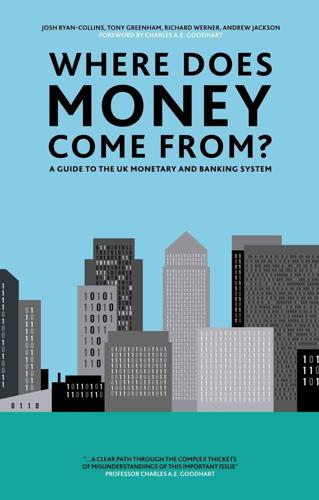
Where Does Money Come From?: A Guide to the UK Monetary & Banking System
by
Josh Ryan-Collins
,
Tony Greenham
,
Richard Werner
and
Andrew Jackson
Published 14 Apr 2012
For example, in 2010 / 2011 it planned to sell £29.2 billion gilts by appointing private banks to sell the bonds on the DMO’s behalf (known as ‘syndication’) and £10 billion through ‘mini tenders’ which address emergency pockets of demand in various gilts. There are also many other types of auction which the DMO may use to sell or buy gilts, although none were planned for 2010-1113. * Special drawing rights (SDRs) are supplementary foreign exchange reserve assets defined and maintained by the International Monetary Fund (IMF). Not a currency, SDRs instead represent a claim to currency held by IMF member countries for which they may be exchanged. See IMF factsheet on Special Drawing Rights, retrievable from http://www.imf.org/external/np/exr/facts/sdr.HTM * In the main these are bonds issued or guaranteed by the governments of the USA, euro area countries and Japan, gold, and SDRs, although other assets are also used.
…
Both interventions were performed by the Bank of England, via the Exchange Equalisation Account (EEA).18 Other than intervening to support a currency, foreign exchange reserves are now held primarily for three reasons. As a precautionary measure – in case of any future changes to exchange rate policy or unexpected shocks. To provide foreign currency services to the Government. To buy, sell and hold Special Drawing Rights (SDRs)*, as required by membership of the International Monetary Fund (IMF).19 Of course, foreign exchange reserves may also be held due to decisions made collectively by consumers and investors: if a country earns more foreign currency on its exports than it spends on imports, foreign exchange reserves will accumulate.
…
This allows the NLF to advance funds to the EEA and for the EEA to repay funds to the NLF.21 Figure A5: Assets and liabilities of the Exchange Equalisation Account 2011-12 31 March 2012 £m 31 March 2011 £m Assets Cash at central banks 1,496 1,512 Items in the course of collection from banks 884 672 Treasury bills 593 488 Debt securities 32,601 29,162 Derivative financial assets 923 782 Reverse repurchase agreements 3,710 2,102 Holdings of IMF Special Drawing Rights 9,266 9,202 Gold 10,374 8,954 Other financial assets 105 254 Total assets 59,952 53,128 Liabilities Deposits by banks - 57 Items in the course of transmission to banks 864 597 Debt securities – short positions 1,212 889 Derivative financial liabilities 533 1,165 Repurchase agreements 3,904 3,223 Other financial liabilities 2 16 SDR allocation 9,822 10,024 Liability to the National Loans Fund 43,615 37,157 Total liabilities 59,952 53,128 Source: HM Treasury 22 Unlike the other main government accounts, the EEA is managed by the Bank of England, not the Treasury.
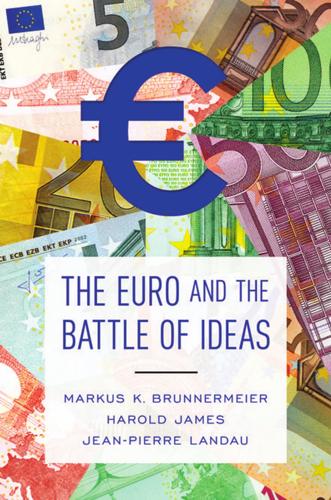
The Euro and the Battle of Ideas
by
Markus K. Brunnermeier
,
Harold James
and
Jean-Pierre Landau
Published 3 Aug 2016
French SDR Push In the second half of 2011, France put an additional proposal on the table: using SDRs to finance the guarantee part of the expanded EFSF. At this stage, the German-French debate became closely intertwined with the G20 French presidency. The focus point for the French initiative was the IMF’s special drawing right (SDR), an instrument originally devised in the context of the global fixed exchange rate regime of the 1960s to provide more liquidity for the international monetary system. SDRs had never in practice played a significant role in the international monetary system. Sarkozy and his advisers believed that an SDR initiative would appeal to the Chinese leadership, as they were unsatisfied by the position of the US dollar in the international monetary system.
…
FROM FRANCE’S GRAND INTERNATIONAL VISION TO GERMAN CONCRETE INVESTMENTS As Chinese economic links with the European economy intensified, China became less interested in enlisting Europe in a grand project of restructuring the international financial architecture and more interested in case-by-case pragmatic intervention. The debate about big visions came at the early stage of the financial crisis. In March 2009, the governor of the People’s Bank of China, Zhou Xiaochuan, published a paper titled “Reform the International Monetary System,” laying out the case for a greater role of special drawing rights (SDR; a synthetic basket currency managed by the IMF) in the international financial system and arguing that the basket of the SDR should also include major emerging market currencies. In 2011, France picked up the idea of including the renminbi in the SDR basket and organized a meeting in China with academics and officials.
…
It encouraged individuals and financial institutions to lend to and invest in the East Asian countries, drawn by high domestic interest rates and returns on investment, and reassured about currency risk by the belief that the IMF would bail them out if the unexpected happened and the exchange pegs broke.”7 On the IMF board, the moral hazard worry was articulated most forcefully and consistently by the German representatives. It was also Germany that successfully blocked a proposal in October 1994 at the annual IMF meeting in Madrid to undertake a general issue of the IMF’s reserve currency, the special drawing right (SDR). As the Germans argued, there was no evidence of a general liquidity shortage that was the condition in the IMF’s amended Articles of Agreement for a new issue.8 The IMF’s liquidity assistance alone is typically not enough to turn a country around by itself and make its debt level sustainable.
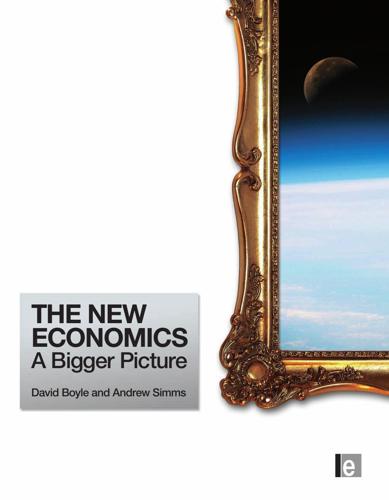
The New Economics: A Bigger Picture
by
David Boyle
and
Andrew Simms
Published 14 Jun 2009
David Boyle Andrew Simms List of Acronyms and Abbreviations CDCU CDFI CDO CEO CHP CND Democs DIY DTQ EBCU Escos GDP GM GPI HPI IMF IP ISEW km Lets LM3 m MDGs MDP MDR-TB mph nef NHS RESOLVE SDRs community development credit union community development finance institution collateralized debt obligation chief executive officer combined heat and power Campaign for Nuclear Disarmament deliberative meeting of citizens do-it-yourself domestic tradable quota emissions-backed currency unit energy service companies gross domestic product genetically modified Genuine Progress Indicator Happy Planet Index International Monetary Fund intellectual property Index of Sustainable Economic Welfare kilometre Local exchange and trading systems Local Money 3 metre Millennium Development Goals Measure of Domestic Progress multi-drug resistant tuberculosis miles per hour New Economics Foundation National Health Service Research Group on Lifestyles Values and Environment special drawing rights xii SERs SIV SROI T-bills TEQ TOES TRIPS WEEE THE NEW ECONOMICS special emission rights structured investment vehicle social return on investment Treasury bills tradeable emissions quota The Other Economic Summit Trade-Related Aspects of Intellectual Property Waste Electrical and Electronic Equipment (Directive) 1 The Economic Problem Man talks of a battle with nature, forgetting that if he won the battle, he would find himself on the losing side.
…
The World Bank might also be more effective if it helped countries create their own money, sustainably and in their own currency, to finance projects, rather than by lending them money in foreign currency that inevitably seeps out of their economy again. Create new international currencies The creation of a new international currency called special drawing rights (SDRs) was 148 THE NEW ECONOMICS agreed at the Rio de Janeiro meeting of the IMF Board of Governors in September 1967. The IMF was given the authority to create more reserve assets through general allocations of SDRs to its members in proportion to their quotas. The SDRs are then exchangeable for other countries’ currencies that can be used as an international means of payment.
…
(John Kenneth) 41, 51 gambling 14–15, 152 Gandhi, Mohandas (Mahatma) 18, 19, 21, 110, 112 Gates, Bill 141 Gates, Jeff 141–2 GDP (gross domestic product) 10, 32, 36–40, 42, 43, 54, 79 alternatives to 40–2, 43 bad measure of success 10, 37, 55, 78 INDEX global 141 UK 4 see also growth genetically modified crops see GM crops Germany 33, 50, 58 Gladwell, Malcolm 68 Global Barter Clubs 57, 58 global commons 113, 148 global currencies 56, 61, 120, 147–8 global greenback 61 global warming 3, 3–4, 115, 155 see also climate change globalization 8, 28, 143, 153 see also interdependence GM (genetically modified) crops 91, 117, 119, 140–1 Goetz, Stephan 124 gold standard 8, 143 Good Life, The (BBC sitcom) 69 goods, local 19, 109, 110 Goodwin, Fred 142 government borrowing 37–8, 49–50, 58, 62, 141 governments 2, 28, 116, 129, 158 creating money 58–9, 62, 90 propping up banking system 6, 7 Graham, Benjamin 120 Grameen Bank 26, 143–4, 153 Great Barrington (Massachusetts) 57, 151–2, 153 Great Depression 3, 36, 57 green bonds 157 green collar jobs 106, 157 Green Consumer Guide, The (Elkington and Hailes, 1988) 26, 69, 72 green economics 23, 100, 117 green energy 26, 97, 102–3, 114, 156, 157 Green New Deal 156–8 green taxation 153 greenhouse gas emissions 3–4, 115, 148 gross domestic product see GDP Gross National Happiness 43 growth 2, 11, 12–13, 23, 36–7, 38–40, 42, 43 185 bad measure of success 10, 158 maximizing 25 and poverty 4, 39–40, 81–2 and progress 39, 78 wealth defined in terms of 32 and well-being 4–5 see also GDP guilds 80, 80–1 happiness 12, 18, 29, 41, 43, 45–6 Happy Planet Index 32–3, 34, 43 Hard Times (Dickens, 1854) 36 HBOS 7 health 46, 72, 78, 96, 115, 129 health costs 117 healthcare 13, 33, 44 hedge funds 5, 7, 97, 120 Helsinki (Finland) 102 HIV/AIDS 70, 111, 135, 148 Honduras 139, 141 house prices 36, 46, 79, 83, 91, 126–7, 151 London 53, 54, 91 see also mortgages Howard, Ebenezer 105, 158 HSBC 5 human interaction 67–8, 74 human needs 20, 24, 67, 86 human rights 110–11, 116, 147 ill-health 35, 38, 46 ‘illth’ 29, 35 IMF (International Monetary Fund) 27, 82, 91, 135–6, 139, 143, 147, 147–8 incomes 24, 37, 43, 44, 78, 79, 81 and happiness 45–6 inequalities 37, 81, 82, 142 of poorest 4, 81, 82, 112, 142 Index of Sustainable Economic Welfare see ISEW India 82, 91, 110, 119, 136, 139–40, 153 indigenous knowledge 82, 117 inequality 4, 81–2, 96, 112–13, 116 inflation 8, 22, 58, 90 information technology 58, 59, 115 186 THE NEW ECONOMICS intellectual property 82, 91, 110, 113, 116, 117 interdependence 111–20, 135–8 Keynes on 19, 109, 110, 115, 143 see also globalization interest 8, 11, 11–12, 58, 77, 157 interest rates 144, 144–5 interest-free money 43, 73, 84, 90 intergenerational equity 25, 117 international bankruptcy 147 International Monetary Fund see IMF investment 14, 45, 53, 60, 104, 118, 137–8 ethical 26, 69–70, 74, 154 involvement 71, 75, 128–30 Iraq 49, 60, 136 ISEW (Index of Sustainable Economic Welfare) 40–1, 43, 78 Islamic banking 58, 90, 146 islands, small 31–2, 33–4 Italy 33, 119–20, 138 Ithaca hours currency 57, 58 It’s a Wonderful Life (film, Capra, 1946) 38 Jacobs, Jane 56, 110, 126 Jaffe, Bernie 126 Japan 26, 50, 91, 113, 119, 128 Jefferson, Thomas 18, 20 Jersey 52, 53 Jones, Allan 103 Jubilee Debt campaign 137 junk bonds 1, 142–3 just-in-time 123–4, 155 Keynes, John Maynard 2, 13–14, 15, 17, 21, 37, 55 on interdependence 19, 109, 110, 115, 143 international currency 61, 120 on local production 19, 109, 110 on ‘practical men’ as ‘slaves of some defunct economist’ 10, 35, 67, 87, 159 Keynesian economics 8, 18, 22, 27, 28 Kinney, Jill 130 Knowsley (Merseyside) 104 Kropotkin, Peter 18 Krugman, Paul 52 land 19, 82, 96 land tax 43 landfill 97, 98, 100, 107 Layard, Richard 41 Lehigh Hospital (Pennsylvania) 129 Letchworth Garden City (Hertfordshire) 105 lets (local exchange and trading systems) 57 liberalism 18, 19, 27 Lietaer, Bernard 56, 61, 120 life 19, 29, 55, 69, 86, 91 need for meaning 42, 75 life expectancy 31, 32–3, 82 life poverty 82–3 life satisfaction 31, 33, 41, 42 Lima (Peru) 130–1 Linton, Michael 57, 58 Living Economy, The (Ekins, 1986) 24–5 LM3 (Local Money 3) 60, 104–5 loans see debt Local Alchemy programme 152–3 local circulation of money 103–5, 107, 124, 151–2 local currencies 26, 56, 57, 58, 59, 60, 151–2, 153 local economies 26, 81, 85, 86, 105–7, 118, 124, 133 local exchange and trading systems (lets) 57 local food 2, 118, 119–20, 151 local governments 6, 44, 60 local life 4, 81, 158 Local Money 3 see LM3 local production 109, 116, 118 local savings schemes 61 local shops 75, 82–3, 104, 124, 124–5, 126, 151 supermarkets and 80, 105, 125 local wealth 14, 53–4 localization 155–6, 159 London 52, 53, 61, 97, 102, 103 house prices 53, 54, 91 traffic speed 65–6 INDEX London Underground 147 Lutzenberger, Jose 26 Macmillan Cancer Care 88–9 McRobie, George 22, 24 mainstream 4–5, 26, 154, 159–60 see also economics Malawi 135–6, 137 Malaysia 51 Manchester United 155 manipulated debt 139–41 markets 10, 12, 51, 70, 158 financial 1–2, 52, 53, 55, 138, 154–5 free 22, 85, 112–13 new economics and 67, 72–5, 85 Marsh Farm estate (Luton) 104–5, 152–3 Maslow, Abraham 67 materialism 12, 46–7 Max-Neef, Manfred 24 Maxwell, Robert 143 MDGs (Millennium Development Goals) 39, 136 Mead, Margaret 129 meaning, need for 42, 75 measurement problem 36–40 measuring 12, 42, 55, 85 success 2, 8, 10, 43, 44, 55, 154, 156, 158 value 10, 15, 29, 53, 59, 115 wealth 32, 37–40, 53–4 well-being 4, 18, 32–3, 34, 43 mechanics, Cuban 95–6, 97 medieval economics 78–80, 80–1 mega-rich 120, 141, 142 mental health 4, 35, 36, 46, 68, 83 Merck 99 micro-credit 26, 143–4, 145, 146, 151, 153 Milkin, Michael 142 Millennium Development Goals see MDGs minimum wage 92 misery, of UK young people 35–6 Mishan, E.J. 40 Mogridge, Martin 65–6, 74 Mondragon (Spain), cooperatives 153 money 8, 11, 13, 18, 27, 29, 36, 95 187 as a bad measure 10, 15, 18, 53, 59, 90, 143, 154 creating 7, 56–7, 58–9, 84, 90, 120, 138, 147 designed for money markets 53 economics and 25, 127 externalities 35 and life 55, 86, 154, 159 local circulation 103–5, 107, 124, 151–2 means to an end 15 new economics view 15, 59–60, 89 new ways of organizing 56–60 re-using 103–5 replacing with well-being 42 slowing down 51–2, 60 too little 57 types of 14–15, 57, 59, 120 and value 10, 15, 53, 59 and wealth 15, 19, 32, 38, 78 and well-being 18, 21, 81 see also GDP; growth; price; trickle down money flows 26, 50–2, 60, 103–5, 107, 124, 136–8 money markets 1–2, 52, 53, 55, 138, 154–5 money poverty 81–2 money system 7–8, 50–6, 60 monopolies 8, 20, 83, 84–6, 89–90, 125–6, 133, 146 Monsanto 85, 140 moral philosophy 12, 19, 72–3 morality 8, 18, 28, 74, 115 economics and 12, 19, 22 Morris, William 18, 78, 151 mortgages 1, 4, 5–6, 6, 7, 46, 91 working to pay 46, 68, 73, 77–8, 79, 81, 83, 84, 89, 126–7, 140 see also house prices motivations 4–5, 11, 67–9, 70, 71, 72, 73, 75 multinationals 14, 61, 84–5, 90, 137–8, 139, 143 multiple currencies 58, 59–60, 60, 90 multiplier effect 103–5 Murdoch, Rupert 52 188 THE NEW ECONOMICS Myers, Norman 117 Nanumaea (Tuvalu) 34 national accounting 37–8, 38–9 national debt 49–50, 83, 84, 139, 141 national grid 102, 106 National Health Service see NHS natural capital 3, 99 natural resources 22, 40, 43, 84, 97–8 needs 20, 24, 25, 67, 75, 86 basic 25, 89, 91–2, 115 nef (the new economics foundation) 24, 26, 45, 71, 104, 131–2, 145 Local Alchemy programme 152–3 see also Happy Planet Index; LM3 ‘neo-liberal’ policies 8, 27–8 Nether Wallop (Hampshire) 80, 81 The Netherlands 58, 106, 138 New Century 5 New Deal for Communities 152 New Deal (US) 157 new economics 2–3, 9–10, 18–19, 28–9, 59, 153–4, 159–60 Cuba as object lesson 96–7 history of 9–10, 18–19, 21–7 and the mainstream 26 as new definition of wealth 15 principles 35, 157–8 new economics foundation see nef New York City 52, 128 News Corporation 52 NHS (National Health Service) 87, 114, 131 Northern Rock 6 Nottingham 35 Nu-Spaarpas experiment 106 Obama, Barack 154, 157 obsolescence, built-in 98, 100, 101 odious debt 146 offshore assets 136–7 offshore financial centres 52–3, 61 oil 3, 96, 115, 117, 155 Oil Legacy Fund 157 orchards 111, 112, 115, 124 organic food 26 Ostrom, Elinor 127 out-of-town retailing 75, 80, 123, 132 overconsumption 32, 40, 44, 113 Owen, Robert 57 ownership 11, 46, 60, 91, 118, 156 paid work 87–9, 92 palm oil 112 Partners in Health 130–1 peak oil 3, 96, 117, 155 Pearce, David 25–6, 98, 115 Peasants’ Revolt (1381) 18 pensions 7, 44, 61, 73, 155 people, as assets 15, 57–8, 128–9, 130, 131 permit trading 45, 117–18, 148 personal carbon allowances 45, 117–18 personal debt 7, 36, 83–4, 91, 140, 141 Petrini, Carlo 119–20 Pettifor, Ann 135, 137 philanthropy 130, 133 policy makers 28, 35, 73, 87, 90 assumptions of 67, 68, 73, 128 Keynes on 10, 35, 67, 87, 159 political agenda 42–7 politicians 11, 54, 159 politics, new 159 pollution 10, 35, 37, 40, 98, 112, 114 by GM genes 91, 117, 119 poor 29, 145–6 Porritt, Jonathon 23 post-autistic economics 9–10, 71–2 poverty 4, 23, 35, 79–80, 81–2, 127 economic system and 13–14, 18, 29, 81–2, 154 interdependence leading to 111–15 reduction 39–40, 51–2, 61, 116, 124–5 poverty gap 4, 52–3, 78, 82 power 10, 12, 25, 28, 53, 141–2 corporate 20, 28, 85 monopoly power 83, 89–90, 125–6, 146 power relationships 29, 114 price 10, 67, 72, 73, 115, 153 Price, Andrew 132 INDEX prices 80, 156, 158 Pritchard, Alison 23 product life cycle 97–8, 101 professionals 130, 132, 133, 159 profits 12, 13, 99 progress 36, 37–8, 39, 43, 44, 77–8, 81–2, 84 Proudhon, Pierre-Joseph 120 psychology, economics and 67–8, 71, 72–3 public goods 148 public sector commissioning 131–2, 133 public services 45, 74, 127–32, 158 public transport 66, 74 ‘purchasing power parity’ 81 Putnam, Robert 126–7, 127–8 189 retirement 46, 73 see also pensions rewarded work 88 rewards 7, 8, 11, 25, 92, 141, 142 roads 66, 115 Robertson, James 17, 22, 23, 55, 145 Rockefeller, John D. 28 Roman Catholic church 19, 21, 117 Roosevelt, Eleanor 96 Roosevelt, Franklin Delano 157 Rotterdam (The Netherlands) 106 rubbish 97–105 Rupasingha, Anil 124 Rushey Green surgery (London) 131 Ruskin, John 17–18, 18, 29, 35, 78, 81 Russia 110 qoin system 58 rainforests 4, 10, 111, 112 ‘rational man’ assumption 10, 71 RBS 142 re-use 97, 99, 100–5 Reagan, Ronald 22, 27 real money, generating 120 ‘real’ wealth 2, 32, 36–40 reciprocity 44, 128, 128–30, 133 see also co-production recycling 97, 98, 100–1, 105–6, 106–7 redistribution 19, 27, 52, 96 regeneration 27, 104, 105, 107, 116, 124, 128 regional currencies 58, 59, 60 regulation 129, 156 competition 85, 113, 125, 126, 133 financial sector 53, 85, 157 relationships 4, 69, 83, 128–30 remittances 137 Rendell, Matt 33 renewable energy 26, 97, 102, 102–3, 114, 156, 157 repair 97, 98, 101, 105, 107 resources 32, 43, 97–8, 99, 100–1, 114, 158 local 25, 115 natural 22, 40, 43, 84, 97–8 St Louis (Missouri) 131 Samoa 34 Sane (South African New Economics) 58 saving seeds 91, 117, 119, 141 savings 7, 46, 73, 90, 157 schools 131 Schor, Juliet 83 Schumacher, E.F. (Ernst Friedrich, ‘Fritz’) 1, 18, 21–2, 27, 114, 117 SDRs (special drawing rights) 147–8 Seattle (Washington) 41 seeds 91, 117, 119, 140, 141 seigniorage 58–9 Sen, Amartya 12 SERs (special emission rights) 148 set prices 80 sharing 34, 44, 91, 119, 140 shopping 26, 80, 82–3, 104, 105, 125, 133 shops 20 local 75, 80, 82–3, 104, 105, 124, 124–5, 126, 151 see also out-of-town retailing; supermarkets short-termism 11, 13, 14–15 SIVs (structured investment vehicles) 1, 5–6, 6 skills 13, 60, 98, 100, 101, 105, 132 190 THE NEW ECONOMICS Slow Food 118, 119–20 Small is Beautiful (Schumacher, 1977) 1, 21 small islands 31–2, 33–4 small-scale banks 146 Smith, Adam 89 social auditing 26, 45, 153–4 social banks 144, 146 social capital 19, 33, 54–5, 86–7, 89, 126–7, 132 Wal-mart and 124–5 social credit 19, 58, 59, 90 social networks 36, 127, 132 social norms 67–8, 71 social relationships 34, 45 social return on investment (SROI) 45 Soros, George 51, 148 South Africa 136 South African New Economics (Sane) 58 South Shore Bank (Chicago) 144 sovereignty 55, 113 special drawing rights (SDRs) 147–8 special emission rights (SERs) 148 speculation 22, 53, 81, 82, 84, 146, 158 deterring 51–2, 60, 61 financial 7, 15, 50–1, 51–2, 61 spirituality 4–5, 18, 21–2, 75, 79, 81 SROI (social return on investment) 45 Stamp Out Poverty 61 Starkey, Richard 118 state 12–13, 28, 155 see also governments steady-state economy 43, 44 Stern Report (Stern, 2006) 155 Stiglitz, Joseph 61 stress 4, 35, 37, 83 structured investment vehicles see SIVs sub-prime loans 1, 5–7, 144 sub-Saharan Africa 82 ‘subsidiarity’ 117 subsidies 11, 82, 112, 113, 117, 119, 123–4 success 79–80, 89 measuring 2, 8, 10, 43, 44, 55, 154, 156, 158 suicides 83, 91, 140 super rich 120, 141, 142 supermarkets 80, 85, 90, 104, 105, 123–6, 129 sustainability 24, 73, 89, 113, 114, 116, 117 sustainable development 51–2, 61 Swann, Bob 120, 151 Sweden 102 Swift, Jonathan 18 Switzerland 52, 62 T-bills (Treasury bills) 49–50, 58 takeovers 84, 142, 143 talent system 58 targets 9, 41, 129 tariffs 113 tax havens 15, 52–3, 53, 61, 136, 157 Tax Justice Network 136–7 taxation 73, 92, 116 taxes 10, 15, 27, 32, 43, 62, 136–7 paid by corporations 52, 61, 137, 157 TB (tuberculosis) 130, 148 TEQs (tradeable energy quotas) 117–18 terra (currency) 56, 61, 120 Tesco 85, 116, 125 Thatcher, Margaret 21, 22, 23, 27 The Other Economic Summit see TOES Thoreau, Henry David 69 time 44, 45–6, 60, 103, 132 time banks 58, 59, 60, 89, 92, 123, 131, 132 Titmuss, Richard 65, 70 Tobin, James 51–2 Tobin Levy 51–2, 61 TOES (The Other Economic Summit) 23–5 Toffler, Alvin 88 trade 25, 81, 109–10, 111–15, 116, 148, 158 fair trade 26, 119, 145, 153 Trade-Related Aspects of Intellectual Property see TRIPS tradeable energy quotas (TEQs) 117–18 traffic speed 65–6, 74 transport 67, 74, 112, 115 see also public transport Treasury bills (T-bills) 49–50, 58 INDEX trickle down 27–8, 39–40, 138 ‘doesn’t work’ 27, 52, 104 TRIPS (Trade-Related Aspects of Intellectual Property) agreement (1995) 113, 117 tuberculosis (TB) 130, 148 Turning Point network 23 UK (United Kingdom) 4, 39, 55, 61, 70, 85, 119, 145 aid from 136 corporation tax gap 137 cultural enrichment 111 debt 83, 141 Ecological Debt Day 114 energy 102, 114 food production 96, 114 Happy Planet Index 32 ‘illth’ 4, 35 interest rates 144–5 local savings schemes 61 money deposits 136 orchard loss 111, 112, 115, 124 poverty 82 real costs of road transport 115 super-casinos 14 trade 112, 113 well-being 4, 35–6, 41, 68 working hours 68 young people in 35–6 see also house prices Ukraine 110 UN (United Nations) 39, 51–2, 60, 91, 110–11, 157 unemployment 44, 46, 55–6, 91–2, 157 unpaid work 87–9 Unto This Last (Ruskin, 1860) 18, 29 USA (United States) 39, 57, 61, 82, 113, 119, 127, 157 and Cuba 95 debt 49–50, 84, 141 Happy Planet Index 32 invasion of Iraq (2003) 49, 60 subsidies 11, 113 trade deficit 50 191 unemployment 55 well-being deteriorating 41, 68 usury 80, 81, 144–5 value 44, 98, 99 measuring 10, 15, 29, 53, 59, 115 values 11, 71, 115, 127 Vanuatu 31–2, 35, 42 Vaxjo (Sweden) 102 vegetable box schemes 104 ‘victory gardening movement’ 96 Virgil, Eclogues 110 voluntary sector 13, 87, 132, 145 voting 124–5, 127 Wal-mart 104, 123, 124–5 Wall Street Crash (1929) 1, 51, 90 Waring, Marilyn 38–9 Washington Consensus 27–8 waste 97, 100–1, 158 Waste Electrical and Electronic Equipment directive see WEEE directive wealth 18, 28, 38, 41–2, 52, 89, 141–2, 152 defining 18–19, 32, 34, 35, 38 and ‘illth’ 29, 35–6 local 14, 53–4 measuring 32, 36–40, 53–4, 143 money and 19, 32, 38, 78, 143 new economics and 3, 15, 35, 37 real 2, 32, 37–40 see also Happy Planet Index WEDGE project 23 WEEE (Waste Electrical and Electronic Equipment) directive 98, 100, 101 welfare 25, 28, 44, 127, 129, 153 Welfare State 19, 129 well-being 4–5, 25, 45–6, 99, 158 demand for 4–5, 11, 68–9 falls in 4, 37, 41, 68, 78 GDP and 4, 36, 37 measuring 4, 18, 32–3, 34, 43 money and 18, 21, 81 as motivation 4–5, 11, 68–9, 72 new economics and 41–7, 68–9 192 THE NEW ECONOMICS origins of 43 willingness to pay 99 Willington, Sally 23 Wir currency 62 Witt, Susan 151 Woking (Surrey) 102–3 women 38–9, 77–8, 79, 83, 144 work 24, 45, 81, 84–5, 86–7, 92 concept of 25, 83, 86, 87–9 to pay mortgages 46, 68, 73, 77–8, 79, 81, 83, 84, 89, 126–7, 140 of women 38–9, 77–8, 83 working hours 45–6, 78, 79, 83, 92 World Bank 27, 81, 82, 91, 137, 139, 143, 147 Yank Tanks (film, Schendel, 2002) 95 young people, UK 35–6 youth courts 129, 132 Yunus, Mohammed 143–4 Zimbabwe 32 Zurich (Switzerland) 66
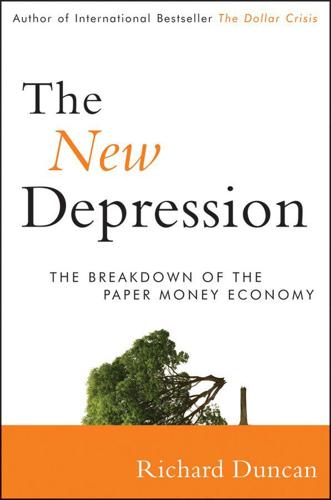
The New Depression: The Breakdown of the Paper Money Economy
by
Richard Duncan
Published 2 Apr 2012
The European Central Bank has increased its balance sheet (i.e., created euros) by 950 billion euros, or 80 percent since the crisis began (mid-2007). And the Bank of England has followed suit by growing its balance sheet by 164 billion pounds (206 percent). Even the International Monetary Fund has become a big-time fiat money creator. It expanded the amount of Special Drawing Rights (SDRs) (IMF money) in existence by a factor of ten, or roughly the equivalent of $280 billion, in the third quarter of 2009. The new SDRs were handed out to IMF member countries in proportion to their quotas (ownership stake) in the Fund and they served as a badly needed injection of global liquidity at a time when money was otherwise tight all around.
…
If our credit-based economic system fails, a geopolitical cataclysm is sure to follow. The analysis I presented in my first two books was well received; my recommendations generally were not. In The Dollar Crisis, I proposed (1) a global minimum wage, structured to increase wages in the manufacturing sector by $1 per day each year; and (2) the use of IMF Special Drawing Rights (SDRs) to boost international liquidity when the crisis struck. Had the minimum wage proposal been adopted at that time, wage rates in the developing world would have practically tripled by now to $14 per day, thereby tripling the purchasing power of those workers near the bottom of the labor pyramid.
…
solar initiative example Reagan, Ronald Rental property, in diversified portfolio Republican Party Reserve requirements: asset-based securities and government-sponsored entities and commercial banks and current Roosevelt, Franklin D. Rothbard, Murray Russia Saving and investment, in Mitchell’s theory of business cycles Savings and loan companies, credit supply and Schumpeter, Joseph Schwartz, Anna Jacobson Solar initiative, proposed Spain Special Drawing Rights (SDRs) Special purpose vehicles (SPVs), credit creation and Status quo option, for U.S. Stocks: in diversified portfolio quantitative easing and Switzerland Taiwan Tariffs: inflation and New Great Depression scenarios and Tax revenues: credit expansion’s effect on during Great Depression New Great Depression consequences and Theory of Money and Credit, The (von Mises) Time deposits, commercial bank funding and Total credit market debt (TCMD): contraction of by economic sector foreign central banks’ creation of fiat money and foreign exchange reserves in 2011 likely for 2012 major categories of sectors and changing percentages of debt Trade, generally.
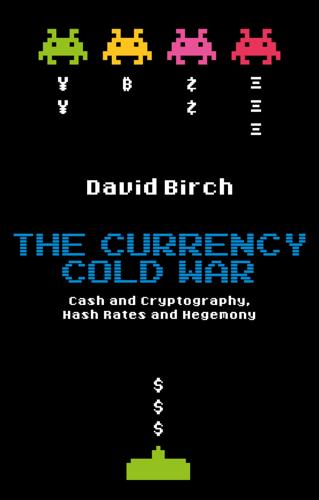
The Currency Cold War: Cash and Cryptography, Hash Rates and Hegemony
by
David G. W. Birch
Published 14 Apr 2020
In 2019, Governor of the Bank of England Mark Carney gave a speech in which he said that a form of global digital currency could be ‘the answer to the destabilizing dominance of the US dollar in today’s global monetary system’. But which digital currency? Will we really be choosing between the Federal Reserve and Microsoft (between dollar bills and Bill’s dollars1)? Between Facebook’s Libra and China’s Digital Currency/Electronic Payment (DCEP) system? Between spendable special drawing rights (SDRs) and Kardashian kash? I think the answer is that these are precisely the kinds of choices we will soon be having to make, so we need to start planning for this coming era of digital currency. The historian Niall Ferguson has written that ‘if America is smart, it will wake up and start competing for dominance in digital payments’, and I am sure he is right.
…
This is a form of alternative currency unit (ACU), a concept that has a long heritage (Ascheim and Park 1976). There are, broadly speaking, two kinds of ACUs: those created by official institutions, primarily for official international transactions; and those introduced at the initiative of private companies for commercial transactions. The pre-eminent example of the former category is the IMF’s special drawing right (SDR). The SDR (which, confusingly, has the ISO 4217 code ‘XDR’) was created as a supplementary international reserve asset in the context of the Bretton Woods fixed exchange rate system. After the collapse of that system in 1973, the shift of major currencies towards floating exchange rate regimes lessened our reliance on the SDR as a global reserve asset.
…
Glossary ACU: alternative currency unit AI: artificial intelligence AML: Anti-Money Laundering AMLDV: Anti-Money Laundering Directive API: application programming interface BIS: Bank for International Settlements BRI: Belt and Road Initiative (China) BSA: Bank Secrecy Act (United States) CBDC: central bank digital currency CDD: customer due diligence CDP: collateralized debt position CFA: Franc of the Financial Community of Africa CFSI: Centre for the Study of Financial Innovation CHIPS: Clearing House Interbank Payment System CPS: Crime Pays System CTF: counter-terrorist financing DCA: digital currency area DCEP: Digital Currency/Electronic Payment DeFi: decentralized finance ECB: European Central Bank ECU: European Currency Unit ELMI: Electronic Money Institution ESL: enterprise shared ledger FinCEN: Financial Crimes Enforcement Network FINMA: Financial Market Supervisory Authority ICO: initial coin offering IMF: International Monetary Fund IMFS: International Monetary and Financial System JPMC: JPMorgan Chase SHC: synthetic hegemonic currency HMRC: Her Majesty’s Revenue and Customs KYC: Know Your Customer KYZ: Known-bY-Zuck NFC: near-field communication NCSC: National Cyber Security Centre NIST: National Institute of Standards and Technology OFAC: Office of Foreign Assets Control PBoC: People’s Bank of China PEPSI: Pan-European Payment System Initiative PIN: personal identification number Pseudonym: a persistent alias to an identity PQC: post-quantum cryptography SDR: special drawing right SEC: Securities and Exchange Commission SGA (Saga): a partially collateralized stablecoin SHC: synthetic hegemonic currency Sibos: The annual SWIFT banking conference SIM: subscriber identification module, the chip inside a digital mobile phone that links the device to a user SMS: short message service (the GSM text message service) SWIFT: Society for Worldwide Interbank Financial Telecommunications USSD: Unstructured Supplementary Service Data Bibliography Adrian, T., and T.
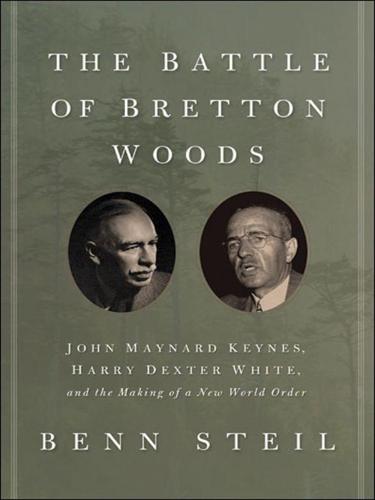
The Battle of Bretton Woods: John Maynard Keynes, Harry Dexter White, and the Making of a New World Order
by
Benn Steil
Published 14 May 2013
Such surrenders,” he said, were “utterly inconceivable today in favor of a mere nineteenth century laissez faire, unconcerned with national levels of employment and economic activity.”17 The political stage was now set for a reform to Bretton Woods that could mean all things to all governments, but nothing to the markets. This was the IMF’s Special Drawing Right, or SDR, approved by the fund’s board of governors in 1968.18 For supporters of Keynes’s bancor vision, the SDR was a first small step on the road to a truly international fiat currency. For France and opponents of the dollar-based Bretton Woods system, the new gold-linked instrument was a step toward dethroning the dollar and restoring gold as the primary international reserve.
…
Rueff and Triffin gave a joint interview on the inevitability of a dollar crisis that was published in the London Sunday Times on July 3, 1966, and the Paris l’Aurore the following day (reprinted in Rueff [1972:107–114]). 14. Triffin (1960:91–93). 15. Rueff (1972:41). 16. Rueff (1972:95, 143). Rueff was referring specifically to the IMF’s later Special Drawing Right in his “nothingness” reference, but the term certainly applied in his mind to Keynes’s bancor, Edward Bernstein’s composite reserve units (CRU), and other variations on fiat international reserve issues. 17. Triffin (1960:146). 18. For an up-to-date historical account of SDRs, albeit one with an atypically positive gloss, see Wilkie (2012). 19.
…
Stabilization and International Trade. Harry Dexter White Archives, Princeton University, Box 4, Folder 1. White, Nathan I. 1956. Harry D. White—Loyal American. (Privately printed by Bessie White) Bloom, Waban, Mass. White Archives: See individual items, listed by date, under White, Harry Dexter. Wilkie, Christopher. 2012. Special Drawing Rights: The First International Money. New York: Oxford University Press. Witteveen, Johannes. Jan. 15, 1974. “The Role of the International Monetary Fund.” Address to the World Banking Conference, London. Xinhua News Agency. Aug. 6, 2011. “After Historic Downgrade, U.S. Must Address Its Chronic Debt Problems.”
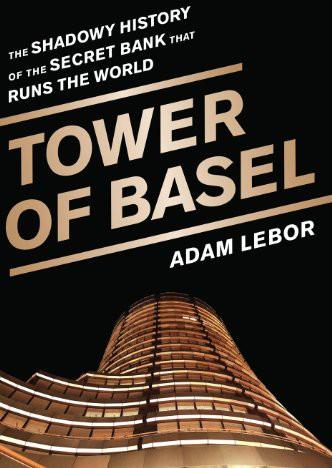
Tower of Basel: The Shadowy History of the Secret Bank That Runs the World
by
Adam Lebor
Published 28 May 2013
The bank makes much of its money from the fees and commissions that it charges central banks for its services, such as short-term liquidity and credit, gold swaps, and by providing a range of investment opportunities and instruments. The BIS is a much sought after commercial partner. Its record is solid and conservative, its credit rating superb. In Basel at least, the crisis has, overall, been good for business. For the financial year ending in March 2009 the bank made net, tax-free, profits of 446.1 million Special Drawing Rights, the equivalent of around $650 million.2 Its total equity was valued at the equivalent of almost $20 billion.3 By the end of March 2012, profits had nearly doubled, to the equivalent of around $1.17 billion—almost $100 million a month—and the bank’s total equity had increased by 40 percent to around $28 billion.4 These are extraordinary sums for a single financial institution with just 140 clients and two local offices, in Mexico City and Hong Kong.
…
The bank claims to have a mission of public service, yet is structured in such a way that the public is kept as distant as possible, behind the bank’s wall of legal immunities. Such a change would demand an Extraordinary General Meeting (EGM). There is a precedent here. In recent years, EGMs were called to change the bank’s unit of account from the gold franc to the Special Drawing Right, to forcibly buy back the shares held in private hands, and to distribute the shares held by the former Yugoslavia to its successor states. Voting is decided at EGMs by member central banks. If the governors and officials of the member central banks were mandated by their national governments to vote for the change and modernization, the bank would have to accede to the changes.
…
Author interview with Stephen Cecchetti, e-mail to author, December 19, 2012. CHAPTER SIXTEEN: THE CITADEL CRACKS 1. Rabbi Nosson Scherman, The Chumash: The Torah, Haftoras and Five Megillos With a Commentary Anthologised from the Rabbinic Writings (NY: Mesorah Publications, 2001), 49. 2. The BIS replaced the gold franc with the Special Drawing Right (SDR) as its unit of account in 2003. The SDR is not a currency but an international reserve asset and is based on a basket of major currencies: the euro, Japanese yen, British pound, and the US dollar. In January 2013 one SDR was equivalent to $1.53. 3. Profit and loss account for the financial year ended March 31, 2009, BIS 79th Annual Report, 182,183. 4.
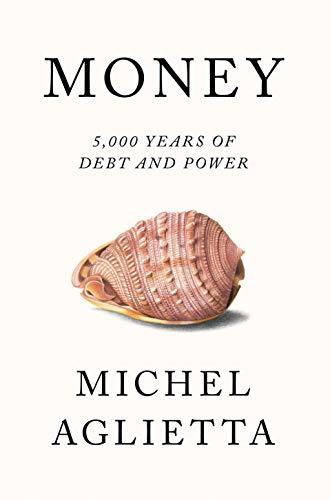
Money: 5,000 Years of Debt and Power
by
Michel Aglietta
Published 23 Oct 2018
Within the IMF, the rich countries were empowered to increase the Fund’s resources simply for the purposes of financing their own drawing requirements, or else in order to stabilise the market price of gold at around $35 an ounce. One last possible initiative was a radical monetary innovation at the international level. This was the invention of Special Drawing Rights (SDR). We will address SDR’s possible role at the heart of international monetary system (IMS) regulation in the last section of this chapter, which is devoted to the transformation of the IMS. The objective of creating an international scriptural money – a radical innovation, because it was not any country’s debt – was to set the IMF back at the centre of the global management of international liquidity.
…
It does this in order to illuminate possible ways forward, or ones capable of overcoming the impasses of the intergovernmental governance practised thus far. Finally, in the third section we will indicate paths to developing the existing international monetary institutions towards an international monetary system that promotes special drawing rights (SDR) as the ultimate reserve asset. THE IMS: FROM THE HEGEMONY OF A KEY CURRENCY TO INSTITUTIONALISED COOPERATION We know already that a system of generalised competition among currencies is unviable in a context of far-reaching financial globalisation. Indeed, such a system will be confronted by the indeterminacy of exchange rates.
…
Promotion of SDR as an International Ultimate Liquidity It is only possible to re-establish symmetrical adjustments by creating an ultimate liquidity into which all important currencies are convertible, and which is at the same time a flexible-supply fiduciary money. This money already exists potentially, even if it has been deliberately neutralised. This money is Special Drawing Rights (SDR). SDR is an allowance within a specific department of the IMF. It is not an engagement by any financial institution any more than was monetised gold. So it is not debt, but a purely fiduciary asset. SDR opens up a right of credit in any currency, which can be fully utilised by any IMF member.
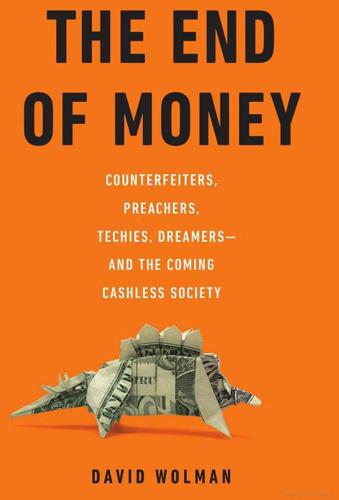
The End of Money: Counterfeiters, Preachers, Techies, Dreamers--And the Coming Cashless Society
by
David Wolman
Published 14 Feb 2012
Backers of a single Earth currency envision a great smoothing of transactions, an end to damaging currency speculation, and less economic turmoil, which could mean greater prosperity for all.18 While Esperanto struggles for credibility, some economists seriously consider how a one-world currency might happen, albeit in a highly theoretical future.19 One idea is for this new currency to be an expanded version of something that already exists: Special Drawing Rights. SDR is really a crossbreed of four of the world’s most significant currencies, and it’s used for particular kinds of settlements at the IMF. Perhaps the SDR is the embryo of a new global currency. Not that this would be a geopolitical walk in the park. “No global government . . . means no global central bank, which means no global currency.
…
See also Banks: bank robberies Romania Roosevelt, Franklin Rosicrucians R oyal Charm (undercover investigation) Royal Hawaiian Mint Company Rupee currency Rushkoff, Douglas Russia São Tomé and Príncipe Saraswati, Niranjanananda SARS virus Satan. See also Mark of the Beast Saving(s) Scandinavia. See also individual countries Schmidt, Eric Science journal Scotland SDR. See Special Drawing Rights Secret Service Secrets of the Temple: How the Federal Reserve Runs the Country (Greider) Securency printing firm in Australia Security issues. See also Paper money: security issues for Seigniorage Serios Shanghai Sharma, Lakhnlal Shegenov, Gaziz Siberia Sigurdsson, Jón Silver silver $1 American Eagle silver quarters See also Gold: gold/silver bugs; Liberty Dollar Simmel, Georg Singapore Single Global Currency Association Sinha, Abhishek 6D Technologies Slavery Smart banknotes Smartcards Smartphones.
…
See also Paper money: security issues for Seigniorage Serios Shanghai Sharma, Lakhnlal Shegenov, Gaziz Siberia Sigurdsson, Jón Silver silver $1 American Eagle silver quarters See also Gold: gold/silver bugs; Liberty Dollar Simmel, Georg Singapore Single Global Currency Association Sinha, Abhishek 6D Technologies Slavery Smart banknotes Smartcards Smartphones. See also Cellphones Smith, Adam Smith, Richard Smoking Dragon (undercover investigation) SMS messages Smugglers Snipes, Wesley Social networking Somaliland South Korea Spain Spanish Empire Special Drawing Rights (SDR) Specializations Squibb, Stephen Stability. See also under Currencies Staphylococcus bacteria State Bank of India Stealing Steil, Benn Steps Toward the Mark of the Beast (Guest) Stock exchanges Sulfur dioxide Sunshine Minting Superfluid Supernotes Supreme Court Swapping Sweden Swine flu Switzerland Swiss francs Taiwan Central Bank Taliban Taxation stealth taxes tax evasion/noncompliance Taxi drivers Tea Party Dollars Telecom companies Tenge currency Terra TRC Terrorism Text alerts Thailand Thiel, Peter Thorkelsdottir, Kristin Tipping Todd, Walker Trade expansion of Trust.

What's Next?: Unconventional Wisdom on the Future of the World Economy
by
David Hale
and
Lyric Hughes Hale
Published 23 May 2011
Instead, investors have to choose between the debts of individual nation-states, of which the largest debtor is Italy. The yen suffers from the low interest rates in Japan and growing investor concern about the credit quality of Japanese government debt. The public debt will soon exceed 200 percent of GDP, and massive fiscal deficits will loom in the future. Greenwood does not regard the Special Drawing Rights (SDR) as a serious alternative to the dollar because there is no market for SDR securities. It is instead an accounting unit of the IMF, and all SDRs are deposited at the IMF. China has some preconditions for establishing a reserve currency, such as a large economy, but its capital markets are underdeveloped and the currency itself is not fully convertible, although there were some significant developments in the RMB’s liberalization process in the second half of 2010.
…
Feasible Alternatives to the US Dollar Having established the nine characteristics required of an international reserve currency, we may now ask what alternatives there might be to the US dollar, either now or in the medium-term future. Two broad categories are possible: (1) another existing national currency in widespread use, such as the euro, the Japanese yen, the British pound, or even the Chinese RMB; or (2) a synthetic currency designed for such a purpose, of which the Special Drawing Rights (SDR) would be the leading candidate, as was hinted at in March 2009 by Governor Zhou Xiaochuan of the People’s Bank of China.2 We will review the three main candidate currencies in turn, followed by the SDR, before considering the RMB. Existing National Currencies The euro has been available for payments and deposits since 1999, and it has been in circulation as a physical currency since 2002.
…
Given these shortcomings, a provisional conclusion is that despite the recent depreciation in the US unit—which may lead to some temporary diversification of reserves away from the US dollar—there is no other existing major national currency that is currently in a position to dislodge the US dollar from its preeminent role as “the” international reserve currency. Synthetic Currency: SDR or Other “Basket” The leading synthetic currency candidate is the Special Drawing Right issued by the IMF. The SDR is essentially a synthetic “basket” of currencies that is comprised of four existing currencies: the US dollar, the Japanese yen, the euro, and the British pound sterling. There are many problems with the use of a composite currency as an international reserve currency, and these problems apply to the SDR or any basket arrangement.
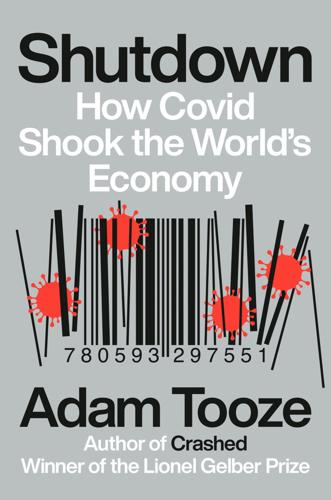
Shutdown: How COVID Shook the World's Economy
by
Adam Tooze
Published 15 Nov 2021
Shalal, “G20 Leaders Seek to Help Poorest Nations in Post-COVID World,” Reuters, November 20, 2020. 8. Jalabi, Woo, and Shalal, “G20 Leaders Seek to Help Poorest Nations in Post-COVID World.” 9. “Only Victory in Africa Can End the Pandemic Everywhere,” Financial Times, April 14, 2020. 10. A. Nye, “The G20’s Impasse on Special Drawing Rights (SDRs),” Yale School of Management, August 11, 2020. 11. IMF Annual Report 2009. 12. Tooze, “The IMF Was Organizing a Global Pandemic Bailout—Until the Trump Administration Stopped It,” Foreign Policy, April 17, 2020. 13. “U.S. Treasury Secretary Steven T. Mnuchin’s Joint IMFC and Development Committee Statement,” U.S.
…
Hooks, “Ted Cruz Tanks a Major Diplomatic Effort,” Texas Observer, April 3, 2014. 15. J. Trindle, “Lagarde Pushes U.S. Lawmakers to Pass IMF Reforms,” Foreign Policy, October 29, 2014. 16. Ramaphosa, “Global Response Is Needed to Prevent a Debt Crisis in Africa.” 17. K. Gallagher, J. A. Ocampo, and U. Volz, “Special Drawing Rights: International Monetary Support for Developing Countries in Times of the COVID-19 Crisis,” De Gruyter, August 17, 2020. 18. Table 5 in I. Fresnillo, “Shadow Report on the Limitations of the G20 Debt Service Suspension Initiative: Draining Out the Titanic with a Bucket?” Eurodad, October 14, 2020. 19.
…
See vaccines and immunizations Imperial College London, 36, 84, 85, 124 India: Bollywood shutdowns, 100; competition with China, 207–9; and early responses to pandemic, 11, 13, 51, 87–88; and emerging market debt crises, 164; and fiscal responses to pandemic, 133, 133; garment industry struggles, 102–3; and global trade contraction, 106; and global vaccine rollout, 245, 246; IT and outsourcing industry disruptions, 99; and labor market challenges, 104–5; and mortality rates of SARS-CoV-2, 28; and second wave of pandemic, 292; and supply chain disruptions, 86; vaccination programs, 237; and wartime rhetoric on pandemic, 135 Indonesia, 106, 122, 158, 159, 165, 189, 249 infectivity of SARS-CoV-2, 51 influenza, 29, 30, 35, 53, 73–74, 77, 90, 239 Institute of International Finance (IIF), 155, 257 Instituto Butantan, 249 Integrated Policy Framework, 302 Intended Nationally Determined Contributions, 194 intensive care units (ICUs), 41 International Bank for Reconstruction and Development (IBRD), 258 International Energy Agency, 79, 205 International Labour Organization (ILO), 88 International Monetary Fund (IMF): and 2020 trade forecasts, 106; and debt relief programs, 252–53, 259–60, 261; and early responses to pandemic, 13, 66; and economic impact of coronavirus pandemic, 1–2; and emerging market debt crises, 157, 159–62, 166, 168, 170, 172; and European sovereign debt crisis, 177–78; and fiscal responses to pandemic, 131, 132, 143; and G20 finance ministers’ meeting, 71; and global market stabilization efforts, 123; and global response to pandemic spread, 96; and global vaccine rollout, 244; Integrated Policy Framework, 302; and Munich Security Conference, 70; New Arrangements to Borrow, 162–63; special drawing rights (SDRs), 162; and Turkish financial crisis, 267 Iran, 20, 71, 83, 162, 295 Ireland, 81, 82, 104, 177 Israel, 171 Italy: debt levels, 177–78; and development of European recovery fund, 186–87; and early responses to pandemic, 51, 67, 71–72, 84, 88; and European sovereign debt crisis, 179–80, 181, 182; and eurozone crisis legacy, 109; extent of outbreak in, 78; and fiscal responses to pandemic, 133, 134, 137; and “flattening the curve” efforts, 75; and global response to pandemic spread, 95; and NextGen EU fiscal package, 284–85; and second wave of pandemic, 233; and wartime rhetoric on pandemic, 135; and WHO funding, 33 Japan: and China’s growing influence, 205; and climate agenda, 194; debt levels, 177; and development lending programs, 264; and differing national responses to pandemic, 73; and fiscal responses to pandemic, 133, 138, 142, 145; and global vaccine rollout, 243; Olympic Games postponed, 88; and Trans-Pacific Partnership, 206; and WHO funding, 33 Jenner Institute, 245 Johnson, Boris, 69, 77–78, 81, 88–89, 90, 124, 278 Johnson & Johnson, 54, 239–40, 241, 251 J.P.
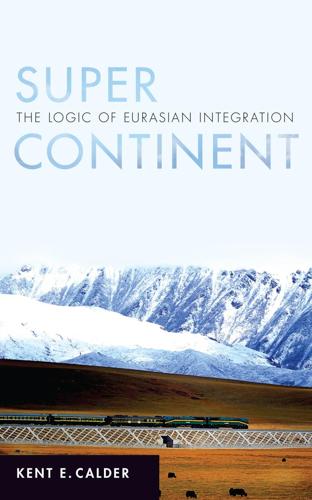
Super Continent: The Logic of Eurasian Integration
by
Kent E. Calder
Published 28 Apr 2019
The October 2016 weights for the five basket currencies were US dollar (41.73 percent); euro (30.93 percent); Chinese RMB (10.92 percent); Japanese yen (8.33 percent); and British pound sterling (8.09 percent). See International Monetary Fund, “IMF Adds Chinese Renminbi to Special Drawing Rights Basket,” IMF News, September 30, 2016, http://www.imf.org/en/News/Articles/2016/09/29/AM16-NA093016IMF-Adds -Chinese-Renminbi-to-Special-Drawing-Rights-Basket. 46. See SWIFT, “RMB Internationalisation: Where We Are and What We Can Expect in 2018,” January 2018, 7, https://www.swift.com/resource/rmb-tracker-january-2018 -special-report. 47. Ibid. 48.
…
As late as October 2010, the RMB ranked only 35th as the world’s most widely used payments currency. A year later, it had moved up to the 17th spot. By December 2013 it had jumped into the 8th position. In November 2014, the RMB became one of the top five world payments currencies.44 On October 1, 2016, the RMB also became the fifth currency in the IMF’s special drawing rights (SDR) basket of currencies, enjoying third-ranking prominence after the US dollar and the euro.45 The European response to the RMB’s inclusion in the IMF’s SDR basket has been interesting, particularly in view of recent European cooperation with China on several other financial fronts, including establishment of the Asian Infrastructure Investment Bank (AIIB).
…
See also Silk Road Economic Belt; Twenty-First-Century Maritime Silk Road Silk Road Economic Belt initiative, 45m, 116, 153, 154, 262n65, 262n66; and Xi Jinping address in Kazakhstan, 44, 152 Silk Road Fund (SRF), 96 –97, 99, 106, 147, 153, 227, 228, 248, 249 Singapore: and China’s emergence, 89, 129, 135, 136, 137, 138, 139, 222; geopolitical importance of, 74, 127; overseas Chinese in, 126, 136; and the United States, 244, 245 Singapore–Kunming Rail Link (SKRL), 130 –133, 131m, 139 Singh, Manmohan, 60 Sino–French relationship, 164 Sinosure, 97 Sirisena, Maithripala, 193 Six-Party Talks, 239 16+1 summit-conference series/framework, 4, 13, 15, 21, 99, 179, 180m Slovakia, 92, 172, 201 Snow Dragon (Xue Long), 146 “Socialism in one country,” 4, 50, 51, 54, 56 Softbank, 113 Sogdians, 161 Song dynasty, 123 Son Masayoshi, 84 Sony, 86 South Asian Regional Cooperation Council, 247 South China Sea, 127–128, 129, 130, 156, 158, 245, 247, 287–288n85 Southeast Asia: in broad Eurasian context, 137–138; and China’s domestic transformation, 126 –134, 136 –137; first connectivity experiment in, 122 –139; trade with China, 127. See also Association of Southeast Asian Nations (ASEAN) Southeast Asia Treaty Organization (SEATO), 209, 300n11 Index Soviet Union: collapse of, 4, 12, 22, 36, 54 – 61, 142, 170, 234, 235; oil production in, 82; relationship of to People’s Republic of China, 142 Spaak, Paul-Henri, 16 Special drawing rights (SDR), 221 Special Economic Zones (SEZs), 53, 58, 59, 134, 138, 139 Spence, Jonathan, 161–162, 163 Spratly Islands, 128 Sri Lanka: “debt trap,” 20, 99, 106 –107, 112, 187, 199, 249; ethno-religious conflicts, 60, 192, 193 Srivijaya kingdom, 123 Stalin, Joseph, 51, 54, 141, 142 Standard Chartered: and BRI finance, 107 Stanford, Leland, xiv State-owned enterprises (SOEs), 103 –104, 105, 109, 112 –113, 187 Steel industry, in China, 108 –109, 109f, 120, 178 Strait of Malacca, 74, 122, 127, 128, 133, 246 Suez Canal, 145 Sunni Muslims, 192 Sunnylands Summit, 239 –240 Super Continent, the emergence of Eurasian: the American precedent and, xiii-xvi; critical junctures and, 12 –15, 50 – 68; defined, 49 –50; geo-economics and, 1–2, 9, 15, 49; infrastructure and, 213 –218; US response to, 240 –251 Superhighways, 44, 153, 216, 229 Supply chains: ambivalence, 177; examples, 183, 215, 217; and Logistics Revolution, 44, 85 – 88, 119, 217; and collapse of the Soviet Union, 56, 92, 173, 234 –235; and the United States, 241–242, 250 Surabaya, 123, 124 Suzhou, 126, 138 Sweden, 113, 164, 167, 244 SWIFT (payment system), 223 Syndrome, concept of, 23 Syriza (Greece), 201, 202 Systems transformation, alternative routes to, 210 –211 Tajikistan, 197, 199, 283n14 Tang dynasty, 28, 29, 47 323 Tencent, 104 TEN-T Orient/East Mediterranean Corridor project, 175, 176m Thailand, 118, 124 –125, 127, 129, 131–133, 134, 135 Thatcher, Margaret, 62 “Third-wave” democratic uprisings, 238 3D printing, 215 Tianjin, 53, 92, 115, 126, 138, 248 Tianxia (all under heaven).
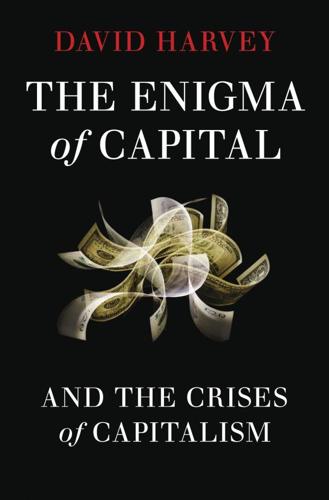
The Enigma of Capital: And the Crises of Capitalism
by
David Harvey
Published 1 Jan 2010
It was around this time also that US corporations began to take their surplus capital abroad. Surplus dollars, outside of US control, were accumulating within the European banking system. Belief in the fixed exchange rate of the dollar against gold began to erode. But what was to replace it? Keynes’ idea of a neutral global currency in the form of ‘special drawing rights’, based on the value of five major currencies and managed by the IMF, was revived in 1969. But this threatened US hegemony. A more acceptable solution to the US, worked out in a series of complicated international accords between 1968 and 1973, was for the fixed exchange rate with gold to be abandoned.
…
The US has been borrowing at the rate of around $2 billion a day for several years now and while the lenders – such as Chinese and other East Asian Central banks along with those of the Gulf States – have so far kept lending because the US economy is far too big to fail, the increasing power of the lenders over US policy is palpable. Meanwhile, the position of the dollar as the global reserve currency is threatened. The Chinese have resurrected Keynes’ original suggestion and urged the creation of a global currency of special drawing rights to be managed by a presumably democratised IMF (in which the Chinese would have an important voice). This threatens US financial hegemony. The end of the Cold War has also rendered military protection against the communist menace irrelevant, even as the ex-Soviet Bloc countries, along with China and Vietnam by very different paths, have become integrated into the global capitalist economic system.
…
.: Limits to Growth 72 meat-based diets 73, 74 Medicare 28–9, 224 Mellon, Andrew 11, 98 mercantilism 206 merchant capitalists 40 mergers 49, 50 forced 261 Merrill Lynch 12 Merton, Robert 100 methane gas 73 Mexico debt crisis (1982) 10, 19 northern Miexico’s proximity to the US market 36 peso rescue 261 privatisation of telecommunications 29 and remittances 38 standard of living 10 Mexico City 243 microcredit schemes 145–6 microeconomics 237 microenterprises 145–6 microfinance schemes 145–6 Middle East, and oil issue 77, 170, 210 militarisation 170 ‘military-industrial complex’ 91 minorities: colonisation of urban neighbourhoods 247, 248 Mitterrand, François 198 modelling of markets 262 modernism 171 monarchy 249 monetarism 237 monetisation 244 money centralised money power 49–50, 52 a form of social power 43, 44 limitlessness of 43, 47 loss of confidence in the symbols/quality of money 114 universality of 106 monoculture 186 Monopolies Commission 52 monopolisation 43, 68, 95, 113, 116, 221 Monsanto 186 Montreal Protocol (1989) 76, 187 Morgan Stanley 19 Morishima, Michio 70 Morris, William 160 mortgages annual rate of change in US mortgage debt 7 mortgage finance for housing 170 mortgage-backed bonds futures 262 mortgage-backed securities 4, 262 secondary mortgage market 173, 174 securitisation of local 42 securitisation of mortgage debt 85 subprime 49, 174 Moses, Robert 169, 171, 177 MST (Brazil) 257 multiculturalism 131, 176, 231, 238, 258 Mumbai, India anti-Muslim riots (early 1990s) 247 redevelopment 178–9 municipal budgets 5 Museum of Modern Art, New York 21 Myrdal, Gunnar 196 N Nandigram, West Bengal 180 Napoleon III, Emperor 167, 168 national debt 48 National Economic Council (US) 11, 236 national-origin quotas 14 nationalisation 2, 4, 8, 224 nationalism 55–6, 143, 194, 204 NATO 203 natural gas 188 ‘natural limits’ 47 natural resources 30, 71 natural scarcity 72, 73, 78, 80, 83, 84, 121 nature and capital 88 ‘first nature’ 184 relation to 121, 122 ‘the revenge of nature’ 185 ‘second nature’ 184, 185, 187 as a social product 188 neocolonialism 208, 212 neoliberal counter-revolution 113 neoliberalism 10, 11, 19, 66, 131, 132, 141, 172, 175, 197, 208, 218, 224, 225, 233, 237, 243, 255 Nepal: communist rule in 226 Nevada, foreclosure wave in 1 New Deal 71 ‘new economy’ (1990s) 97 New Labour 45, 255 ‘new urbanism’ movement 175 New York City 11 September 2001 attacks 41 fiscal crisis (1975) 10, 172, 261 investment banks 19, 28 New York metropolitan region 169, 196 Nicaragua 189 Niger delta 251 non-governmental organisations (NGOs) 35, 253–4 non-interventionism 10 North Africa, French import of labour from 14 North America, settlement in 145 North American Free Trade Association (NAFTA) 200 Northern Ireland emergency 247 Northern Rock 2 Norway: Nordic cris (1992) 8 nuclear power 188 O Obama, Barack 11, 27, 34, 210 Obama administration 78, 121 O’Connor, Jim 77, 78 offshoring 131 Ogoni people 251 oil cheap 76–7 differential rent on oil wells 83 futures 83, 84 a non-renewable resource 82 ‘peak oil’ 38, 73, 78, 79, 80 prices 77–8, 80, 82–3, 261 and raw materials prices 6 rents 83 United States and 76–7, 79, 121, 170, 210, 261 OPEC (Organisation of Oil-Producing Countries) 83, 84 options markets currency 262 equity values 262 unregulated 99, 100 Orange County, California bankruptcy 100, 261 Organisation for Economic Cooperation and Development (OECD) 51 organisational change 98, 101 organisational forms 47, 101, 121, 127, 134, 238 Ottoman Empire 194 ‘over the counter’ trading 24, 25 overaccumulation crises 45 ozone hole 74 ozone layer 187 P Pakistan: US involvement 210 Palley, Thomas 236 Paris ‘the city of light’ 168 epicentre of 1968 confrontations 177, 243 Haussmann’s rebuilding of 49, 167–8, 169, 171, 176 municipal budget crashes (1868) 54 Paris Commune (1871) 168, 171, 176, 225, 243, 244 Partnoy, Frank: Ubfectious Greed 25 patents 221 patent laws 95 patriarchy 104 pensions pension funds 4, 5, 245 reneging on obligations 49 Péreire brothers 49, 54, 98, 174 pesticides 185, 186, 187 petty bourgeois 56 pharmaceutical sector 129, 245 philanthropy 44 Philippines: excessive urban development 8 Phillips, Kevin 206 Pinochet, General Augusto 15, 64 plant 58 Poland, lending to 19 political parties, radical 255–6 politics capitalist 76 class 62 co-revolutionary 241 commodified 219 depoliticised 219 energy 77 identity 131 labour organizing 255 left 255 transformative 207 pollution air 77 oceanic 74 rights 21 ‘Ponts et Chaussées’ organisation 92 Ponzi schemes 21, 114, 245, 246 pop music 245–6 Pope, Alexander 156 population growth 59, 72, 74, 121, 167 and capital accumulation 144–7 populism 55–6 portfolio insurance 262 poverty and capitalism 72 criminalisation and incarceration of the poor 15 feminisation of 15, 258 ‘Great Society’ anti-poverty programmes 32 Prague 243 prices commodity 37, 73 energy 78 food grain 79–80 land 8, 9, 182–3 oil 8, 28, 37–8, 77–8, 80, 82–3, 261 property 4, 182–3 raw material 37 reserve price 81–2 rising 73 share 7 primitive accumulation 58, 63–4, 108, 249 private consortia 50 private equity groups 50 private property and radical egalitarianism 233, 234 see also property markets; property rights; property values privatisation 10, 28, 29, 49, 251, 256, 257 pro-natal policies 59 production expansion of 112, 113 inadequate means of 47 investment in 114 liberating the concept 87 low-profit 29 offshore 16 production of urbanisation 87 reorganisation and relocation of 33 revolutionising of 89 surplus 45 technologies 101 productivity agreements 14, 60, 96 agricultural 119 cotton industry 67 gains 88, 89 Japan and West Germany 33 rising 96, 186 products development 95 innovation 95 new lines 94, 95 niches 94 profit squeeze 65, 66, 116 profitability constrains 30 falling 94, 131 of the financial sector 51 and wages 60 profits easy 15 excess 81, 90 falling 29, 72, 94, 116, 117 privatising 10 rates 70, 94, 101 realisation of 108 proletarianisation 60, 62 property markets crash in US and UK (1973–75) 8, 171–2, 261 overextension in 85 property market-led Nordic and Japanese bank crises 261 property-led crises (2007–10) 10, 261 real estate bubble 261 recession in UK (after 1987) 261 property rights 69, 81–2, 90, 122, 179, 198, 233, 244, 245 Property Share Price Index (UK) 7 property values 171, 181, 197, 248 prostitution 15 protectionism 31, 33, 43, 211 punctuated equilibrium theory of natural evolution 130 Putin, Vladimir 29, 80 Q Q’ing dynasty 194 quotas 16 R R&D (research and development) 92, 95–6 race issues 104 racism 61, 258 radical egalitarianism 230–34 railroads 42, 49, 191 Railwan, rise of (1970s) 35 rare earth metals 188 raw materials 6, 16, 37, 58, 77, 101, 113, 140, 144, 234 RBS 20 Reagan, Ronald 15, 64, 131, 141 Reagan-Thatcher counter revolution (early 1980s) 71 Reagan administration 1, 19 Reagan recession (1980–82) 60, 261 Real Estate Investment Trusts (US) 7 recession 1970s 171–2 language of 27 Reagan (1980–82) 60, 261 Red Brigade 254 reforestation 184 refrigeration 74 reinvestment 43, 45, 66–7, 110–12, 116 religious fundamentalism 203 religious issues 104 remittances 38, 140, 147 rentiers 40 rents differential rent 81, 82, 83 on intellectual property rights 221 land 182 monetisation of 48, 109 monopoly 51, 81–2, 83 oil 83 on patents 221 rising 181 reproduction schemas 70 Republican Party (US) 11, 141 reserve price 81 resource values 234 Ricardo, David 72, 94 risks, socialising 10 robbery 44 Robinson, Joan 238 robotisation 14, 136 Rockefeller, John D. 98 Rockefeller brothers 131 Rockefeller foundation 44, 186 Roman Empire 194 Roosevelt, Franklin D. 71 Rothschild family 98, 163 Royal Society 91, 156 royalties 40 Rubin, Robert 98 ‘rule of experts’ 99, 100–101 Russia bankruptcy (1998) 246, 261 capital flight crisis 261 defaults on its debt (1998) 6 oil and natural gas flow to Ukraine 68 oil production 6 oligarchs 29 see also Soviet Union S Saddam Hussein 210 Saint-Simon, Claude Henri de Rouvroy, Comte de 49 Saint-Simonians 87, 168 Salomon Brothers 24 Samuelson, Robert 235, 239 Sandino, Augusto 189 Sanford, Charles 98 satellites 156 savings 140 Scholes, Myron 100 Schumer, Charles 11 Schumpeter, Joseph 46 Seattle battle of (1999) 38, 227 general strike (1918) 243 software development in 195 Second World War 32, 168–70, 214 sectarianism 252 securitisation 17, 36, 42 Sejong, South Korea 124–6 service industries 41 sexism 61 sexual preferences issues 104, 131, 176 Shanghai Commune (1967) 243 shark hunting 73, 76 Shell Oil 79, 251 Shenzhen, China 36 shop floor organisers (shop stewards) 103 Silicon Valley 162, 195, 216 Singapore follows Japanese model 92 industrialisation 68 rise of (1970s) 35 slavery 144 domestic 15 slums 16, 151–2, 176, 178–9 small operators, dispossession of 50 Smith, Adam 90, 164 The Wealth of Nations 35 social democracy 255 ‘social democratic’ consensus (1960s) 64 social inequality 224 social relations 101, 102, 104, 105, 119, 121, 122, 123, 126, 127, 135–9, 152, 240 loss of 246 social security 224 social services 256 social struggles 193 social welfarism 255 socialism 136, 223, 228, 242, 249 compared with communism 224 solidarity economy 151, 254 Soros, George 44, 98, 221 Soros foundation 44 South Korea Asian Currency Crisis 261 excessive urban development 8 falling exports 6 follows Japanese model 92 rise of (1970s) 35 south-east Asia: crash of 1997–8 6, 8, 49, 246 Soviet Union in alliance with US against fascism 169 break-up of 208, 217, 227 collapse of communism 16 collectivisation of agriculture 250 ‘space race’ (1960s and 1970s) 156 see also Russia space domination of 156–8, 207 fixed spaces 190 ‘space race’ (1960s and 1970s) 156 Spain property-led crisis (2007–10) 5–6, 261 unemployment 6 spatial monopoly 164–5 special drawing rights 32, 34 special economic zones 36 special investment vehicles 36, 262 special purpose entities 262 speculation 52–3 speculative binges 52 speed-up 41, 42 stagflation 113 stagnation 116 Stalin, Joseph 136, 250 Standard Oil 98 state formation 196, 197, 202 state-corporate nexus 204 ‘space race’ (1960s and 1970s) 156 state-finance nexus 204, 205, 237, 256 blind belief in its corrective powers 55 ‘central nervous system’ for capital accumulation 54 characteristics of a feudal institution 55 and the current crisis 118 defined 48 failure of 56–7 forms of 55 fusion of state and financial powers 115 innovation in 85 international version of 51 overwhelmed by centralised credit power 52 pressure on 54 radical reconstruction of 131 role of 51 and state-corporate research nexus 97 suburbanisation 171 tilts to favour particular interests 56 statistical arbitrage strategies 262 steam engine, invention of 78, 89 Stiglitz, Joseph 45 stimulus packages 261 stock markets crash (1929) 211, 217 crashes (2001–02) 261 massive liquidity injections (1987) 236, 261 Stockton, California 2 ’structural adjustment’ programmes vii, 19, 261 subcontracting 131 subprime loans 1 subprime mortgage crisis 2 substance abuse 151 suburbanisation 73, 74, 76–7, 106–7, 169, 170, 171, 181 Summers, Larry 11, 44–5, 236 supermarket chains 50 supply-side theory 237 surveillance 92, 204 swaps credit 21 Credit Default 24, 262 currency 262 equity index 262 interest rate 24, 262 Sweden banking system crash (1992) 8, 45 Nordic crisis 8 Yugoslav immigrants 14 Sweezey, Paul 52, 113 ‘switching crises’ 93 systematic ‘moral hazard’ 10 systemic risks vii T Taipei: computer chips and household technologies in 195 Taiwan falling exports 6 follows Japanese model 92 takeovers 49 Taliban 226 tariffs 16 taxation 244 favouring the rich 45 inheritance 44 progressive 44 and the state 48, 145 strong tax base 149 tax rebates 107 tax revenues 40 weak tax base 150 ‘Teamsters for Turtles’ logo 55 technological dynamism 134 technologies change/innovation/new 33, 34, 63, 67, 70, 96–7, 98, 101, 103, 121, 127, 134, 188, 193, 221, 249 electronic 131–2 ‘green’ 188, 221 inappropriate 47 labour fights new technologies 60 labour-saving 14–15, 60, 116 ‘rule of experts’ 99, 100–101 technological comparative edge 95 transport 62 tectonic movements 75 territorial associations 193–4, 195, 196 territorial logic 204–5 Thailand Asian Currency Crisis 261 excessive urban development 8 Thatcher, Margaret, Baroness 15, 38, 64, 131, 197, 255 Thatcherites 224 ‘Third Italy’, Bologna 162, 195 time-space compression 158 time-space configurations 190 Toys ‘R’ Us 17 trade barriers to 16 collapses in foreign trade (2007–10) 261 fall in global international trade 6 increase in volume of trading 262 trade wars 211 trade unions 63 productivity agreements 60 and US auto industry 56 trafficking human 44 illegal 43 training 59 transport costs 164 innovations 42, 93 systems 16, 67 technology 62 Treasury Bill futures 262 Treasury bond futures 262 Treasury instruments 262 TRIPS agreement 245 Tronti, Mario 102 Trotskyists 253, 255 Tucuman uprising (1969) 243 Turin: communal ‘houses of the people’ 243 Turin Workers Councils 243 U UBS 20 Ukraine, Russian oil and natural gas flow to 68 ultraviolet radiation 187 UN Declaration of Human Rights 234 UN development report (1996) 110 Un-American Activities Committee hearings 169 underconsumptionist traditions 116 unemployment 131, 150 benefits 60 creation of 15 in the European Union 140 job losses 93 lay-offs 60 mass 6, 66, 261 rising 15, 37, 113 and technological change 14, 60, 93 in US 5, 6, 60, 168, 215, 261 unionisation 103, 107 United Fruit Company 189 United Kingdom economy in serious difficulty 5 forced to nationalise Northern Rock 2 property market crash 261 real average earnings 13 train network 28 United Nations 31, 208 United States agricultural subsidies 79 in alliance with Soviet Union against fascism 169 anti-trust legislation 52 auto industry 56 blockbusting neighbourhoods 248 booming but debt-filled consumer markets 141 and capital surplus absorption 31–2 competition in labour markets 61 constraints to excessive concentration of money power 44–5 consumerism 109 conumer debt service ratio 18 cross-border leasing with Germany 142–3 debt 158, 206 debt bubble 18 fiscal crises of federal, state and local governments 261 health care 28–9 heavy losses in derivatives 261 home ownership 3 housing foreclosure crises 1–2, 4, 38, 166 industries dependent on trade seriously hit 141 interventionism in Iraq and Afghanistan 210 investment bankers rescued 261 investment failures in real estate 261 lack of belief in theory of evolution 129 land speculation scheme 187–8 oil issue 76–7, 79, 80, 121, 170, 210, 261 population growth 146 proletarianisation 60 property-led crisis (2007–10) 261 pursuit of science and technology 129 radical anti-authoritarianism 199 Reagan Recession 261 rescue of financial institutions 261 research universities 95 the reversing origins of US corporate profits (1950–2004) 22 the right to the city movement 257 ‘right to work’ states 65 savings and loan crisis (1984–92) 8 secondary mortgage market 173 ‘space race’ (1960s and 1970s) 156 suburbs 106–7, 149–50, 170 train network 28 unemployment 5, 6, 60, 168, 215, 261 unrestricted capitalist development 113 value of US stocks and homes, as a percentage of GDP 22 and Vietnam War 171 wages 13, 62 welfare provision 141 ‘urban crisis’ (1960s) 170 urban ‘heat islands’ 77 urban imagineering 193 urban social movements 180 urbanisation 74, 85, 87, 119, 131, 137, 166, 167, 172–3, 174, 240, 243 US Congress 5, 169, 187–8 US Declaration of Independence 199 US National Intelligence Council 34–5 US Senate 79 US Supreme Court 179 US Treasury and Goldman Sachs 11 rescue of Continental Illinois Bank 261 V Vanderbilt family 98 Vatican 44 Veblen, Thorstein 181–2 Venezuela 256 oil production 6 Vietnam War 32, 171 Volcker, Paul 2, 236 Volcker interest rate shock 261 W wage goods 70, 107, 112, 162 wages and living standards 89 a living wage 63 national minimum wage 63 rates 13, 14, 59–64, 66, 109 real 107 repression 12, 16, 21, 107, 110, 118, 131, 172 stagnation 15 wage bargaining 63 Wal-Mart 17, 29, 64, 89 Wall Street, New York 35, 162, 200, 219, 220 banking institutions 11 bonuses 2 ‘Party of Wall Street’ 11, 20, 200 ‘War on Terror’ 34, 92 warfare 202, 204 Wasserstein, Bruce 98 waste disposal 143 Watt, James 89 wealth accumulation by capitalist class interests 12 centralisation of 10 declining 131 flow of 35 wealth transfer 109–10 weather systems 153–4 Weather Underground 254 Weill, Sandy 98 Welch, Jack 98 Westphalia, Treaty of (1648) 91 Whitehead, Alfred North 75 Wilson, Harold 56 wind turbines 188 women domestic slavery 15 mobilisation of 59, 60 prostitution 15 rights 176, 251, 258 wages 62 workers’ collectives 234 working hours 59 World Bank 36, 51, 69, 192, 200, 251 ‘Fifty Years is Enough’ campaign 55 predicts negative growth in the global economy 6 World Bank Development Report (2009) 26 World Trade Organisation (WTO) 200, 227 agreements 69 street protests against (Seattle, 1999) 55 TRIPS agreement 245 and US agricultural subsidies 79 WorldCom 8, 100, 261 worldwide web 42 Wriston, Walter 19 X X-rays 99 Y Yugoslavia dissolution of 208 ethnic cleansings 247 Z Zapatista revolutionary movement 207, 226, 252 Zola, Émile 53 The Belly of Paris 168 The Ladies’ Paradise 168
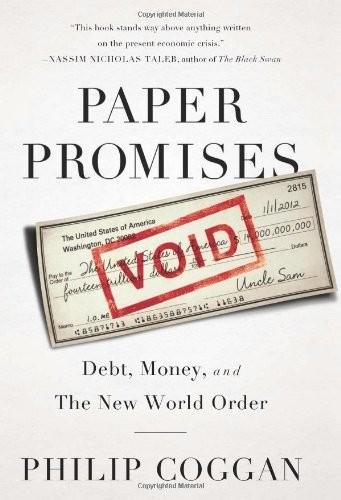
Paper Promises
by
Philip Coggan
Published 1 Dec 2011
This overdraft would be expressed in the form of a new currency, which Keynes dubbed bancor; this would be valued in terms of gold, but not convertible into it. This device was Keynes’s way of trying to reduce the world’s dependence on the dollar as a reserve currency. (Bancor stayed on the drawing board. Eventually, a basket currency was to be created in 1969 in the form of the Special Drawing Right (SDR) comprising fixed percentages of the dollar, pound, yen and various European currencies. But the SDR was not to be used seriously until well after the Bretton Woods era was past.) Under Keynes’s plan, a country with a persistent deficit would run up against its overdraft limit, and would devalue its currency.
…
In a sense, this dates back to the Triffin dilemma outlined in Chapter 5: for a currency to be used internationally there must be lots of it circulating abroad. For that to happen, however, a country must run a deficit so its currency builds up in the accounts of overseas merchants. And if the deficit becomes too large, confidence in the currency will eventually decline. Some talk of a basket currency, such as the special drawing right or SDR, replacing the dollar. When the G20 countries attempted to revive the global economy in early 2009, they agreed on a new issue of SDRs to boost global liquidity. To date, however, SDRs lack the vital ingredient of liquidity. They comprise less than 5 per cent of global reserves and no private company has issued bonds denominated in the currency.5 China will eventually become the world’s largest economy, if current trends continue, in the 2020s, and its foreign-exchange reserves already give it significant power as a creditor nation.
…
Rubin, Robert Rueff, Jacques Rumsfeld, Donald Russia Sack, Alexander St Augustine Saint-Simon, duc de Salamis (city) Santelli, Rick Sarkozy, Nicholas Saudi Arabia savings savings glut Sbrancia, Belen Schacht, Hjalmar Scholes, Myron shale gas Second Bank of the United States Second World War Securities and Exchange Commission seignorage Shakespeare, William share options Shiller, Robert short-selling silver Singapore Sloan, Alfred Smith, Adam Smith, Fred Smithers & Co Smithsonian agreement Snowden, Philip Socialist Party of Greece social security Société Générale solidus Solon of Athens Soros, George sound money South Africa South Korea South Sea bubble sovereign debt crisis Soviet Union Spain special drawing right speculation, speculators Stability and Growth pact stagnation Standard & Poor’s sterling Stewart, Jimmy Stiglitz, Joseph stock markets stop-go cycle store of value Strauss-Kahn, Dominque Strong, Benjamin sub-prime lending Suez canal crisis Suharto, President of Indonesia Sumerians supply-side reforms Supreme Court (US) Sutton, Willie Sweden Swiss franc Swiss National Bank Switzerland Sylla, Richard Taiwan Taleb, Nassim Nicholas taxpayers Taylor, John tea party (US) Temin, Peter Thackeray, William Makepeace Thailand Thatcher, Margaret third world debt crisis Tiernan, Tommy Times Square, New York tobacco as currency treasury bills treasury bonds Treaty of Versailles trente glorieuses Triana, Pablo Triffin, Robert Triffin dilemma ‘trilemma’ of currency policy Truck Act True Finn party Truman, Harry S tulip mania Turkey Turner, Adair Twain, Mark unit of account usury value-at-risk (VAR) Vanguard Vanity Fair Venice Vietnam War vigilantes, bond market Viniar, David Volcker, Paul Voltaire Wagner, Adolph Wall Street Wall Street Crash of 1929 Wal-Mart wampum Warburton, Peter Warren, George Washington consensus Weatherstone, Dennis Weimar inflation Weimar Republic Weinberg, Sidney West Germany whales’ teeth White, Harry Dexter William of Orange Wilson, Harold Wirtschaftswunder Wizard of Oz, The Wolf, Martin Women Empowering Women Woodward, Bob Woolley, Paul World Bank Wriston, Walter Xinhua agency Yale University yen yield on debt yield on shares Zambia zero interest rates Zimbabwe Zoellick, Robert Philip Coggan is the Buttonwood columnist of the Economist.
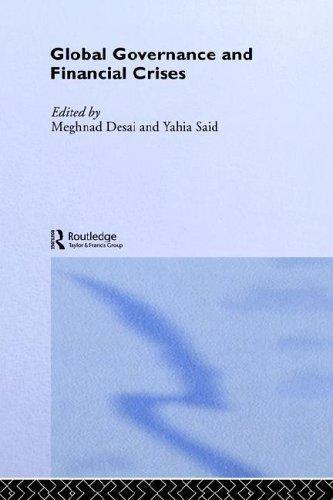
Global Governance and Financial Crises
by
Meghnad Desai
and
Yahia Said
Published 12 Nov 2003
The C20 published valuable studies on the working of international money. But, as far as reform was concerned, it was an utter failure. Americans and Europeans were not able to agree on the respective obligations of deficit and surplus countries in the adjustment mechanism. On international liquidity, the issue was the role of the Special Drawing Rights (SDRs) (created by the First Amendment in 1969) as the main reserve asset. It opposed developed and developing countries on the link between reserve creation and aid to development. Meanwhile market events had overpowered the ambition of reestablishing a rule-based system. As early as February 1973, the par-value exchange rate system had burst out and generalized floating had spread in a vacuum of consistent responses to mounting inflationary pressures.
…
Index adverse selection 32 ageing population 67 agency problems 21–9, 41 Akyüz, Y. 99 Allen, F. 20–2, 29 Argentina 11–12, 61 Asian financial crisis 1, 4, 6, 64, 74–5, 79, 83–5, 120; IMF role in 91–4; recovery from 94–7, 101–2 Austrian school of economists 75–6, 81 corporate governance 101–5 cosmopolitan order, concept of 74–5, 79 Cox, R. 77 crashes 11–12 crises, financial 30; definition of 7–8; history of 11–16, 67; management of 57–9, 64–6; three routes to 122–40 crony capitalism 83, 121, 152 currency, international 52–3, 57, 66–7 currency unions 80 Baker, J. 48 Bank of England 2, 11–13, 29 Bank for International Settlements (BIS) 4, 78, 88, 93, 100 bank runs 30, 36–40 Baring Brothers 11–12 Basle Committee 61 Brazil 57, 120, 128–9, 133 Bretton Woods system 13, 15, 43–6, 50–1, 57 bubbles 3–4, 6, 19–24, 28, 70, 84, 129–30, 136–8, 144–8; negative 20–1, 31, 39, 41 business cycles, theory of 1, 6, 9, 13, 15, 30–1 debt, external 87–90 default 28–9 deregulation 70, 72, 103 devaluation, competitive 48 developing countries 54 Diamond, D. 30, 35–6, 39 Dybvig, P. 30, 35–6, 39 Calomiris, C. 31 capital flight 91, 96–7 capital flows 84–5, 89–90, 97–8, 104, 122, 127, 140; controls on 5, 45, 144–50 capitalism 76–7; alternative models of 79–81 Cardoso, Henrique 138 central banks, role of 39–41 Chile 122, 129, 140–6 conditionality 47, 55–6, 99, 104 contagion 57, 89, 91, 104, 137 contingent credit lines 57 convertibility of currencies 13 Federal Reserve 2, 6, 12–15, 30, 94–5 Financial Stability Forum 15–16, 61–2 Finland 19–20 foreign direct investment (FDI) 87, 89 Friedman, Milton 12 “fundamentals” (in asset pricing) 22–4, 28, 41 Furman, J. 92 early warning system, financial 62 Eatwell, J. 15–16 emerging markets 54, 61 Enron 6 euro (currency) 66 European integration 52, 72, 80 exchange rates, fixed 13–14 G5 meetings 15 G7 meetings 15, 66–7 Gale, D. 20–2, 29 General Agreement to Borrow (GAB) 50–1 160 Index General Agreement on Trade in Services (GATS) 100 Germany 53 globalisation 4; alternative views of 70–2 Goldsmith, Raymond 8, 10–11 gold standard 12, 49, 73 Goodhart, C. 64 Gorton, G. 12, 31 Great Depression 2, 12–14 Hamilton, Alexander 29 Hamilton-Hart, N. 103 Hayek, F.A. 2, 9–10, 15, 75 hedging, dynamic 62 hegemony 13, 43, 72, 77–81; collective 77 incentive compatibility 33, 37 Indonesia 92, 94, 115, 117 International Monetary Fund (IMF) 2–5, 13–15, 43–67, 77, 80, 84, 98–105; Articles of Agreement 65; mandate of 58; role in Asian financial crisis 91–4 ISLM model 10 Jackson, Andrew 29 Jamaica Accord 46–7 Japan 19–20, 72 Juglar cycles 9–10 Kahn, J. 12 Keohane, R. 77 Keynes, J.M. 2, 10, 44, 68, 120, 127, 140 Keynesian policies 94, 97, 102, 105 Kindleberger, C.P. 2–3, 7, 11, 19, 30, 77, 122, 127 Kitchin cycles 9–10 Kondratieff cycles 9–10 Korea see South Korea Krueger, Anne 65 Kusnetz cycle 132, 150 lender of last resort (LOLR) 2–4, 49, 57–9, 63–7 liberalisation, financial 48–9, 56, 59, 83–5, 90, 101–2, 120–2 Lindgren, C.J. 30 Long-Term Capital Management (LTCM) 6, 94, 97, 124, 151 McKinnon, R. 128 Malaysia 74, 84, 87, 90–1, 94–5, 102–5, 116, 119, 122, 130, 133, 139, 147–51 Malthus, Thomas 8 market failure 121 Marxism 76, 79, 81 Marx, Karl 2, 9–10 Meltzer Commission and Report 16, 64 Mexico 20, 48–9, 56, 64, 93, 130 Mill, James 8 Minsky, H.P. 2, 10–11, 127, 137 Mises, Ludwig von 75 Mishkin, F. 20 Mitchell, W. 30 monetarism 47 moral hazard 1, 49, 59, 64, 95, 121, 128, 152 nation-states, role of 70–5, 78–9 neo-liberalism 75–81, 104 New Agreement to Borrow (NAB) 57 Nixon, Richard 46 North American Free Trade Agreement (NAFTA) 30, 72, 93 Norway 19 oil prices 13 Organisation for Economic Co-operation and Development (OECD) 83 Overend, Gurney and Company 11, 29 panics 11–12, 29–32, 92 Perez, C. 127 Philippines, the 91 Pill, H. 128 Plaza Accord 15 protectionism 73–5, 78 prudential supervision 60, 100, 103 quantitative controls 147–50 reform programmes 84, 99–105 regionalism 71–2 regulation of the global economy 71–81; see also prudential supervision reserve requirements 25 Ricardo, David 8 Rio de Janeiro agreement (1967) 53 risk shifting 20–5, 28; optimal 32–6 Say, J.B. 8 Say’s Law 126 Schumpeter, J. 2, 9–10 September 11th 2001, events of 6 Shin, J.-S. 95 Smithsonian Institute agreement 44, 46 Index 161 South Korea 49, 97, 101–2, 117, 119, 137–9 sovereignty: monetary 58–9, 63–6; national 73–4 special drawing rights (SDRs) 46, 50–3 speculation in risky assets 37–40 Sprague, O. 35 stagflation 2, 13, 15 Stiglitz, J.E. 92, 152 stop-go policies 48 stress tests 62 structural adjustment policies 13–14, 48–9, 54 Summers, L.H. and V.P. 120 supplemental reserve facility 57 surveillance 47, 56, 59–65 Sweden 20 TARGET 52 Taylor, L. 15–16 technology stocks 25 Tequila effect 120, 143 terms of trade 55 Thailand 84–5, 101, 110–11, 114, 117, 130, 133, 139 Tobin tax 140–1 Triffin, R. 46, 53 uncertainty, financial 28 United Kingdom 52 United States 13, 29, 31, 35, 48; Congress 64–5; Treasury 43, 56, 66; see also Federal Reserve Wallerstein, I. 77 Wall Street Crash 12 Walras, L. 8–10 Washington Consensus 49, 56, 72, 125 White, Harry 44 World Bank 43, 55, 77, 80, 100, 104 World.com 6 World Economic Outlook 62 World Trade Organisation 77, 80, 100 worst-case scenarios 62
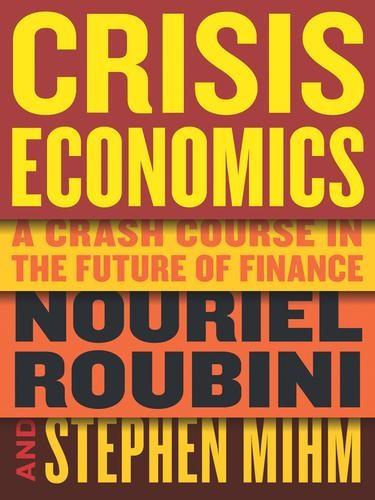
Crisis Economics: A Crash Course in the Future of Finance
by
Nouriel Roubini
and
Stephen Mihm
Published 10 May 2010
Though the Chinese clearly want a greater role for the renminbi, they don’t seem eager for it to become the world’s reserve currency anytime soon. In 2009 Zhou Xiaochuan, governor of the People’s Bank of China, proposed something very different: a new, supra-sovereign currency that would compete with the dollar. Zhou suggested a revision of the Special Drawing Rights (SDR), a quasi-currency created in 1969 under the auspices of the IMF, that can’t pass from hand to hand the way a paper dollar or euro does but is purely a unit of account used by the IMF. It derives its value from four underlying currencies that are weighted in different ways: the dollar is the predominant ingredient, followed by the euro, the yen, and the pound.
…
risk taking compensation and excessive in foreign countries moral hazard and proprietary trading strategies and securitization and underestimation of Roach, Stephen Rogoff, Kenneth Romania Roosevelt, Franklin Delano Roosevelt, Theodore Rosenberg, David Rothschild, Baron Karl Mayer von Roubini, Nouriel, predictions made in advance of crisis by Roubini Global Economics Royal Bank of Scotland Rúa, Fernando de la ruble, Russian Russia debt crisis in demand in future of Sachsen LB Samuelson, Paul Saudi Arabia savings in China current account and in emerging markets in Japan U.S. savings and loan (S&L) crisis savings and loans Say, Jean-Baptiste Schumpeter, Joseph Schwartz, Anna Jacobson SDR (Special Drawing Rights) SEC, see Securities and Exchange Commission securities asset-backed (ABS) auction-rate commercial banks and default on esoteric mortgage-backed railroad rating of reforms and subprime Securities Act (1933) Securities and Exchange Commission (SEC) derivatives and employees of NRSRO category and securitization compensation and Fannie Mae and Freddie Mac and reform and standardization and self-regulation (soft-touch regulation) regulatory arbitrage and self-reliance Senate, U.S.
…
senior tranche September 11 attacks shadow banking system bank runs on coining of term defined forerunners of liquidity of regulation and shareholders of banks Shaw, George Bernard Shiller, Robert silver Singapore SIVs (structured investment vehicles) Smith, Adam Smoot-Hawley Tariff South Africa South Korea IMF loans to South Sea Bubble (1720) sovereign wealth funds Soviet Union Spain banks in Special Drawing Rights (SDR) special purpose vehicle (SPV) speculation see also bubbles speculative borrowers spending capital (capex) consumer current account and deficit Federal Reserve and government stimulus, see stimulus spending Stability and Growth Pact Stabilizing an Unstable Economy (Minsky) stag-deflation stagflation Standard & Poor’s (S&P) 500 Stand-By Arrangement (SBA) state government fiscal policy and regulation and Steinbrück, Peer stimulus spending in China in Japan Keynesian view of stock bubbles stock market, U.S.
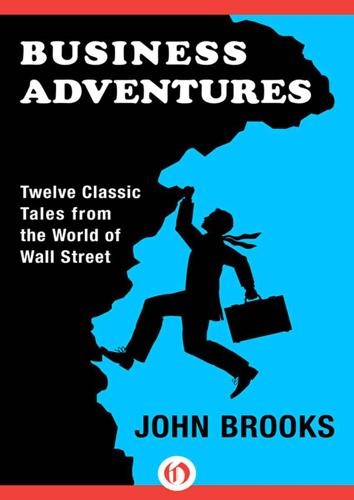
Business Adventures: Twelve Classic Tales From the World of Wall Street
by
John Brooks
Published 6 Jul 2014
Two weeks after the stopgap solution of the dollar crisis, those of the ten most powerful industrial countries met in Stockholm and agreed, with only France dissenting, on the gradual creation of a new international monetary unit to supplement gold as the bedrock underlying all currencies. It will consist (if action follows on resolution) of special drawing rights on the International Monetary Fund, available to nations in proportion to their existing reserve holdings. In bankers’ jargon the rights will be called S.D.R.’s; in popular jargon they were at once called paper gold. The success of the plan in achieving its ends—averting dollar devaluation, overcoming the world shortage of monetary gold, and thus postponing indefinitely the threatened mess—will depend on whether or not men and nations can somehow at last, in a triumph of reason, achieve what they have failed to achieve in almost four centuries of paper money: that is, to overcome one of the oldest and least rational of human traits, the lust for the look and feel of gold itself, and come to give truly equal value to a pledge written on a piece of paper.
…
Frank, 217, 218 Hickenlooper, Bourke, 253 Hinton, Longstreet, 135, 140–142 Hofstadter, Richard, 108 Holmes, Oliver Wendell, 303 Holtrop, Marius W., 362, 364 Holyk, Walter, 122–126, 130, 133, 136, 138 House Judiciary Committee, 164 Hovde, Frederick L., 287 Ideologies of Taxation, The (Eisenstein), 113 India, 255; devaluation of rupee in, 322; expenditure tax in, 115; income tax in, 82 Indus River, 255 Ingraham, Joseph C., 57 Injunction, origin of, 305–306 Income tax, 80–82; avoidance of, 100; in Communist countries, 88; in Florence (15th century), 80; in various countries, 88 Income-tax law, 97 Inside information, legitimate use of, 118–144 Insider Trading and the Stock Market (Manne), 120 Intellectual work, and taxes, 108 Interdict, defined, 306 Interest, withholding of taxes on, 96 Interest rates, 316, 325 Internal Revenue Code: (1954), 79, 96, 98; (1964), 100, 101, 102, 108, 113; complexity of, 111 Internal Revenue Service, 89–97; and taxpayer education, 112 International Business Machines, 8, 9, 14, 18, 152 International Harvester, 378 International Latex Corp., 298, 299, 301, 306–311 International Monetary Fund, 322, 324–325, 329, 330; members of, 328; special drawing rights on (S.D.R.), 387 International Telephone & Telegraph, 378 Ira Haupt & Co., 176–189 Iran, 250, 270, 274 Italy, 250, 272, 347 I-T-E Circuit Breaker Co., 213, 217 Ivory Coast, 250–251, 272 J. R. Williston & Beane, 177, 179, 181, 182, 185 Japan, income tax in, 82 Javits, Jacob, 384 Jefferson, Thomas, 260 Jeter, R.
…
A., 81, 87 Selling short, 227, 328 Seymour, Walton, 270 Shepard, Leonard, 299 Sherman, John, 84 Sherman Antitrust Act (1890), 84, 201 Shilling, introduction of, 337 Short selling, 227, 328 Silver, 337 Singer Co., 378 Sixteenth Amendment, U.S. Constitution, 85 Smith, Raymond W., 214–217, 220 Sole Owner stores, 247 Sole Owner Tigers football team, 247 Soss, Wilma, 280–287, 292–295 Special drawing rights (S.D.R.), on International Monetary Fund, 387 Special-interest provisions of U.S. tax law (see Loopholes) Spinoff, 257 Standard Oil of New Jersey, 8, 18 State and municipal bonds, tax exemptions on, 100 Statistics of Income (I.R.S.), 99 Stehlik, Frank E., 212–219 Stephens, Claude O., 124, 128–138 Stern, Philip M., 117 Stock crash (1962), 2, 4 Stock market fluctuations, 1–24 Stock-option provision, 101 Stock options, 103 Stock traders, 120 Stockholder meetings, 276–296 Stutz Motor Co., 228–229 Styling, of automobiles, 30 Suez crisis (1956), 329 Sulphides, 121 Sunday Times (London), 374 Susskind, David, 101 Swap network, 329, 330, 372–373 Switzerland, banking laws of, 327 Swope, Gerard, 219 T.V.A.
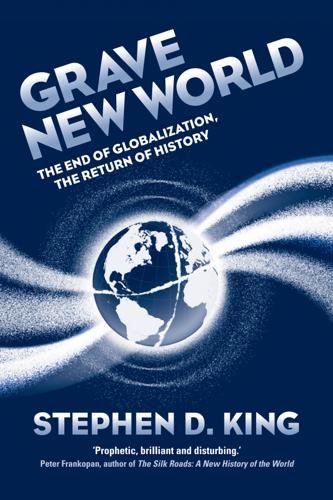
Grave New World: The End of Globalization, the Return of History
by
Stephen D. King
Published 22 May 2017
Yet, as the 1970s progressed, it became increasingly apparent that, with a move to floating exchange rates, the IMF’s role was, if anything, strengthening. First, the dollar’s heightened volatility meant that reserve managers elsewhere in the world craved an alternative monetary store of value that would be neither dollars nor gold. The IMF’s Special Drawing Rights (SDRs) – known colloquially as ‘paper gold’ – proved to be just the ticket. Representing a basket of major currencies, they allowed reserve managers to escape the heightened dollar volatility associated with the vagaries of US monetary policy. Second, with the abandonment of the fixed currency regime, the IMF’s ‘surveillance’ role was bolstered: most major industrialized countries were understandably fearful that a world of floating currencies could lead to a series of ‘beggar-thy-neighbour’ outcomes, particularly given the heightened opportunity for currency manipulation.
…
(i), (ii)n1 Roosevelt, Theodore (i), (ii) Rothwell, Jonathan (i) Rousseff, Dilma (i) Royal Navy (i), (ii) Rumsfeld, Donald (i) Russia (i) see also Soviet Union 19th century (i), (ii) 20th century (i) Cold War in Africa (i) debt default (i) EU and (i) Eurasian Economic Union (i) George Bernard Shaw on (i) Germany and (i) military spending (i) Ottomans and (i) Persia defeated (i) Peter the Great (i) Putin becomes president (i) railways (i) Syria and (i), (ii) Ukraine and (i) Russo-Japanese War 1904–05 (i), (ii) S&P 500 index (i) Saddam Hussein (i), (ii), (iii) Safavid dynasty (i) Sahara (i) Salmond, Alex (i) Sanders, Bernie (i), (ii), (iii), (iv) Sarajevo (i) Sardinia (i) Saudi Arabia Iran and (i), (ii), (iii) military spending (i) petrodollars (i) Sunnis (i) savings and loans crisis (i) Saxony (i) Scarborough Shoal (i) Schatzalp (i) Schengen Agreement (i), (ii), (iii) Schuman Declaration (i) Schwab, Klaus (i) Scotland (i), (ii) Scottish National Party (i), (ii) Second World War Coca-Cola in (i) economic progress following (i) Germany implodes (i) living standards and (i), (ii) US and (i), (ii), (iii) US and Soviet Union after (i) US, Britain and (i) World Bank and (i) Security Council (UN) (i), (ii), (iii), (iv) see also UN self-determination (i), (ii) Seljuk Turks (i) Senate (US) (i) Senkaku Islands (i) Serbia (i) Sevastopol (i) Seville Cathedral (i), (ii) Shanghai (i), (ii), (iii), (iv) Shanghai Cooperation Organisation (SCO) (i), (ii), (iii) SHAPE (Supreme Headquarters Allied Powers Europe) (i) Sharia law (i) Shaw, George Bernard (i), (ii), (iii) Shi’as (i), (ii) Shimoda, Treaty of (i) Sikhs (i), (ii) Silk Road (i), (ii), (iii), (iv), (v) Singapore Asian Infrastructure Investment Bank (i) British in (i) IMF and World Bank (i) Lee Kuan Yew (i) mathematical abilities (i) TPP (i) Western living standards (i) Skype (i) slavery (i), (ii) Slavs (i) Slovakia (i) Slovenia (i) Smith, Adam (i), (ii), (iii) Smoot–Hawley tariff (i), (ii) Snowden, Edward (i) social media (i), (ii) social mobility (i) social welfare (i) socialism (i), (ii), (iii) Somalia (i), (ii) South China Sea (i) South Korea (i), (ii), (iii), (iv), (v) South Sudan (i), (ii) Southern Kurils (i) Soviet Union see also Russia American suspicions of (i) collapse of (i), (ii), (iii), (iv) Eastern Europe freed from (i), (ii), (iii) invades Afghanistan (i), (ii) Korean War and (i) League of Nations and (i) living standards (i) perceived threat to US (i) post-Second World War balance of power (i) Steffens impressed by (i) Spain Andalucía (i) Battle of Trafalgar (i) EU deficits (i) joins EU (i) living standards increase (i) Spaniards head north for work (i) Spanish speakers in US (i) US military presence (i) Spanish Succession, War of the (i) Speakers’ Corner (i) Special Drawing Rights (SDRs) (i) Spice Islands (i) ‘Spirit of Davos’ (i) Spirit of the Laws, The (Montesquieu) (i) Spratly Islands (i) St Petersburg (i) Stability and Growth Pact (i) Stalin, Joseph (i) Stanley, H.M. (i) statesmen (i) steam power (i) Steffens, Lincoln (i), (ii), (iii) Stiglitz, Joseph (i), (ii), (iii) Stoltenberg, Gerhard (i) sub-prime mortgages (i) sub-Saharan Africa (i), (ii), (iii) Sudan (i) Suez Canal (i), (ii) Sufi, Amir (i) Summer Palace (China) (i) Sunday Times Rich List (i) Sunnis (i), (ii) supply chains (i), (ii), (iii) Sweden (i), (ii) Switzerland a rich country (i), (ii) hatred of inflation (i) languages spoken (i), (ii) US and (i) Syria a cause of its instability (i) Assad’s chemical weapons (i) daily violence (i) Islamic State in (i) Nigeria and (i) peacefulness statistics and (i) refugees (i), (ii), (iii), (iv) Russia’s efforts in (i) Schengen and (i) Syriza (i), (ii), (iii), (iv) Taiwan (i), (ii), (iii), (iv), (v) Tajikistan (i) Tanzania (i) tariffs (i), (ii) see also GATT Tashkent (i) technology (i) globalization and (i), (ii), (iii), (iv) information technology (i) job polarization (i) politicians and (i) social media (i) television (i) US boom (i) terrorism (i), (ii) television (i) Thailand (i) Thatcher, Margaret (i), (ii), (iii)n6 Third Republic (France) (i) Thornberry, Emily (i)n4 Thornton, Henry (i) Tianjin province (China) (i) Tibet (i)n15 Time Machine, The (H.G.
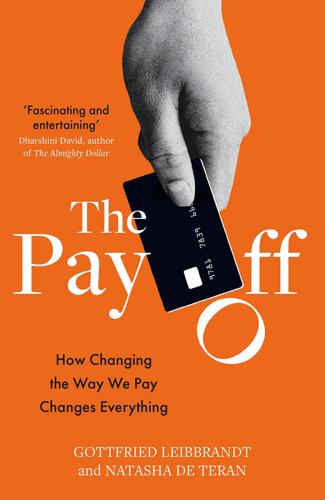
The Pay Off: How Changing the Way We Pay Changes Everything
by
Gottfried Leibbrandt
and
Natasha de Teran
Published 14 Jul 2021
Big on noise but scant on detail, the JPMorgan and Facebook announcements leave us, for now at least, with more questions than answers about their planned forays into digital currencies. But they have presented central banks with a challenge they cannot ignore. ______________________________________________________________________ 1 One possible exception is the International Monetary Fund’s unit of account: its Special Drawing Right (SDR) is a global reserve based on the world’s five major currencies, but it is scarcely used outside the organisation. 2 Under the gold standard a central bank could not, for example, devalue its currency (to stimulate the economy in a crisis) as it needed to maintain its value against gold – and therefore against all other currencies. 3 Norway, China, United Arab Emirates and Kuwait. 4 A custodian is a financial institution that holds customers’ securities for safekeeping in order to minimise the risk of their theft or loss. 24.
…
Russell) 4 printing money 34 private keys see public-private key encryption Promontory 257 public-private key encryption 16, 189–91, 195, 200, 214, 215 Puerto Rico 36–7 Punjab National Bank (PNB) 115 Q QR codes 75, 76, 84 QuadrigaCX 200 Qualcomm 226, 271 R railway design 68, 71 Ransomware 195 Rato, Rodrigo 262 Reagan, Ronald 65 real-time gross settlement (RTGS) 126–30, 240 Red Cross 150 red envelope tradition, Chinese 76 Red Packet digital gift 77 Reed, John 220 refugees and immigrants 265, 266 regulation authorities, financial 135, 156, 179, 184, 198, 208, 212, 217, 223–4, 225–6, 229, 230–6, 237–42, 265, 267, 268, 271–2, 273 Ren Zhengfei 251 Reserve Bank of India 86 retail payment flows 120, 122 retail payment instruments 18 retailer lawsuit against card networks, US 56–7 revaluation of currency 30 Revolut 89, 158, 159 Rickards, Jim 31 Ripple/XRP 197–8, 199 risk, payment 15–16, 19, 108, 112–16, 121, 122, 214 robbery, bank 107–8, 112–16 Rogen, Seth 112 Romania 172 Royal Bank of Canada (RBC) 150 Royal Bank of Scotland (RBS) 131 Russell, Bertrand 4 Russia 25, 89, 243, 253–4 Russian Central Bank 256–7 S Safaricom 74 Safeway 56 Sampo Bank 256, 257 sanctions 144, 213, 243, 244–5, 246, 249, 250–1, 252, 253, 254, 258, 266, 270 Sandinista National Liberation Front 65 Sands, Peter 28 Saxo 159 Scandinavia 67 Schneider, Ralph 40 Schuijff, Arnout 165 screen-scrapers 181–2 scrip 170, 219–20 Sears 56 Second World War 7–8, 12, 249 secondary sanctions, US 250, 253 Securities and Exchange Commission, US 198 securities market 132, 140, 247 semi-open payment systems 222 settlement risk 15–16 shopping channels 50 Shor, Ilan 261 shorting 188 Siemiatkowski, Sebastian 174 Signature cards 49–50, 57, 58, 69 Simmons, Matty 40 Simple 159 Single Euro Payments Area (SEPA) 60, 240 Single Euro Payments Regulation 98 Singles Day, China 76 size and methods, payment 120–1, 217, 272 small economies 5–6 smart contracts 194–6, 198–9 smuggling 27 Snowden, Edward 234 social media 110, 119, 179, 206 social media fraud 110 Sofort 180–1, 183 ‘soft’ credit checks 175 Sony Pictures 112 Soros, George 226 sort codes, bank 65–6 South Korea 112 sovereign gold coins 203 Soviet bloc countries, former 24–5, 257 Space Shuttle 71 Spain 81, 261–2 spear-phishing 110 Special Drawing Right (SDR), IMF’s 202 Specially Designated Nationals (SDNs) 250, 251, 252 spies, government 233–4 Spotify 202, 225 Spring Festival Gala, CCT’s 77 Square 155, 162–3, 164–5, 216, 269 Sri Lanka 113 stablecoins 196, 201 Standard Chartered 258–9, 260, 270 standing orders 82 Starling 158 Stephenson, George 68, 71 STET (Systèmes Technologiques d’Échange et de Traitement) 119 Stiftung Warentest 89 stimulus package payments, US 66 store of value, Libra as 206 store of value, money 202 Stripe 15, 162, 163–5, 216 sub-prime mortgages 132 Sun 119 Sunak, Rishi 35 Swartz, Lana 177 Sweden 32–3, 35–6, 58, 172 Swift network 102, 111, 113 114, 115, 140, 141–2, 147, 220, 222, 233–4 Swiss bank accounts 66 Switzerland 23, 67, 201, 260 Syria 266 T tabu 8 TARGET 86, 240–1 Target (US retailer) 109 TARGET2 241 TARGET2 Securities 241 targeted markets 179 tax evasion 27, 29, 258, 260 telegraphs 141 telex 141 Tencent 76, 77 Tenpay 73, 75, 76, 78–9, 85, 100, 161, 178, 216, 217, 220, 221, 222, 235, 270–1 terrorism 232–3, 250, 266 Tether (THT) 196–7, 199 Tez payment app 185 theft risk, payment gateways as 15–16, 108, 112–16, 121 three-corner model 174 Three Mobile 119 TIBER-EU 233 tokens – temporary digital identifiers 109, 189–90, 191, 195, 196, 205, 214 TOR (The Onion Router) 199 TransferWise 89, 146, 216, 241 Transport for London 11 travel shops 90 tribal societies, early 9 truck systems 219–20 Truman, Harry S. 249 Trump, Donald 115, 229, 243–5 tulip bulbs 6 Tumpel-Gugerell, Gertrude 241 Twitter 155 U Uber 82–3, 165, 169, 202 Ubiquity Networks 110–11 UBS 260 UFC-Que Choisir 89 unbanked people 6–7, 38, 212 underground/criminal economy 25, 27–8, 29–30, 199–200 see also financial crime; illegal activities; money-laundering ‘unicorn’ start-ups 146 Unified Payment Interface (UPI) 82–5, 182, 271 Union Pay 55, 59 unit of account, money as 202–4 United Kingdom cheques 117 credit card debt 101 decline of cash 32, 36 digital IDs 270 Faster Payments Service (FPS) 82, 83, 84, 86 GCHQ – National Cyber Security Centre 233 GCHQ – spies 234 HM Treasury 86 INSTEX transactions 245 JCPOA 243 United Kingdom (continued) neo-banks 158 Payment Systems Regulator 237 prepaid cards 37–8 Truck Act (1831) 220 United States of America $100 dollar bills 23, 24, 108 bank fines and financial crime 258–60, 270 checking accounts 91 CIA (Central Intelligence Agency) 65, 149, 264 Congress 57 credit card debt 45, 100 Currency Education Program (CEP) 25 Department of Homeland Security 232–3 Department of State 267 dollars as global reserve currency 246–7, 252 dollars circulating abroad 24–5, 30 domestic securities market 247 Fair Labor Standards Act (1938) 220 Federal Reserve 12, 36, 37, 113–14, 131, 232, 259 free banking era (1837–63) 208 international power of the dollar 246–54 JCPOA 243–4, 252, 254 National Security Agency (NSA) 114, 233, 234, 255 National Security Council (NSC) 64–5, 244, 264 Office of Foreign Assets Control (OFAC) 249–50, 252, 253, 255, 259 open banking 182 paying to pay 97, 101 regulation agencies 231–2 removal of access to WeChat app 270–1 sanctions 213, 243, 244–5, 246, 249, 250–1, 252, 253, 254, 258–9, 270 Securities and Exchange Commission 198 State Department 3–4 Treasury 9, 248, 249–50, 255, 260, 265 use of cheques/checks 63, 117 utility coins 193 V V-pay 58 van der Does, Pieter 165 van Hall, Walraven 7–8 Venezuela 213 Venmo 177 venture capital money 157 Verifone 48 Verizon 130–1 Vestager, Margrethe 224, 225–6 VHS vs Betamax 71, 221 Visa 3–4, 41, 42, 47, 49, 50, 53, 55, 56, 57–9, 90, 102, 161, 162, 174, 201–2, 204, 223, 269 Visa Europe 58–9 Visa Inc. 58–9 W Wal-Mart 56, 57 Watergate scandal 255 WeChat Pay app 270–1, 229 Weidmann, Jens 28 Western Union 144, 216 WhatsApp 184, 202 Which?
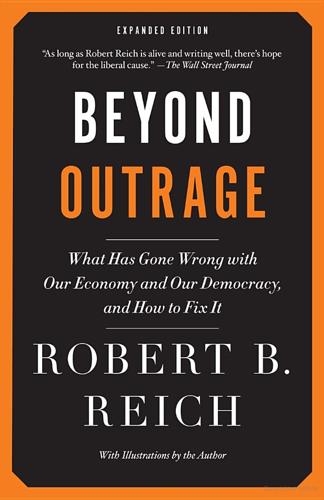
Beyond Outrage: Expanded Edition: What Has Gone Wrong With Our Economy and Our Democracy, and How to Fix It
by
Robert B. Reich
Published 3 Sep 2012
The Wall Street banks were too big to fail before the bailout and are even bigger now. Twenty years ago, the ten largest banks on the Street held 10 percent of America’s total bank assets. Now the six largest hold over 70 percent. And the biggest four have a larger market share than ever. Their size gives them special privileges at the Fed—lower interest rate charges and special drawing rights—that provide them with a competitive advantage over their smaller rivals. And with this advantage they’re sure to grow even larger. They must be broken up. REQUIRE BIG BANKS TO MODIFY UNDERWATER MORTGAGES In February 2012, five big banks reached a deal with government authorities over dubious mortgage practices and foreclosure abuses.

The Making of Global Capitalism
by
Leo Panitch
and
Sam Gindin
Published 8 Oct 2012
It would be written in close consultation with the officials from the recipient country, who felt it would be useful at home to have a message of international concern and support delivered to the head of their government.40 The concrete measures adopted in light of such discussions to deal with the top item on the agenda in the early 1960s on which the endangered fixed-rate currency exchange system depended—the defense of the dollar—were both “permanent” and “temporary.” The General Agreement to Borrow and IMF Special Drawing Rights were permanent; the London gold pool to stabilize the official price at $35 an ounce, and the issuance of “Roosa bonds” by the Treasury to guarantee against a devaluation of the dollar, were designed as temporary. Roosa called all of these the “rings of outer and inner defenses for the dollar and the system.”41 In fact, in the decades to come, long after fixed rates had been abandoned, the “swap networks” that the US Treasury and Federal Reserve developed at this time to coordinate interventions by the advanced capitalist states in foreign exchange markets would become central to achieving the much broader goal of defending the system of global capitalism in the face of economic and financial crises.
…
At a meeting in Washington an ECB official was greeted by his American host, who “brandished the Articles of Confederation, the 1781 precursor to the United States Constitution, to use as an example of why stronger unions become necessary.”12 It was clear by this time that all the heady talk between Russia, China and other emerging market states about using “SDRs” (the IMF’s “special drawing rights”), let alone the euro, to displace the dollar as the international reserve currency had amounted to little more than rhetoric. Rumors that the Middle East’s oil-exporting states would abandon the dollar vanished with the 2011 “Arab Spring,” just as May ’68 put a stop to expectations that France might lead a return to the gold standard.
…
In any case, “the package was not large by historical standards . . . less than 1 percent of the GNP for 1977, whereas the Kennedy package was 1.7 percent and the Ford package 1.5 percent of GNP.” Biven, Jimmy Carter’s Economy, p. 71. 19 The Fed established and expanded swap lines of credit with major foreign central banks, while the Treasury used the Exchange Stabilization Funds, drew on its reserve position at the IMF, resumed public auctions of gold, and sold special drawing rights to the Bundesbank for marks. It also attempted to navigate the growing financial market revolt by issuing US bonds denominated in foreign currencies in the German and Swiss capital markets. The sale of these so-called Carter bonds rested on a conceptual distinction between the credibility of the US state and the forward value of the US dollar.
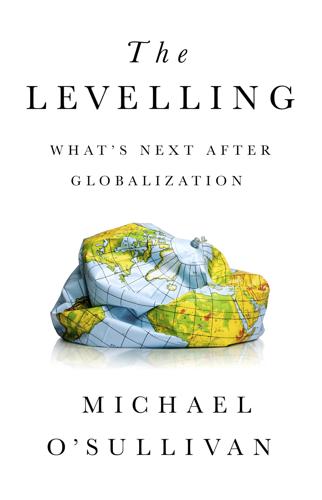
The Levelling: What’s Next After Globalization
by
Michael O’sullivan
Published 28 May 2019
His idea was that Bancor would, especially in times of recession, create a world reference currency that would help regulate imbalances in trade among nations and would therefore stimulate commerce. In the end, the Bretton Woods Conference opted to reference, or peg, currency values to the value of gold, though this effectively laid the grounds for the emergence of the dollar as the first among currency equals. Bancor might have a use today as an idea that could permit the IMF’s Special Drawing Rights (SDR) facility—effectively a supranational currency (ironically, in today’s terms it is like a cryptocoin, with a coordinating institution)—to allow both developed and less developed countries to issue what one might call IMF or SDR bonds.15 They would do so in the immediate aftermath of a financial crisis, which would hasten their financial and economic recovery.
…
See poles in multipolar world Reich, Robert, 127 religion, 90 Remonstrance of Many Thousand Citizens (Overton), 85–86 “rent economy,” 142 republic, 3, 278 Republican Party (US), 269–270 La République En Marche, 110–111, 117 research, and productivity, 142–143 Revival Bank, 300–301 “Rheinish capitalism,” 202 Richmond Federal Reserve, 214 right-wing parties, 54–55, 105–107 Riksbank, 171, 177 risks (financial) consequences, 206, 208–209 and debt, 173–174, 184–185, 201, 205–207, 209 treaty on, 184, 207–208 The Road to Somewhere (Goodhart), 79–80 Rodrik, Dani, 237–238 Rome and Roman Empire, 151, 152 Romer, Paul, 69 Roosevelt, Franklin D., 291 Roosevelt, Theodore, 293–294 rule of law, and economy, 161–162 Russia, 137, 143–144, 160, 218–219, 296 same-sex marriage, 49–50 Santa Fe Institute, 74 Santolaria, Nicolas, 26 Sawers, John, 249 Scales, Bob, 67 Schott, Peter, 35 Schröder, Gerhard, 107 Schwab, Klaus, 142 science, ideas and paradigm shifts, 71–72 Scotland, 87, 251–253 search engines, 214 Second French Empire, 227 Selassie, Bereket, 281 Shanghai Cooperation Organization (SCO), 245 Shiller, Robert, 65 Shorrocks, Tony, 42 Skilling, David, 271 skyscrapers, as power, 211–212 small-sized nations in multipolar world, 244, 245–246, 259–262 Smoot, Reed, 65 Smoot-Hawley Tariff Act (1930), 65 social change, 47–51 social media, 49, 74, 107, 108–109, 141, 273–274 social mobility, 47 soft vs. hard power, 219–220, 223–224 Solow, Robert, 159–160 Somewhere/Anywhere theory, 79–80 Soros, George, 107 sortition, 109–110 Spanberger, Abigail, 129 Special Drawing Rights (SDR) bonds, 265–266 Spinoza, 94 St. Mary’s Church, 3, 81, 82 Stability and Growth Pact, 195 stock market. See financial markets strength of countries, 158–159, 162–164, 165 Sufi, Amir, 176 Survey of Consumer Finance, 43 Sweden, 6 Syriza, 110 Taleb, Nassim, 69 technology automation issues, 46 in China, 224, 231, 272–273 economy and economic growth, 142, 214 first globalization, 58, 60, 61–62 as force, 58–59 frameworks and standards, 297–299 and globalization, 213–214 and governments, 272–273 and inequalities, 46 interconnections worldwide, 8–9 Levellers as model, 96, 98, 99–100 pace of change, 26 political parties, 115 and productivity, 145 regulation, 275–276 as solution, 26 transparency, 262 Thatcher, Margaret, 133 Thirty Years’ War, 240 314 Action, 129 “Thucydides’s Trap,” 224 TomTom Traffic Index, 50 top 1 percent of wealthy, 40, 42 “total factor productivity,” 144 trade China, 33, 216, 232 and first globalization, 59–60 and globalization, 30, 31, 32–33 and jobs, 35 Levellers’ demands, 89 policy and agreements, 32–33 and politics, 34, 35–36 problems and disputes, 24, 33–34 protectionism, 34 recess, 30, 31, 32 US vs.
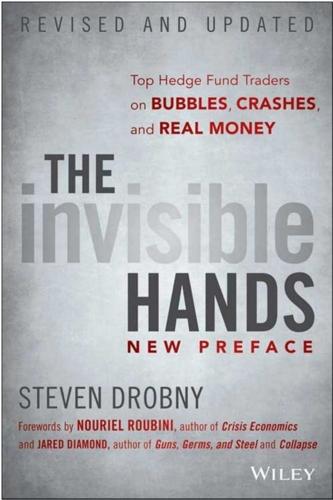
The Invisible Hands: Top Hedge Fund Traders on Bubbles, Crashes, and Real Money
by
Steven Drobny
Published 18 Mar 2010
A clear concern is the structural flaw in the global monetary system, whereby the U.S. deficit is everyone else’s surplus. As such, everyone else is simply wed to the level of U.S. debt and implicitly to the U.S. economy’s growth rate. Nevertheless, regardless of the rhetoric, it would be impossible to move to an SDR model (see box) within the immediate investment horizon. Special Drawing Rights (SDR) The SDR is an international reserve asset created by the International Monetary Fund (IMF) in 1969 to supplement member country reserves and to support the Bretton Woods fixed exchange rate system. The SDR is a potential claim on the freely usable currencies of IMF members. Holders of SDRs can obtain currencies in exchange for their SDRs in two ways: first, through the arrangement of voluntary exchanges between members; and second, through the IMF, which designates members with strong external positions to purchase SDRs from members with weak external positions.
…
See Risk premia payment Price/earnings (P/E) multiples, exchange rate valuation (relationship) Primary Dealer Credit Facility, placement Prime broker risk Princeton University (endowment) Private equity cash flow production tax shield/operational efficiency arguments Private sector debt, presence Private-to-public sector risk Probability, Bayesian interpretation Professor, The bubble predication capital loss, avoidance capital management cataclysms, analysis crowding factor process diversification efficient markets, disbelief fiat money, cessation global macro fund manager hedge fund space historical events, examination idea generation inflation/deflation debate interview investment process lessons LIBOR futures ownership liquidity conditions, change importance market entry money management, quality opportunities personal background, importance portfolio construction management positioning process real macro success, personality traits/characteristics (usage) returns, generation risk aversion rules risk management process setback stocks, purchase stop losses time horizon Titanic scenario threshold trades attractiveness, measurement process expression, options (usage) personal capital, usage quality unlevered portfolio Property/asset boom Prop shop trading, preference Prop trader, hedge fund manager (contrast) Protectionism danger hedge process Public college football coach salary, public pension manager salary (contrast) Public debt, problems Public pensions average wages to returns endowments impact Q ratio (Tobin) Qualitative screening, importance Quantitative easing (QE) impact usage Quantitative filtering Random walk, investment Real annual return Real assets Commodity Hedger perspective equity-like exposure Real estate, spread trade Real interest rates, increase (1931) Real macro involvement success, personality traits/characteristics (usage) Real money beta-plus domination denotation evolution flaws hedge funds, differentiation impacts, protection importance investors commodity exposure diversification, impact macro principles management, change weaknesses Real money accounts importance long-only investment focus losses (2008) Real money funds Commodity Hedger operation Equity Trader management flexibility frontier, efficiency illiquid asset avoidance importance leverage example usage management managerial reserve optimal portfolio construction failure portfolio management problems size Real money managers Commodity Investor scenario liquidity, importance long-term investor misguidance poor performance, usage (excuse) portfolio construction valuation approach, usage Real money portfolios downside volatility, mitigation leverage, amount management flaws Rear view mirror investment process Redemptions absence problems Reflexivity Rehypothecation Reichsmarks, foreign holders (1922-1923) Relative performance, inadequacy Reminiscences of a Stock Operator (Lefèvre) Renminbi (2005-2009) Repossession property levels Republic of Turkey examination investment rates+equities (1999-2000) Reserve currency, question Resource nationalism Returns forecast generation maximization momentum models targets, replacement Return-to-worst-drawdown, ratios (improvement) Reward-to-variability ratio Riksbank (Sweden) Risk amount, decision aversion rules capital, reduction collars function positive convexity framework, transition function global macro manager approach increase, leverage (usage) measurement techniques, importance parameters Pensioner management pricing reduction system, necessity Risk-adjusted return targets, usage Risk assets, decrease Risk-free arbitrage opportunities Risk management Commodity Hedger process example game importance learning lessons portfolio level process P&L, impact tactic techniques, importance Risk premia annualization earning level, decrease specification Risk/reward trades Risk-versus-return, Pensioner approach Risk-versus-reward characteristics opportunities Roll yield R-squared (correlation) Russia crisis Russia Index (RTSI$) (1995-2002) Russia problems Savings ratio, increase Scholes, Myron Sector risk, limits Securities, legal lists Self-reinforcing cycles (Soros) Sentiment prediction swings Seven Sisters Sharpe ratio increase return/risk Short-dated assets Short selling, ban Siegel’s Paradox example Single point volatility 60-40 equity-bond policy portfolio 60-40 model 60-40 portfolio standardization Smither, Andrew Socialism, Equity Trader concern Society, functioning public funds, impact real money funds, impact Softbank (2006) Soros, George self-reinforcing cycles success Sovereign wealth fund Equity Trader operation operation Soybeans (1970-2009) Special drawing rights (SDR) Spot price, forward price (contrast) Spot shortages/outages, impact Standard deviation (volatility) Standard & Poor’s 500 (S&P500) (2009) decrease Index (1986-1995) Index (2000-2009) Index (2008) shorting U.S. government bonds, performance (contrast) Standard & Poor’s (S&P) shorts, coverage Stanford University (endowment) State pension fund Equity Trader operation operation Stochastic volatility Stock index total returns (1974-2009) Stock market increase, Predator nervousness Stocks hedge funds, contrast holders, understanding pickers, equity index futures usage shorting/ownership, contrast Stops, setting Stress tests, conducting Subprime Index (2007-2009) Sunnies, bidding Super Major Survivorship bias Sweden AP pension funds government bond market Swensen, David equity-centric portfolio Swiss National Bank (SNB) independence Systemic banking crisis Tactical asset allocation function models, usage Tactical expertise Tail hedging, impact Tail risk Take-private LBO Taleb, Nassim Tax cut sunset provisions Taxes, hedge Ten-year U.S. government bonds (2008-2009) Theta, limits Thundering Herd (Merrill Lynch) Time horizons decrease defining determination shortening Titanic funnel, usage Titanic loss number Titanic scenario threshold Topix Index (1969-2000) Top-line inflation Total credit market, GDP percentage Total dependency ratio Trade ideas experience/awareness, impact generation process importance origination Traders ability Bond Trader hiring characteristics success, personality characteristics Trades attractiveness, measurement process hurdle money makers, percentage one-year time horizon selection, Commodity Super Cycle (impact) time horizon, defining Trading decisions, policy makers (impact) floor knowledge noise level ideas, origination Tragedy of the commons Transparency International, Corruption Perceptions Index Treasury Inflation-Protected Securities (TIPS) trade Triangulated conviction Troubled Asset Relief Program (TARP) Turkey economy inflation/equities (1990-2009) investment rates+equities (1999-2000) stock market index (ISE 100) Unconventional Success (Swensen) Underperformance, impact Undervaluation zones, examination United Kingdom (UK), two-year UK swap rates (2008) United States bonds pricing debt (1991-2008) debt (2000-2008) home prices (2000-2009) hyperinflation listed equities, asset investment long bonds, market pricing savings, increase stocks tax policy (1922-1936) trade deficit, narrowing yield curves (2004-2006) University endowments losses impact unlevered portfolio U.S.
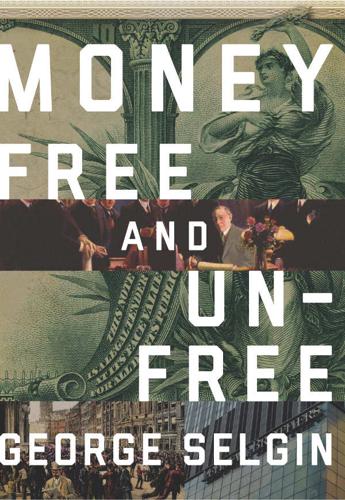
Money Free and Unfree
by
George A. Selgin
Published 14 Jun 2017
In truth, the world’s most successful international monetary arrangement appears to have worked automatically, with deliberate planning playing an even more minor part in its operation than it had played in its emergence. The institutional setup consisted, first of all, of nothing other than the sum of national gold standard arrangements: there was nothing in it akin to the International Monetary Fund or Special Drawing Rights or other such centralized and bureaucratic facilities. Indeed, as T. E. Gregory (1935: 7–8) observes, “The only intelligible meaning to be assigned to the phrase ‘the international gold standard’ is the simultaneous presence, in a group of countries, of arrangements by which, in each of them, gold is convertible at a fixed rate into the local currency and the local currency into gold, and by which gold movements from any one of these areas to any of the others are freely permitted by all of them.”
…
The change, besides ruling out private conversions, discouraged those countries that depended on the United States either for military protection or for economic aid, or that simply wished to maintain friendly diplomatic relations with it, from cashing in dollars. Although it came close to converting the Bretton Woods gold-exchange standard into a de facto dollar standard, the new arrangement also succeeded for a time, with the help of special drawing rights created to supplement the previously available IMF gold tranches, at preserving the appearance of some sort of gold standard. But as the supply of foreign-held dollars continued to increase, their holders overcame their politically motivated reluctance to cash them in: “Piling up dollars,” Rueff (1972: 190) observed, will eventually “make people allergic to them.”
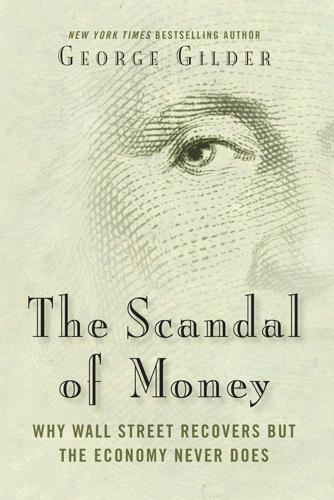
The Scandal of Money
by
George Gilder
Published 23 Feb 2016
CHAPTER 10: HYPERTROPHY OF FINANCE 1.Ronald McKinnon, Money in International Exchange: The Convertible Currency System (New York, NY: Oxford University Press, 1979), 3 and passim. Writing in 1978, just seven years after Nixon rescinded Bretton Woods, the Stanford economist showed that various currency cocktails, such as the International Monetary Fund’s then-heralded “special drawing rights,” could not address any real monetary problems and that commodity baskets (whether “full bodied” or fractionally reserved) would serve no purpose either, despite their cumbersome and costly practicalities. He demonstrated convincingly that gold and the dollar are the real alternatives. I emerged from this definitive early text with the belief that control of money as a key facet of sovereignty is a treacherous temptation, since “monetary policies” by definition create “noise” in the market.
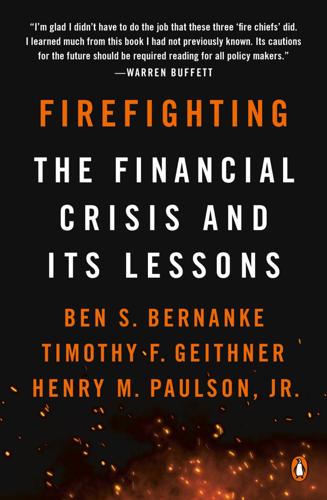
Firefighting
by
Ben S. Bernanke
,
Timothy F. Geithner
and
Henry M. Paulson, Jr.
Published 16 Apr 2019
Department of Housing and Urban Development Libor-OIS London Interbank Offered Rate–Overnight Indexed Swap rate MBS mortgage-backed securities MLEC Master Liquidity Enhancement Conduit MMF money market fund NBER National Bureau of Economic Research PDCF Primary Dealer Credit Facility PPIP Public-Private Investment Program QE Quantitative Easing SAAR seasonally adjusted annual rate SBA 7(a) Small Business Administration 7(a) Securities Purchase Program SCAP Supervisory Capital Assessment Program SDR special drawing right SPSPAs Senior Preferred Stock Purchase Agreements TAF Term Auction Facility TAGP Transaction Account Guarantee Program TALF Term Asset-Backed Securities Loan Facility TARP Troubled Assets Relief Program TLGP Temporary Liquidity Guarantee Program TSLF Term Securities Lending Facility CHARTING THE FINANCIAL CRISIS U.S.
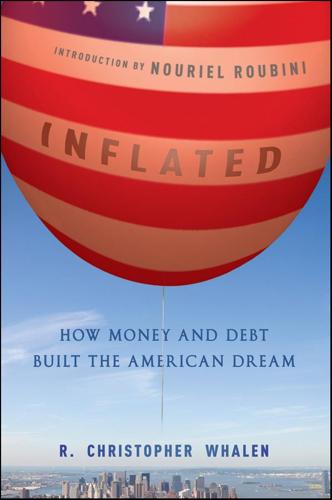
Inflated: How Money and Debt Built the American Dream
by
R. Christopher Whalen
Published 7 Dec 2010
This facility was intended to avoid situations such as those that affected Great Britain before and after WWI, when the country almost ran out of foreign reserves and collapsed. More modest fluctuations in currency values were meant to be managed by the various members of the IMF or by drawing upon “special drawing rights” (SDR)—a form of ersatz global currency that, like the dollar, was and is backed by nothing. This arrangement did not really address the underlying economic problems in the various nations, but merely obscured the reality with a veneer of government intervention. John H. Barton, Bart S. Fisher, and Michael P.
…
Raskob support Roosevelt nomination Smith, Rixey (Carter Glass: A Biography) Smoot-Hawley tariff enactment impact role Snyder, John Socialist parties, growth Social Security impact inflation driver Social Security Act, Supreme Court (upholding) Social Security Trust fund, level Soft money, Republican party position Solomon, Tony Solorzano, Cuauhtemoc Cardenas Southern industry, Cotton Whig/Republican banker stake (substantiality) Sovereign borrowing, return Sovereign states, foreign lending (problem) Soviet communism, military advance Soviet threat Sowell, Thomas (Conflict of Visions) Spanish-American War, cessation (Hobart negotiation) Special drawing rights (SDR) Speculation age forms, acceptance issue, Fed (impact) model, rise Speculative estimates, usage Speculative lending, cessation Spooner, John Sproul, Allan St. Louis Federal Reserve Banks, FRASER database maintenance Stalin, Joseph FDR, opposition rise Standardization, usage (growth) Standard Oil, Rockefeller creation Stanislaw, Joseph State chartered banks currency, usage debt repudiation impact numbers (1935) State debt accumulation, Washington (impact) defaults Steagall, Henry B.
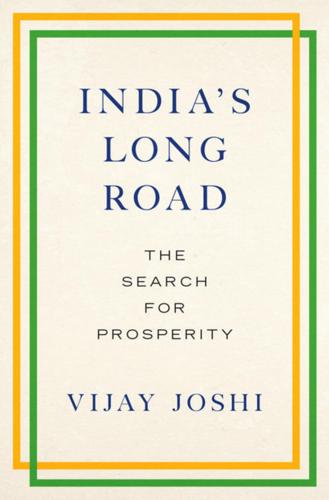
India's Long Road
by
Vijay Joshi
Published 21 Feb 2017
The IMF’s regular quota resources are too small to provide enough unconditional liquidity in a global crisis, even though the doubling of quotas that had been agreed by the G20 and the IMF is finally about to happen.26 There would be understandable objections to a quota expansion big enough to cope with all emergencies since it would involve a huge and permanent expansion of unconditional liquidity. The neatest way to meet the need for liquidity would surely be to make it possible to have a quick and temporary increase in the supply of Special Drawing Rights (SDRs) in an emergency. (The increase could be temporary because SDRs can be cancelled after the emergency is over.) But this would require amendment of the IMF articles. India should work towards mobilizing support for this, though it would of course be resisted by the IMF’s largest shareholders.
…
References [ 335 ] 336 ╇ 337 INDEX Aadhar card, 206, 207, 214, 304 and Aadhar-╉linked bank accounts, 207, 214, 287, 304 administration, see government administration advanced countries (ACs), 53, 65, 97, 129, 132, 141, 145, 188, 202, 255, 257, 262, 263–╉4, 266–╉8, 277, 298 Agreement on Government Procurement (GPA), 269, 298 agriculture, 55, 67–╉70, 93, 100–╉4, 121, 126, 141–╉2, 163, 229, 248, 267, 292–╉3, 296, 309 exports, 103 marketing, 101, 293, 309 price controls in, 102 public investment in, 102, 293, 296, 309 reform in, 100–╉4, 292–╉3 share in GDP, 67–╉8 subsidies in, 102–╉3, 293, 296, 309 surplus labour from, 70 trade liberalization in, 103, 267 workers in, 66–╉7 Agricultural Produce Marketing Committees (APMCs), 101 air quality, 124–╉6 ASEAN, 265 Asia Pacific Economic Cooperation (APEC), 266, 298 backward states, 29 balance of payments, 22, 139–╉40, 155–╉9, 248–╉50, 254, 259, 299 Bangladesh, 28, 176, 186, 187 Bank Investment Company (BIC), 118, 295 bankruptcy, 7, 97–╉9, 154–╉5, 291, 294 Basel committee on Bank Regulation (BCBR), 258 Basel III standards, 258 basic income, 197, 210–╉15, 216–╉19, 285–╉8, 293, 303–╉4 cost of providing, 216–╉19 recommended magnitude of, 212, 214, 216–╉19 universal, 211, 212, 214–╉15, 216–╉19 Bharatiya Janata Party (BJP), 22–╉3, 24–╉5, 227–╉8, 278, 311–╉12 -╉led NDA government, 117 see also Modi Government black money, 237–╉8 Board of Industrial and Financial Restructuring (BIFR), 97–╉8 business houses, 61, 62 capital, 26, 52–╉3, 69–╉70, 72, 105, 248, 258, 291 accumulation of, 52–╉3, 58–╉60, 312; see also investment -╉intensive sectors, 69, 80 markets, 97–╉9 movements, 155, 159, 252, 262, 267 of banks, 154, 258, 284, 295 per worker, 52, 52 physical capital, 52–╉3 reform of capital markets, 97–╉9, 291 see also human capital; investment; environment capital capital account convertibility (CAC), 155, 159, 253, 262 capital controls, 155–╉6, 262–╉3 capital flows, 157, 250, 254, 282 volatility of, 262 338 capital-output ratio, 19 capitalism, 60–2 carbon tax, 130 cash transfers, 91, 164, 206–14, 288, 296 objections to, 208 technology of, 206–10 universal, 214–15 see also basic income Central Government Public sector enterprises (CPSEs), 113–23 Central Vigilance commission (CVC), 115, 234 Centre and States, 161, 228, 313–15 child/infant mortality, 20, 72, 125, 186 nutrition, 28, 186, 189 China, 6, 8–10, 25, 28, 29, 55, 70, 72, 73, 124, 125, 130, 131, 132, 163, 176, 179, 185, 186, 249–50, 252, 254, 255, 256–7 Churchill, Winston, 3 civil servants, 43, 151, 233, 308 climate change, 128–33 and India, 129–33, 256–7 and low-carbon strategies, 131 and Paris Conference, 131-2 coal, 88, 89, 114, 122, 130, 132, 214, 285 collective action, 42, 97, 226, 229, 306 companies, 26, 52, 61, 72, 78, 79–80, 97–8, 114–16, 148, 153–4, 284 competition, 26, 42–3, 61, 92–4, 115–17, 120–2, 181, 183–5, 290, 303, 268, 313–14 Competition Commission, 93, 283, 290 concentration, 61 conditional cash transfers (CCTs), 209–10 Congress Party, 18, 22–3, 24, 24, 25, 114, 227–8, 229, 235, 278, 295, 301 contracts, 41–3, 119–21, 123, 230, 237, 308 contract labour, 67, 79, 290 Contract Labour Act (CLA), 79, 81, 82 contract teachers, 179, 182, 301–2 controls, 18, 19, 43, 44, 87–91 coordination, 37, 39, 43, 92, 104, 120, 152, 256, 264, 292 [ 338 ] Index corporate: investment, 23, 26–7, 56, 59–61, 145–8, 285 savings, 26, 27 sector, 58, 61–2, 154, 284 corruption, 22, 44, 74, 79, 96, 105, 185, 207–8, 235–43, 307–10 courts, 234–5 credit, 19, 25, 27, 74, 76, 99, 118, 188, 280–1, 284 access to, 75–6, 253 bank, 153–4, 276 directed, 75 for small firms, 75, 295 short-term, 22 wilful defaulters and, 99 criminal politicians, 238 crisis, 22, 23, 30, 157–9, 259, 260, 280, 315 of 1991, 26 crony capitalism, 7, 8, 62, 105, 235–43, 277, 283, 306–7, 310, 313 crop insurance, 296, 309 cross-border outsourcing, 70, 250, 263 crowding out, 151, 160 current account deficit, 23, 27, 59, 139, 155, 156, 156–7, 248–9, 253, 280–1 debt overhang, 148, 153–5, 284 decentralization, 179, 185, 232–3, 306, 308, 314–15 ‘deep fiscal adjustment’, 165, 279, 285–8, 290, 300, 309–10, 314 and economic reform, 91–2, 163–5, 212–14, 285–8 and universal basic income 285–7 Modi government and, 287–8 democracy, 3–4, 9, 10, 18, 35, 36, 141, 225–6, 229, 232–3, 306, 311–12, 315–17 demographic transition, 52, 59, 72–3 deprivation, 27–30, 35, 201 devaluation, 18, 23, 252, 254 developing countries (DCs), 15, 27, 44, 53–4, 130, 132, 141, 176, 252, 256, 263–4 diesel, 88–9, 126, 164, 287, 288 disadvantaged: castes, 306 groups, 28–9, 204, 226, 228, 339 Doha Development Agenda, 300 Draft National Health Policy, 305 droughts, 17–18, 22, 104, 130, 139, 141, 316 Ease of Doing Business, 60, 74, 75, 77, 94, 105, 284, 289–90, 308 see also World Bank East Asia, 55, 68, 70, 71, 105, 155, 157, 247, 253, 265 East Asian crisis, 157, 253, 262 economic development, 8, 16, 35, 44, 67, 72, 101, 225, 230, 243, 277–8 economic reform/reforms, 54, 77–82, 87–91, 92–4, 94–7, 101–4, 104–5, 117, 119–23, 126–7, 130–1, 151–3, 154, 159, 162–5, 182–5, 188–91, 195–7, 210–15, 233, 240–3, 263–9, 275–308 in 1980s, 22, 24, 26 in 1991, 4, 26, 27 education, 19–20, 37, 42–3, 53–5, 175–85, 212–13, 229–32, 300–2, 304–5, 310 enrolment in, 28–9, 176, 184 ‘free and compulsory’, 181, 231–2 government schools and, 42, 179–83, 229, 232, 301–2 higher, 29, 184–6, 302 pedagogic practices in, 179, 301 primary, 28–9, 42, 176–83, 185, 300, 305 private providers in, 234 private schools in, 177, 172–7, 301–2 private universities in, 184, 185 quality of, 53, 179, 183, 301, 312 reform, 181–5, 301–2, 305 secondary, 29, 53, 71, 176–83, 185, 300, 305 teacher accountability in, 179, 301–2, 305 teacher effort in, 179 universal free, 304 vocational, 185 vouchers, 181 see also Right to Education Act election expenditures, 238, 241, 307–8 electricity, 89–90, 117, 121–2, 214, 309 Electricity Act of 2003, 122 Emergency, 18 see also Gandhi, Indira employment, 19, 51, 65–8, 71, 73, 77, 79–82, 94, 203–4, 288–90, 300–1 formal and informal, 67, 69 in organized and unorganized sectors, 66–7 problem, 54, 65–70, 77, 87, 288–90, 297 sectoral shares, 68 see also labour ends of economic policy, 35–6 energy, 88, 113, 128–31, 254, 296 entrepreneurship, 40, 61, 62, 75, 313; see also corporate sector environment, 123–33 capital, 123–8 degradation of, 124, 126–7, 312 Modi government and, 296 pollution, 124–6, 296, 309 property rights and, 123–4 protection of, 102, 113, 165, 229, 293 reform, 124–8, 130–3, 293, 296 exchange rate, 155–6 and external payments regime, 155 policy, 155–9, 282 reform of policy framework, 159 regime, 155, 282 exports, 23, 55, 69–70, 72, 92, 103, 153, 159, 248–9, 255, 281–2, 297 external economic engagement, 257–69, 297–300 Modi Government and, 299–300 external: balance, 140, 155–9, 279, 282 liberalization, 253, 297 payments regime, 155–9 see also balance of payments external effects/externalities, 38, 39, 43, 124, 130, 191–2, 286 factor markets: capital, 97–9 finance 99–100 labour, 77–82, 94 land, 94–7 Modi government and, 294 reform of, 94–102, 291 Index [ 339 ] 340 farmers, 89–91, 101–3, 126–7, 143–5, 202, 228, 238, 293 and pricing of fertilizers, 90 and subsidies, 90 self-sufficient, 103 see also agriculture federalism: competitive, 314 cooperative, 214, 314 see also Centre and States female labour force participation rate, 73 fertilizers, 90, 103, 164, 206, 212, 285, 290 Finance Commission, 161, 228, 281, 308, 313, 314–15 financial: inclusion, 99–100, 291, 309 institutions, 76, 100, 140, 258 repression, 152, 162, 282 sector reform, 99–100, 294 firms: in unorganized sector, 76, 77 size-distribution of, 71 see also small firms; companies fiscal: adjustment, 162, 165 balance, 159–65 consolidation, 30, 59, 159, 161–3, 281, 282, 309 crackdown, 18 deficits, 30, 139, 143, 148, 156, 157, 159–65, 213, 280, 287 policy/policies, 25–6, 30, 142, 145, 151–2, 159–65, 281, 282 problem, 159, 280 reform, 92–3, 159–65, 282 sustainability, 160, 280 see also ‘deep fiscal adjustment’; subsidies Fiscal Responsibility Act ( 2003), 162 food: articles, 141, 143, 144 market, 142–3, 144 security, 41, 203, 267 subsidies, 91, 143, 164, 202–3, 205–6, 212–13, 288 see also public distribution system; issue prices; procurement prices Food Security Act (FSA), 164, 202, 231 [ 340 ] Index foreign: aid, 18, 256 borrowing, 23, 26, 30, 156 capital, 247 investment, 24, 247–50, 255, 258–9, 297–8, 299–300 relations, 8, 9 foreign direct investment (FDI), 93, 151, 250–1, 253, 268, 284, 299 from China, 254 Indian diaspora’s role in, 254–5 liberalization of, 229, 299 policy regime, 250 reform, 93, 299 foreign exchange: intervention, 156 reserves, 156, 157, 158, 249, 260; see also global reserve system forests, 127–8 free capital mobility, 157; see also capital account convertibility Gandhi, Indira, 17–18, 22, 26, 227, 229, 233, 237 Gandhi, Rajiv, 22–3, 26 Gandhi, Sonia, 24 Gini Coefficient, 29, 30 global: ambition 8–10 credit crisis, 25, 58–9, 139, 160, 253, 258–9, 277 economic issues, 257–9 engagement, 247–69 exchange rate system, 259 imbalances, 259–60 manufacturing networks, 250 reserve system, 261–2 slowdown, 25, 151; see also recession supply chains, 264 global credit/financial crisis (GFC), 25, 27, 58–9, 139, 253, 257–9, 262, 277 global warming, see climate change globalization, 247, 254; see also global engagement goods and services, 41–3, 92, 94, 113, 163, 206, 210, 247–8, 257, 290–1, 293 carbon-intensive, 130 reform of markets in, 87–91, 92–4, 290 341 goods and services tax (GST), 92–3, 291, 293–4 government administration, 230–5, 307, 308 consumption, 59 corruption in, 235–43 debt, 160–1 employees, 43, 239 expenditure, 163–5 failures, 7, 39–40, 44, 187–8, 191–2, 276, 304 interest payments, 165 intervention, 19, 40, 87, 91, 104, 144, 236 procurement, 236–7, 241 services, 44 spending, 88, 102, 131, 148, 163, 203, 302 subsidies, 44, 87–92, 102, 180 see also state gross fixed capital formation (GFCF), 145 growth acceleration, 15, 16, 27, 55, 61 accounting, 54–8 fast, 5–6 high-quality, 5, 8, 276, 279, 315–17 Hindu rate of, 15, 100 of output per head/per worker, 51–4 rate of, 4, 5–6, 15–16, 19, 23, 26, 30, 36, 51, 53–7, 101, 144, 151 rapid, 17, 19, 35, 51, 52, 54, 60, 65, 70, 73, 87, 93, 104, 119, 153, 230, 236, 240, 279, 297, 300, 302, 309 slow, 19–20, 144, 275 slowdown, 25, 56, 144, 145, 153–4, 281, 317 sources of, 51–8 ‘super-fast’, 6, 28, 139, 157, 297 sustainable, 35, 113, 123–33, 279 health/health care, 7, 19, 37, 43, 175, 186–8, 188–97, 300, 302–3, 304–5, 310, 312, 313 future of, 195–7 money follows patient scheme, 303 primary care, 19, 187, 191–4, 195–6, 302–3, 305 public health and, 72, 186–8, 302 quality of, 189, 191–7 reform of, 195–7, 305 secondary care, 187, 189–91, 195–6, 302–3, 304–5 state intervention in, 187 universal, 195 health insurance, 39, 190, 205, 210, 303 high-income countries, 4–5, 51, 276, 316 Hinduism, extremist version of, 311–12 Hirschman, A. 42 household savings, 58–9 human capital, 21, 53, 66, 189, 254, 287, 289, 302 inclusion, 6, 30, 35, 91, 99, 113, 135, 175, 215, 293, 300 see also financial inclusion income: agricultural, 163 distribution, 29, 36–7, 44, 256–7 redistribution, 43, 88, 91–2, 201–19, 253 ‘India shining, ’ 24 Indian capitalism, 60–2 Indian university system, 184; see also education, higher India’s global engagement evolution and extent, 247–52 impact on India, 252–5 impact on the world, 255–7 India’s stance on global economic issues, 257–69 Indradhanush initiative, 295 industry/industries, 26, 55, 61, 67–70, 88, 94, 97, 100, 101, 104–5, 113–14, 153, 158, 267 Industrial Disputes Act (IDA), 78–82, 256 industrial policy, 104–5, 284 reform of, 104–5 industrialization, 105, 202, 253 inequality, 4, 29–30, 226 regional, 29 inflation, 18, 23, 25, 27, 59, 139–45, 151–3, 157–8, 162, 166–8, 208, 279–80 and government debt ratio, 162 and Modi government, 152, 280–1 demand factors, 144–5 high, 36, 59, 140, 144–5, 148, 151, 162, 279 Index [ 341 ] 342 inflation (Cont.) supply-side factors, 142–4 targeting, 151, 166–8, 279–80 see also monetary policy information problems, 39 information technology (IT) sector, 61, 70, 233, 240, 249, 253, 298 infrastructure, 7, 24, 60, 113, 119–23 and the Modi government, 295–6 reform, 119–23, 292, 295–6 see also Public–Private Partnerships Insolvency and Bankruptcy Code, 97–8, 294; see also bankruptcy institutional decay, 226, 229, 230, 306–7 Integrated Child Development services(ICDS), 189 Intended Nationally Determined Contributions (INDCs), 132 international: liquidity, 260–1 migration, 252, 254–5 money, 258–63 reserves, 259, 299 International Monetary Fund (IMF), 18, 22, 23, 26, 253, 259–62 international monetary system, 259, 260–2 international trade, 18–19, 78, 92–4, 101, 103, 156–7, 247–8, 252–5, 255–7, 263–9, 276–7, 297–300, 310 and ‘behind-the-border’ items, 264 between India and EU, 300 liberalization of, 18, 24, 38, 93, 103, 117, 163, 248, 253, 263, 290, 298 policies, 92–3, 248, 256, 262–3, 297 policy reform, 93, 263–9, 297–300 investment, 19–20, 26–7, 39–40, 52–3, 56, 60, 93-5, 102, 145, 148, 153-5, 250–2, 282–5 and Modi Government, 282–5 climate, 60, 282–5 corporate, 26, 59, 145–8 household, 59 in infrastructure, 59, 95, 119, 120–1, 163 in 1980s, 23 private, 59, 89–91, 103, 119, 120, 123, 148, 162, 280–1, 283, 287 public, 17, 22, 23, 59, 91, 102, 104, 119, 123, 213–14, 292–3, 296, 309 [ 342 ] Index reforms in climate for, 74–6, 282–5 revival, 284 risk-premium on, 148 see also public–private partnerships issue prices, 91, 143, 164, 202 Jan Dhan, 207 Janata party coalition government, 18 Judicial Appointments Bill, 235 justice, administration of, 43 Kashmir, 8, 227 kerosene, 88–9, 164, 285, 288 labour, 7, 19, 39, 52, 54–5, 65, 69–74, 76–8, 79–80, 94, 104–5, 176, 229, 257, 288–91 as resource, 52, 55, 69 bias against use of, 69–72 -demanding growth, 76 -intensive industries, 80, 253 -intensive manufacturing, 70, 72, 250, 266, 298 -intensive products, 70, 72, 73, 77, 80, 290 low-skilled, 70–2, 77, 254 reallocation of, 54 skilled, 77 shift from agriculture, 69, 70 training, 38, 185 see also contract labour; labour laws; labour market labour force participation rate, 73 labour laws/regulations, 65, 77–82, 94, 97, 253, 289–90, 294, 299, 309 reform of, 77–82, 294 studies on impact of, 80 labour market, 7, 39, 77–82, 94, 290, 310 reform of, 81–2, 294 labour productivity, 52, 54, 66–9, 69, 72, 73, 76, 104, 288–9 growth of, 55 in organized industry, 69 see also output per worker land, 55, 74, 76, 94–7, 120, 211, 213, 236, 291, 294, 309–10 Land Acquisition, Rehabilitation and Resettlement Act (LARR), 95–6, 294 343 land market 94 price-discovery in, 96, 291 land law: reform, 95–7, 294 liberal democracy, 35–6, 279, 311–12, 315–16 liberalization, 7, 18, 22–4, 26, 54, 61–2, 104, 159, 215, 252–5, 262 of foreign direct investment (FDI), 299 license raj, 27, 184, 307 licenses, 19, 40, 100, 122, 230, 235, 237–9, 283 life expectancy, 20, 186 literacy, 28 adult, 20 female, 29 local government, 314–15 low-income countries, 28, 186, 256, 300, 302 macroeconomic stability, 7, 35, 37, 43, 53, 59, 139–65, 279–82 and external balance, 155–9 and fiscal balance, 159–65 and internal balance, 141–55, 281–2 Modi Government and, 280–2 Mahatma Gandhi National Rural Employment Guarantee Scheme (NREGS) 203–5, 210, 213, 215, 239 arguments for and against, 204–5 description of, 203–4 ‘Make in India’, 105, 310 managed floating, 155–6, 280–1; see also exchange rate policy Mandal commission, 22, 226–7; see also reservations manufacturing, 68, 71–2, 250, 310 share of employment in, 68 market/markets, 7, 19–20, 35–41, 43–4, 102–4, 123–4, 154, 187–8, 276–7, 288–93 failures of, 37–9, 40–1, 44, 75, 94, 187–8, 190, 191–2, 276, 303–4 for factors of production, 65–72, 77–82, 94–102, 289, 291, 294 for goods and services, 87–94, 290–1, 293–4 liberalization of, 36, 229 prices, 37, 41, 90–1, 95, 143, 164, 202, 288 reform of, 77–82, 87–105, 290–6 virtues of, 37 see also competition; natural monopoly Mayawati, 227 mega-regional agreements, 297, 309 merit goods, 38, 213 Mid-Day Meals scheme, 177, 206 middle class, 313 mobile banking, 207 Modi, Narendra, 25 foreign tours, 299 pan-Indian electoral support for, 312 as RSS pracharak, 312 Modi government, 82, 96, 100, 105, 278, 280–1, 299–300, 304–6, 307–8, 310–12 Monetary Framework Committee, 151, 281 monetary policy, 142, 144–5, 151–2, 166–8, 281–2 transmission of, 152, 281–2 reform of policy framework, 151–2, 166–8, 281–2 monopolistic exploitation, 39, 117 multi-currency system, 261–2 multilateral negotiations, 264 Narasimha Rao, P.V., 23, 26 National Rural Employment Guarantee, Act, 232; see also Mahatma Gandhi National Rural Employment Guarantee Scheme nationalization, 40, 41 natural capital, 123–8 natural monopoly, 38–9, 117 Nayak, P.J., 118, 285, 295 Nehru, Jawaharlal, 4, 17–18 non-tradable goods, 117 nuclear agreement with US, 24 nutrition, 186, 189 oil prices, 18, 22, 89, 144, 152, 159, 288 oil-related products, 88, 285 ‘Old India Model’, 275–5 organized industry, 69–70 Index [ 343 ] 344 organized sector, 65–7, 69–70, 73–4, 76–7, 79–80, 94, 283, 288–9 bias against labour in, 69–72 definition of, 66 and demand for labour, 69–72, 73–82 labour productivity in, 69 output per worker, 52, 57, 69, 87, 288 ownership, 43–4, 113–18, 123, 211, 279, 288–96, 299, 310 Pakistan, 8–9, 17, 18 Paris conference on climate change, 131–2 Partial Reform Model, 22–7, 276 Patel, U., 151, 281 payments regime, see external payments regime per capita: growth, 5–6, 306, 317 income, 4–5, 6, 30, 51, 75, 240, 256, 276, 316 planning, 17, 39, 40 plurilateral agreements, 267, 269, 298 police, 234 political: awakening, 226, 228, 306 economy, 8, 30, 209, 225–30, 278, 315, 317 political parties, 92, 227, 229, 237, 238, 241–2, 306–7, 308 financing of, 241, 307 pollution, 38, 124, 125–6, 189, 235–6, 293 population, 21, 27–8, 52–3, 72–3, 77, 101, 105, 123, 163–4, 210–12, 215 age-distribution of, 72 poverty, 4, 15, 21, 27–30, 44, 53, 65, 66, 77, 88, 201, 210–11 among disadvantaged groups, 28 extreme, 4, 28, 211, 215, 277, 286–7, 300, 309 in states, 28 programmes, 205 power, 8–10; see also electricity Pratham, 177, 180 preferential trade agreements (PTAs), 264–7 price/prices/price system, 19, 42–4, 87–91, 96, 103, 122, 126, 128, 130, 141, 202–3, 212, 214, 237, 285, 293 [ 344 ] Index price and output stability 141–55 price controls, 7, 87–91, 102, 236, 285 price stabilization, 203 price subsidies, 90, 206, 285, 300 reform, 87–91, 92–7, 101–3, 121–2, 125–6, 130–1, 285, 290, 292, 293, 294, 296 see also inflation; monetary policy; issue prices; procurement prices priority sector lending, 99 private: companies, 7, 61, 94, 95, 102, 114–16, 119, 291 health insurance markets, 190–1 ownership, 36, 101, 116 partners, 42, 119 providers, 43, 175, 190–3, 234, 303–4 sector, 17, 37, 41–4, 62, 101, 191–2, 194–6, 232–6, 292–3, 302–3, 306 privatization, 24, 41–2, 92, 113–18, 121, 165, 213, 287, 291, 295 and efficiency, 116 fiscal case for, 116 procurement prices, 91, 143, 145, 152 production, pattern of, 69 productivity, 23, 26, 27, 52, 53–4, 60–2, 66, 70, 87, 94, 233, 288–9 growth of, 62, 87, 113, 116, 247, 253, 288, 290–2, 297, 310, 312 see also labour productivity; total factor productivity promoter/promoters, 62, 98, 128, 154, 308 prosperity, 4, 276 public and private providers, 43, 193, 303–4 public distribution system (PDS), 41, 91, 143, 164, 202–3, 209, 239, 253 reform of, 202–3 public goods/public services, 7–8, 37–8, 41–3, 92, 175, 181, 201, 210, 228, 230, 242, 277, 313–14 public health, see ‘traditional public health’; see also health/health care public interest litigation, 125–6 public–private partnerships, 42, 59, 95, 119–23, 292, 296, 309 reform of, 119–20, 295–6 Public Procurement Bill, 241 345 public sector, 7, 19–20, 42–3, 58, 66, 115, 119–21, 180, 193, 196 public sector banks (PSBs), 118, 154–5, 284, 295, 309 reform of, 118, 154, 295 public sector enterprises (PSEs), 19–20, 24, 41, 93, 113–18, 164–5, 180, 213, 287, 291, 295, 309 and the Modi government, 294 reform of, 115–18, 291, 295 public telecom companies, 114 Punjab, 30, 102, 127, 226, 227 separatist movement in, 22 purchasing power parity (PPP), 5, 276 pure public goods, 37–8, 43, 102, 140, 164, 188, 191, 210, 212, 277, 285–6 quantitative easing, 158, 262 Radical Reform Model, 276 -308 Ram, K., 227 rail services, 90, 285 Rajan, R., 99, 152, 159 Rangarajan, C., 28, 210 Rashtriya Swasthya Bima Yojana (RSBY), 191, 195–6, 205, 303, 305 Rashtriya Swayamsevak Sangh (RSS), 311–12 real effective exchange rate (RER), 158, 281 recapitalization, 118, 154, 162, 285 recession, 18, 23, 36, 160; see also slowdown Reddy, Y.V., 157 reform/reforms, see economic reform/ reforms Regional Comprehensive Economic Partnership (RCEP), 265, 266, 297 regulation, 7, 43–4, 77–8, 117–18, 125, 240–2, 258–9, 276–7, 288–93, 303–4, 307 remittances, 249, 254 reservations, 22, 72, 234, 276 Reserve Bank of India (RBI), 100, 145, 151–2, 154, 156–9, 162, 258, 279, 281–2, 284, 295 resource/resources allocation, 7, 36, 44, 87, 91–3 degradation of, 124, 127 scarcity of, 38, 40, 236–7, 260 Right to Education Act (RTEA), 181–3, 231, 301; see also education Right to Information Act (RTIA), 240 rights, 18, 36, 38, 40, 43, 76, 95, 96, 98, 123–4, 231–2, 236–7, 268, 293, 307, 311, 313, 315 sanitation, 28, 76, 126, 188–9, 196, 201, 203, 302, 312 Sarva Shiksha Abhiyan, 177 savings, 19, 26–7, 52–3, 58–9, 70, 73, 92, 152, 213, 282, 286–7 domestic, 56, 156 household, 27, 58–9 public, 58–9, 148 scandals and scams, 25, 27, 62, 151, 191, 203, 237 security, 9–10 services, 41–3, 55, 67–8, 70, 71, 72, 93–4, 100, 104–5, 247–50, 266–8, 290–2, 298 shadow banks, 258 Shanta Kumar committee, 203 Shastri, Lal Bahadur, 17 Sick Industrial companies Act (SICA), 97–8 Singh, Manmohan, 23–5, 206 Singh, V.P. 22–3; see also Mandal Commission; reservations skill/skills, 77, 252, 310; see also human capital; vocational and technical education and training skill-intensive sectors, 69–70, 104–5 small firms, 71, 72, 73–7, 283, 295 small-scale industry reservations, 72 social: awakening, 226, 306 democracy, 36, 201–2, 300 security benefits, 66–7 social enablement 163, 165, 201, 202, 300-6 Modi government and, 304–6 social protection, 163, 201–22, 279, 300, 304 framework for, 202, 203, 210, 300–4 Modi government and, 304 reform, 208-15 schemes, 202, 206, 210, 300 social safety net, 201–22, 239, 277 Index [ 345 ] 346 South Korea, 5, 6, 20, 68, 70, 157, 262, 265, 316 Special Drawing Rights (SDRs), 261–2 state: accountability, 230–5 capacity, 231–5, 254 intervention, 7, 19, 36, 37-44, 142, 187–90, 192, 226, 228, 300, 302 and market relationship, 8, 36–44 ownership, 18, 36, 40, 41, 113-18, 163 political economy of, 225–30 reform of, 233–5, 241–3, 247 state electricity boards (SEBs), 89–90, 122, 309; see also UDAY state public sector enterprises (SPSEs), 114, 115, 116 states: deprivation in, 28 growth in, 27 inequality between, 29–30 poverty in, 28 see also Centre and States sterilized intervention, 156 stressed assets, 122, 154, 284 subsidies, 30, 38, 43–4, 87–92, 101–4, 163–4, 205–8, 212–13, 230, 285–8, 293–4 elimination of, 214–15, 230 explicit, 163–4 hidden, 87, 92, 123, 164, 212, 285 problems in unwinding, 214 Subbarao, D., 158–9 Subramanian, T.S.R., 127 Swachh Bharat, 306, 310 Targeted Public Distribution System (TPDS), see Public Distribution System tax/taxes/tax system, 35, 38, 40, 44, 89, 92–3, 124–5, 128, 131, 163, 286–7, 290–1 exemptions, 93, 163, 213, 284 indirect tax, 92–3, 163, 290–1 on international trade, 93, 247; see also trade liberalization minimum alternate tax, 299 reform, 92-3, 162–3, 291, 293 retrospective, 151, 299 and revenue, 35, 37, 51, 163 [ 346 ] Index see also government expenditure; subsidies teachers, 179–83 telecom spectrum, 38, 236 Tendulkar, S., 28, 210–11, 216 total factor productivity (TFP), 52, 53–7, 72, 80, 87, 104; see also productivity tradable goods, 88, 117, 291 trade, see international trade Trade Facilitation Agreement (TFA), 264–5 Trade in Services Agreement (TISA), 269, 298 trade unions, 66, 79, 82 and political parties, 82 teachers’ unions, 179, 183, 229 ‘traditional public health’ (TPH), 188–9, 196, 303 tragedy of the commons, 38 Transatlantic Trade and Investment Partnership (TTIP), 265 Trans-Pacific Partnership (TPP), 265–6, 298 transparency, 44, 240 UDAY, 296 unemployment, 65 United Progressive Alliance (UPA), 24–5, 95, 97, 117, 143, 164, 202, 283, 307–8 United States, 8, 252, 255 and China rivalry, 10 gilded age, 240, 243 as ‘hyper-power’, 9 and India, civil nuclear agreement, 9 University Grants Commission (UGC), 184–5 unorganized sector, 66–7, 69–70, 76–7, 78, 99, 288–9 definition of, 66 low-labour-productivity in, 66 low-quality jobs in, 73 output of, 67, 69 as ‘own account enterprises’, 76 workers in, 65 urban: infrastructure, 97, 120, 123, 292 land, 96, 131 urbanization, 96 347 Vajpayee, Atal Behari, 24 value-added tax (VAT), 92–3 vocational and technical education and training (VTET), 185 water, 75, 90–1, 101–3, 125–7, 206, 212, 285, 290, 293, 309 over-extraction of, 126 pricing, 126–7 women, 29, 72, 73, 204, 205, 210, 233, 304, 311; see also female labour force participation rate; literacy, female workforce, 66–7, 77, 80, 94, 292 income of organized, 145 informal, 67, 69 mal-distributed, 66 non-farm, 67 poor, 100 in unorganized sector, 66–7 see also labour/labour force World Bank, 28, 186 ‘Ease of Doing Business’ reports of, 74, 283 and foreign aid, 18 survey of Indian firms, 74 World Trade Organization (WTO), 263–4, 267–8 Yadav, Lalu Prasad, 227 Yadav, Mulayam Singh, 227 zamindari, abolition of, 226 Index [ 347 ] 348
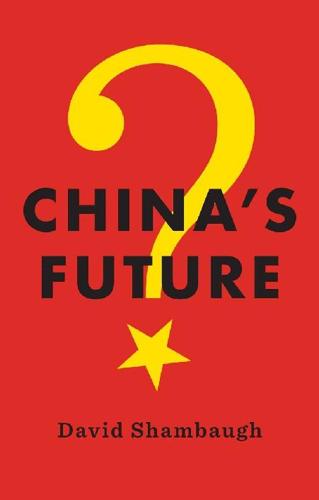
China's Future
by
David Shambaugh
Published 11 Mar 2016
People’s Bank of China Governor Zhou Xiaochuan also signaled to the International Monetary Fund recently that China planned the “managed convertibility” of its currency in a step-by-step manner.39 On November 30, 2015 China succeeded in having the renminbi included in the IMF’s basket of currencies that enjoy “special drawing rights” (SDRs). State-Owned Enterprise Reform Another huge challenge is undertaking state-owned enterprise (SOE) reform—but, like other areas, it too is a huge conundrum.40 Unlike the SOE problem twenty years ago when the rust-belt factories in the northeast and eastern seaboard cities were bleeding the national economy by running deeply in the red while not turning profits or producing goods that were competitive in the marketplace, today the challenge is making them more competitive and less monopolistic.
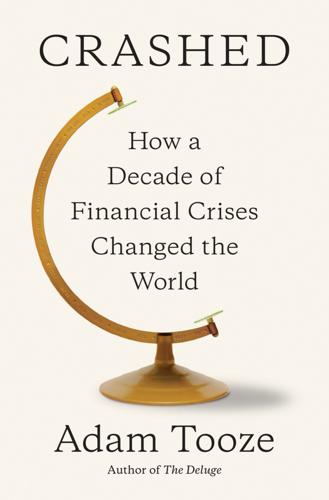
Crashed: How a Decade of Financial Crises Changed the World
by
Adam Tooze
Published 31 Jul 2018
Ever since, America had been free to spend at will while accumulating huge deficits. To ensure true stability, as John Maynard Keynes had argued for the British delegation in 1944, the world needed a global monetary unit independent of any national currency. The obvious candidate, Zhou suggested, was the IMF’s unit of accounting and credit, the Special Drawing Rights (SDR). With this in place there would be a true anchor of stability that was not at the mercy of a single superpower. On that basis one could then talk about rules binding on both deficit and surplus nations, the United States as well as China. One might wonder why the Chinese regime would wish to change a system from which it had benefited so spectacularly.
…
Warburg, 83 Saakashvili, Mikhail, 125 Sachsen LB, 144 Saez, Emmanuel, 455 Salomon Brothers, 48–49, 52 Samaras, Antonis, 425, 435, 516 Samsung Electronics, 256–57, 260 Sandbu, Martin, 102, 364 Sanders, Bernie, 566–67, 576, 608 Sanio, Jochen, 188 Santander, 184 Sapin, Michael, 531 Sarkozy, Nicolas, 2–3, 72, 138, 139–40, 218, 219, 221, 264, 423 bank bailouts and, 186, 187, 193 Deauville announcement and, 361–62 election defeat of 2012, 429 financial crisis of 2008 and, 2–3, 73, 186–87, 193 G20 Cannes meeting and, 409–10, 412, 413 G20 London summit and, 268–69, 271 Greek debt crisis and, 325–26, 333, 342 Merkel-Sarkozy ECB plan, 387–89 Papandreou replaced as prime minister and, 409–10 Saudi Arabia, 160, 503 Saudi Arabian Monetary Authority, 35 savings and loan crisis, 44–45 savings glut, 38 Sberbank, 503, 505 Schäuble, Wolfgang, 113, 329, 332, 333, 354, 369, 377, 425, 437, 512, 522, 530–31, 592, 595–96 Schlaes, Amity, 368 Schmidt, Helmut, 44 Schroeder, Gerhard, 94–95 Schularick, Moritz, 35 Schulz, Martin, 496 Schumer, Charles, 82, 88, 470, 582 Schwartz, Anna, 38–39 SDRs. See Special Drawing Rights (SDRs) Sechin, Igor, 225, 499 secular stagnation thesis, 451–52, 453–54 Securities Market Programme (SMP), 399 securitization in Europe, 103 US mortgages and, 48–51, 55–56 sequester cuts, 464, 465–66 Serbia, 232 Setser, Brad, 35, 172, 609 shadow banking, 69 Sheets, Nathan, 220, 229 Shevardnadze, Eduard, 125 Shin, Hyun Song, 9 Sibneft, 129 Sichuan earthquake, 244 SIFI.
…
See Securities Market Programme (SMP) Snowden, Edward, 484 Sobinbank, 224 Socialists (France), 429, 435 Socialists (Portugal), 536 Socialists (Spain), 535 Société de Financement de l’Économie Français (SFEF), 194 Société de Prise de Participation de l’État (SPPE), 194 Société Générale, 152, 194 Sócrates, José, 342, 374 Sonderfonds Finanzmarktstabilisierung, 194–95 Sony, 158 Soros, George, 119 South Africa, 477, 601 South Korea Asian financial crisis of 1997 and, 7, 32, 255–56 capital controls adopted by, 475 financial crisis of 2008 and, 8, 9, 256–57, 260–61 financial sector rescue, 260–61 foreign reserves of, 256 won depreciation, 257 won-dollar carry trade in, 256–57 sovereign wealth funds (SWF), 34–35 Spain bank bailouts in, 193 caja crisis, 431 debt crisis in, 322, 326, 430–37 demonstrations in, 374–76 ECB’s bond buying program, 2011, 398–99 general elections, December 2015, 535 household wealth lost in, 156 housing bubble bust, 2012, 430–32 Moody’s downgrade of, 433 real estate boom in, 105–6, 107–9 unemployment in, 374, 431 SPD, 97, 287, 329, 377, 429, 430, 435 Special Drawing Rights (SDRs), 266 special purpose vehicles (SPVs), 85 Der Spiegel, 40, 263, 381, 468 SPVs. See special purpose vehicles (SPVs) Stability and Growth Pact, 93, 101, 355 Standard & Poors, 49, 64, 385, 392–93, 421, 536 Stark, Jürgen, 400 Stark, Pete, 182 State Administration of Foreign Exchange, 35 State Owned Enterprises (SOE), 248 Steinbrück, Peer, 72, 96–97, 185, 187, 189, 195, 218, 219, 233, 287, 288, 328, 329 Stiglitz, Joseph, 267, 523 stimulus American Recovery and Reinvestment Act (See stimulus package, US) automatic stabilizers and, 283–86 comparison of, 273–75 failure to sustain, 291 in China, 243–51 in Germany, 287 Republican tax plan of 2017, 584–85 Tax Relief, Unemployment Insurance Reauthorization, and Job Creation Act, 352–53 stimulus package, US, 276–83 home-owner relief, failure to provide, 281 politics involved in passage of, 277–79, 280–82, 584 scope of, 279 success of, 279–80 Store, Jonas Gahr, 263 Stournaras, Yannis, 519 Strauss-Kahn, Dominique, 270, 343, 344, 382, 383 stress tests of European banks, 315, 357–58, 406 of US banks, 298–301, 309–10 structured investment vehicles (SIVs), 60–61, 68–69 Stubb, Alex, 561 subprime mortgages, 47–48, 56 adjustable rate mortgages, 70 amount issued by 2007, 66 on bank balance sheets, 59–60 “big short” positions and, 70–71 default rates, 70 expansion of, in final boom in, 63–64 funding mechanisms for, 60–62 rating agencies and, 56, 64 worse quality loans, profit spread on, 64 Süddeutsche Zeitung, 315 Summers, Larry, 32, 35, 41, 54, 67, 68, 111–12, 200, 261, 280–81, 284–85, 294, 304–5, 352, 405, 446 secular stagnation thesis of, 451–52, 453–54 Sviaz Bank, 224 Swagel, Phillip, 198 swaps.

The Long Game: China's Grand Strategy to Displace American Order
by
Rush Doshi
Published 24 Jun 2021
American structural power could not be bypassed without leaving the system, which would be economic suicide, or building a parallel set of infrastructure—accordingly, China chose the latter option. Dollar Diversification and Renminbi Promotion After the Global Financial Crisis, China began to call for a diversified international monetary system with a reduced role for the dollar and for alternatives like the IMF’s special drawing rights (SDR) as well as the renminbi (RMB). Might this have been motivated by economic pursuits or interest group power? Hongying Wang answers no, noting that China’s position “can’t be neatly explained in terms of its economic interest.”58 A substantial decline in the value of the dollar would damage China’s export-driven economy and reduce the value of China’s enormous holdings of dollar-denominated assets.
…
See also port projects Second Artillery Corps, 90–92, 93–94 Second Gulf War, 88 Second Opium War, 28 Second Sino-Japanese War, 29 Second World War, 6, 183, 277, 300–1, 314, 330–31 secrecy, 17 Securities and Exchange Commission, 254–55 security threats, 18t, See also terrorism Seeking Truth, 42–43 Selected Works (Deng), 51 self-constraint policy, 108 Self-Strengthening Movement, 28 Senior Officials Conference, 229 Senkaku/Diaoyu islands, 308 September 11, 2001 terrorist attacks, 129 Serbia, 132–33 Shambaugh, David, 26, 37, 52 Shanghai Cooperation Organization (SCO) alternative explanations for China’s engagement, 127–28 background of China’s participation in, 126–33 China’s support for modest institutionalization, 129–30 and multipolarity discourse, 165 and political blunting strategies, 102, 123, 132–33 and political building strategies, 215, 226, 232 as response to US threat, 128–33 security benefits of, 130–33 Shanghai Five, 126, 132 Shanghai Institute of International Studies, 274–75 Shangri-La Dialogue, 122–23 Shang SSN, 84 shashoujian weapons systems and aircraft carrier technology, 99 alternative explanations for, 80–82 and China’s shifting priorities, 69–70 and Chinese military texts, 71 as element of blunting strategy, 73–74 growing urgency of, 79–80 and legacy of the Gulf War, 74–77 strategic tradeoffs, 78–79 Shipborne Weapons, 85–86 shipbuilding industry, 1, 94–95, 189–90, 191–92, 194, 202–3 Shirk, Susan, 108–9 Shi Yunsheng, 83–84 signals intelligence, 47 Silk Road, 232 Singapore, 175, 202–3, 236 Sino-Indian border, 297–98, 307–8 Sino-Japanese War, 28 Sizzler missiles, 85 skeptics of China strategy, 7–8 Society for World Interbank Financial Telecommunication (SWIFT), 246–47, 249–54 Solomon Islands, 295, 320 SONAR systems, 201 Song, Weiqing, 130 Song-class submarines, 84–85 South Asia, 22 South China Sea and China’s acquisition of aircraft carriers, 98 and China’s expansionist goals, 4 and China’s global ambitions, 278 and China’s military modernization, 70–71, 81–82, 90–91, 96–97 and China’s role in ASEAN institutions, 121, 124–25 and China’s role in regional institutions, 132–33 and departures from Deng’s approach, 175 and evolution of China’s political strategies, 108 and military building strategies, 184–85, 188–89, 195, 202, 204–5 and US asymmetric strategies, 297–98, 304–5, 307–8, 318 South China Sea Code of Conduct, 108 Southeast Asian Treaty Organization, 120–21 South Korea, 202–3, 213–14, 223–24, 327–29 and US asymmetric strategies, 305 South Vietnam, 94 sovereignty issues, 132 Soviet collapse and changing US-China relationship, 48, 51 and China’s military modernization, 69–70, 71, 72–73 and China’s perception of US threat, 55–56 and China’s use of regional institutions, 105–6 and Chinese Leninism, 26 impact on China’s trade strategies, 135–36, 137, 138–40, 141, 147–48 and multipolarity discourse, 162 and overview of China’s grand strategy, 4 and political blunting strategies, 102, 107 and post-Cold War geopolitics, 52–53 and US asymmetric strategies, 308 Soviet Union and American declinism narrative, 331, 332 and changing US-China relationship, 50–51 and China’s acquisition of aircraft carriers, 191, 193–94 and China’s global ambitions, 272, 284–85 and China’s military modernization, 72, 95–96 and China’s perception of US threat, 55 and Cold War geopolitics, 50–53 and Cold War studies, 2–3 and context of China’s goals, 6–7 contrasted with US, 25 and Deng’s “Tao Guang Yang Hui,” 64 and US asymmetric strategies, 316–17 See also Soviet collapse Sovremenny class destroyers, 198–99 special drawing rights (SDR), 247, 248–49 special economic zones, 137 Special Working Group, 227, 229 speeches as source material, 42–43, 42t Spence, Aiken, 243–44 Spratly Islands, 98 Sri Lanka, 207, 241–44, 245, 295, 319, 320 Stalin, Joseph, 50–51 Standard and Poor’s, 254–55 standard-setting bodies, 328 Standing Committee, 57, 150, 153–54 State Council, 33–35, 91 State Oceanic Administration, 183, 189–90, 193–94, 206–7, 294–95 state-owned enterprises (SOEs), 244 status of force agreements, 324 stealth technology, 68, 83–84, 198–99 Steinberg, Jim, 306 STEM training, 326 “stickiness” of grand strategy, 18–19 Storey, Ian, 94–95 strategic guidelines, 64–65 strategic lines of communication (SLOCs), 187–88, 190, 195–96, 205, 293–94 strategy defined, 15.
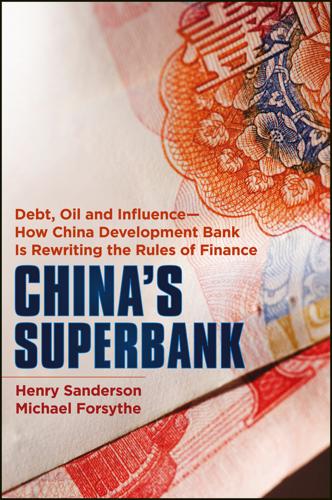
China's Superbank
by
Henry Sanderson
and
Michael Forsythe
Published 26 Sep 2012
China was exposed to the US dollar but couldn’t hedge that exposure in the market without contributing to the dollar’s depreciation. China’s international assets had increased from 15 percent of its GDP in 2004 to 26 percent in 2009, but its currency was hardly used in international trade settlements. In March 2009, Zhou Xiaochuan, the head of the central bank, called for special drawing rights (SDRs), units of value used by the IMF that are based on a basket of currencies, to replace the US dollar’s role as China’s reserve currency. CDB was the first bank to sell so-called dim sum bonds in Hong Kong in 2007; it was the first time a bond had been sold in China’s currency outside its borders.
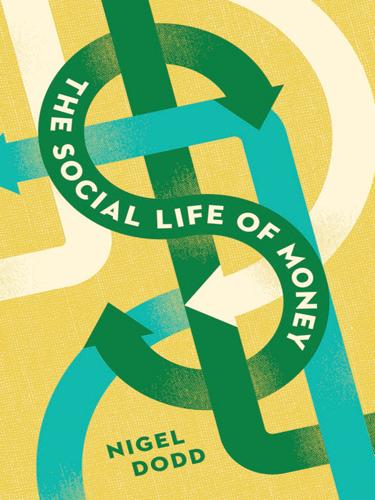
The Social Life of Money
by
Nigel Dodd
Published 14 May 2014
Monetary union seems desirable for such states because of the scale of the threat posed by unrestricted capital flows to most existing national currencies when their exchange rates are not fixed (Eichengreen 2008).9 Fourth, there is the decline of the U.S. dollar as the world’s reserve currency, and relatedly, the “currency wars” and the strengthening of the Chinese renminbi, along with other BRIC (Brazil, Russia, India, and China) currencies (Cohen 2011; Fratzscher and Mehl 2011; Rickards 2011). Fifth, in the wake of that decline, there is the prospect of a global currency such as the special drawing rights (SDRs) issued by the IMF (Cohen 2011; Mundell 2012). Sixth, and finally, there is the growth of monetary forms that are not issued by states, such as digital monies. Although these forms are by no means new, their development has accelerated since the 1990s, and there are now several thousand complementary currencies in operation worldwide (North 1999, 2005, 2007).
…
See also Gemeinschaft, Gesellschaft; perfect society socius, 251 Sontag, Susan, 190 South Sea bubble, 126 South Sea Company, 126 sovereign debt, 2, 58, 66n17, 71, 91, 110, 127, 129, 131, 219, 242, 253, 257–58, 265, 388 sovereign wealth funds, 66, 220–21 sovereignty, 216, 245, 250, in Agamben, 266n; and banks, 116, 237; in Balibar, 261–62; in Bodin, 223–24, 261–62; in Derrida, 165, 185, 209; in the Eurozone, 46, 127, 129, 252, 253, 255, 261, 264–66, 267; and the fiscus, 261–62; in Hardt and Negri, 238, 239, 244, 245, 247; of the individual, 185, 360; and insolvency, 260–61; in Karatani, 86–87; and law, 224; in Marx, 53; and monetary governance, 45, 246, 307–8; and money, 20, 43, 44, 77, 110, 217, 237, 246–47, 249, 251; and the multitude, 247; in Proudhon, 53; in Schmitt, 223–24, 266, 267; and the state, 106; and territory, 226. See also sovereign debt spatial fix, 66, 68, 192, 238 special drawing rights (SDRs), 214 special investment vehicles (SIVs), 116, 123 specie, 15. See also coinage speculation, 3n, 18n4, 22, 44, 61n20, 201; and fictitious capital, 68–69; financial, 70, 75–76; in Marx, 56–58, 64; in Minsky, 117, 118; in property, 113; as violence, 44 speculative finance, 118 speech, and money, 37, 42; versus writing, 180–81 speed, of circulation, 201n29, 390; of debt contraction, 119; of electronic trade, 307; of mobile payments, 378, 379; and the transmission of information, 36 Spengler, Oswald, 247 Sperber, Jonathan, 50n5 spheres of exchange, 283–84 Spinoza, Baruch, 247, 251, 332, 337, 338; on desire, 229; ethics, 228; Ethics, 335; multitude, 77, 238, 239, 246, 268, 293 spiritual poverty, 334 Square Wallet, 378, 379 stagflation, 68, 192 stamp scrip, 314, 349 state, 5, 6, 13, 14, 26, 299–300; and accumulation by dispossession, 68; and banking, 102, 106, 236, 382; as a borrower, 71; and capitalism, 68; and civil society, 220; and colonialism, 60; and the conflict between creditors and debtors, 109–10; and cooperatives, 84; and credit money, 57; and empire, 77; and finance, 51, 59–60, 66, 111; and free market money, 360; as the guarantor of money, 46, 79, 111, 235; and imperialism, 60, 300; infrastructural power of, 212, 217; and insolvency, 267; lender of last resort, 74, 246; versus market, 247, 306–7; and money of account, 104, 109–10, 297; and the monetary base, 79; and monetary governance, 4, 21, 26, 71, 74, 379; and monopoly capitalism, 60–61; naming rights over of money, 104, 105, 109–10, 111; and the origins of money, 18–19; and primitive accumulation, 64, 66, 68; in Proudhon, 353, 357; in Rousseau, 38; in Schmitt, 224; and seigniorage, 378; and society, 8, 26, 106, 211, 226; taxation, 103; violence. 96.
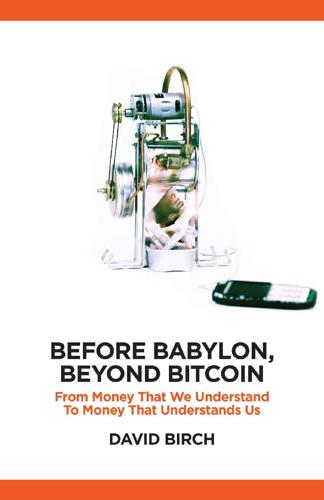
Before Babylon, Beyond Bitcoin: From Money That We Understand to Money That Understands Us (Perspectives)
by
David Birch
Published 14 Jun 2017
Since a great deal of the discussion about money is confused because of a lack of understanding about the nature of money, let me begin by being clear on this topic. As most texts about money begin by stating, money has four basic functions. It is a unit of account. The unit of account does not, of course, have to have any physical reality. The European Currency Unit (ECU) and the Special Drawing Right (SDR) are examples. Brazil’s transition from the cruzeiro to the real began by establishing ‘units of real value’ as market-based units of account, and gradually adding other functions as the currency moved to have status as a legal tender. It is an acceptable medium of exchange. Whether it is packets of data or packets of Marlboro, money is useless as a medium of exchange unless it is acceptable to both parties to a transaction.
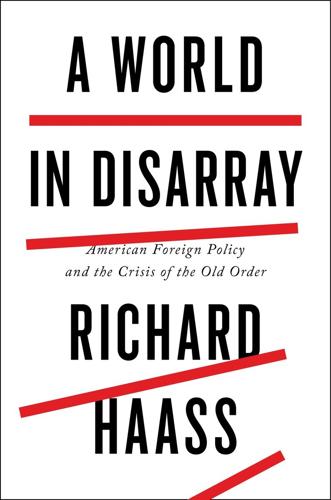
A World in Disarray: American Foreign Policy and the Crisis of the Old Order
by
Richard Haass
Published 10 Jan 2017
Federal Reserve thus acted as both the country’s and the world’s central bank; the problem in the eyes of many resulted from the fact that the world had no oversight or control over the U.S. central bank or U.S. economic policy more broadly. Attempts to strengthen the role of other currencies or to create a new global currency (so-called special drawing rights, or SDRs, issued by the IMF came the closest) amounted to little. The 2008 financial crisis and the recession that followed made clear the system’s vulnerability to U.S. mismanagement. There was in effect no global central bank or financial regulator. • • • This survey of global cooperation adds up to a mixed picture of significant global cooperation in some areas, limited cooperation in others, and some significant gaps.
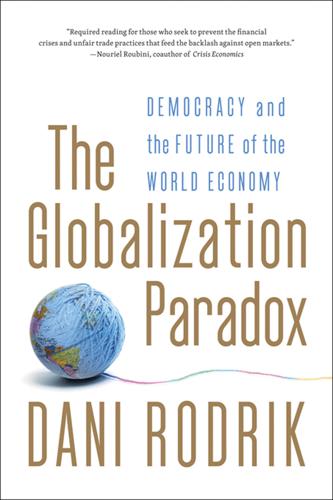
The Globalization Paradox: Democracy and the Future of the World Economy
by
Dani Rodrik
Published 23 Dec 2010
As world trade and finance expanded, the “policy space” that the existing controls afforded shrank and external constraints began to play a larger role. The IMF and its resources proved inadequate, despite the creation of an artificial reserve asset designed to augment its lending capacity (the Special Drawing Right or SDR). When the country at the center of the system, the United States, came under attack in the late 1960s, the regime of fixed exchange rates could no longer be sustained. Moreover, the belief system that supported capital controls began to dissolve over the 1970s and was replaced in subsequent decades by an alternative narrative emphasizing the inevitability of liberalization and the benefits of capital mobility.
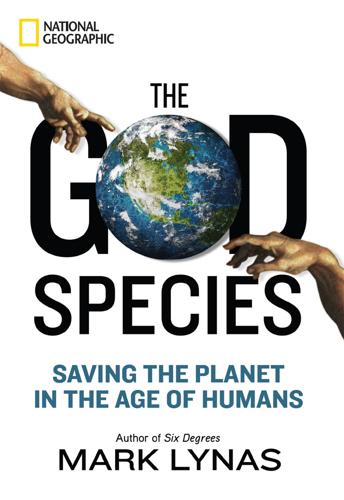
The God Species: Saving the Planet in the Age of Humans
by
Mark Lynas
Published 3 Oct 2011
To some this “printing money” approach might raise the specter of inflation, but central banks have plenty of options—like limiting the annual amount offered, altering interest rates, or forcing commercial banks to hold more reserves—to make this a minor concern. A version of this idea has been put at the international level by the World Future Council, which suggests using the International Monetary Fund’s “special drawing rights” facility to create a $100-billion-a-year Green Fund for investment in low-carbon infrastructure.77 Much of this money could go to developing countries, particularly those in the poorest category of “least developed.” Many of these countries would be much better off eschewing expensive fossil fuel imports in favor of using their indigenous renewables, but lack both the funding and the capacity to manage energy policy properly.
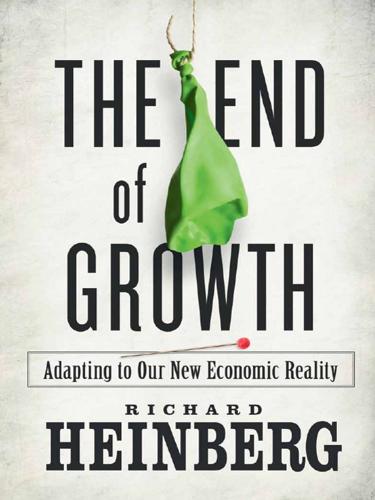
The End of Growth: Adapting to Our New Economic Reality
by
Richard Heinberg
Published 1 Jun 2011
Some anti-globalization bloggers believe there may be an Orwellian solution in store: Point 19 of the official communiqué from the 2009 G20 summit noted, “We have agreed to support a general SDR allocation which will inject $250bn (£170bn) into the world economy and increase global liquidity.” SDRs, or Special Drawing Rights, are “a synthetic paper currency issued by the International Monetary Fund.” Could the IMF be testing the waters for the creation of a global currency?24 Full implementation of a global currency would require many more steps, including the setting up of a full-fledged global central bank (the IMF is not currently equipped to fulfill this role, though perhaps it could be revamped for the purpose).
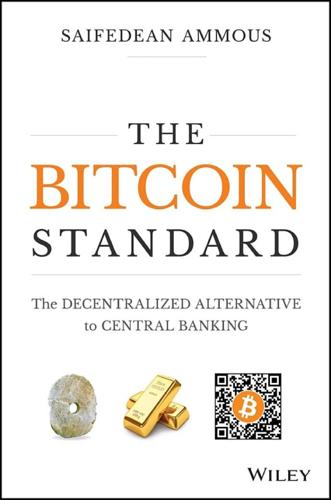
The Bitcoin Standard: The Decentralized Alternative to Central Banking
by
Saifedean Ammous
Published 23 Mar 2018
It is likely that Bitcoin's advantage lies not in competing with these payments for small amounts and over short distances; Bitcoin's advantage, rather, is that by bringing the finality of cash settlement to the digital world, it has created the fastest method for final settlement of large payments across long distances and national borders. It is when compared to these payments that Bitcoin's advantages appear most significant. There are only a few currencies that are accepted for payment worldwide, namely the U.S. dollar, the euro, gold, and the IMF's Special Drawing Rights. The vast majority of international payments are denominated in one of these currencies, with only a tiny percentage shared by a few other major currencies. To send a few thousand dollars' worth of these currencies internationally usually costs dozens of dollars, takes several days, and is subject to invasive forensic examination by financial institutions.
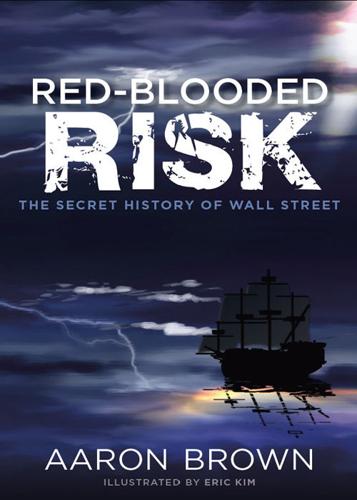
Red-Blooded Risk: The Secret History of Wall Street
by
Aaron Brown
and
Eric Kim
Published 10 Oct 2011
Economists tend to emphasize the first two but we had token money and commodity money as mediums of exchange, and bulk metal as a store of value, for thousands of years before true money added the numeraire function and caused an explosion in value creation. We have many things that function as partial money today, credit cards as mediums of exchange, financial securities as stores of value, special drawing rights (a unit of account for transactions between central banks that is defined by reference to a basket of currencies) and consumer price indexes (a unit of account used by economists that is defined by reference to a basket of goods) as numeraires; but the forms of money that stimulate the economy are those that equate constraints and goals of important risk-taking activities.
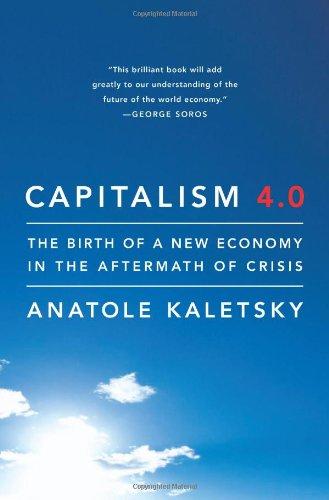
Capitalism 4.0: The Birth of a New Economy in the Aftermath of Crisis
by
Anatole Kaletsky
Published 22 Jun 2010
Even the start of such a move is unlikely for at least another decade, because currency convertibility and open capital markets would substantially weaken the Communist Party’s capacity for economic and social control. The only possible alternative to the dollar as the key currency of global trade and finance would be some kind of artificial international money created and managed by an international institution such as the IMF. The dollar could in principle be replaced by the IMF’s special drawing rights (SDR), but for this to happen, the United States, China, and Europe would have to give up a significant part of their economic sovereignty and accept the superior legitimacy of the IMF, and of the UN system to which it ultimately belongs. This would indeed be a big step forward in global cooperation.
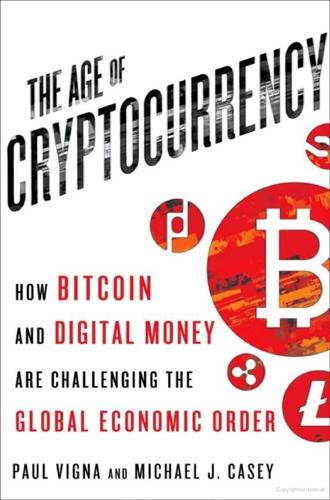
The Age of Cryptocurrency: How Bitcoin and Digital Money Are Challenging the Global Economic Order
by
Paul Vigna
and
Michael J. Casey
Published 27 Jan 2015
Those who’ve dreamed of the IMF’s playing an intermediary role in international commerce, who’ve wanted to free the world of its unhealthy dependence on the dollar and to reduce the excessive influence of the Fed and U.S. Treasury, might suddenly feel empowered. The Chinese and the French, who’ve pushed to have the IMF’s Special Drawing Rights elevated from their current role as mere units of accounting to becoming an international reserve currency for storing central bank deposits, might have themselves a new cause. We doubt officials in Paris or Beijing are conceiving of such things right now, but if cryptocurrency technology lives up to its potential, they may have to think about it.
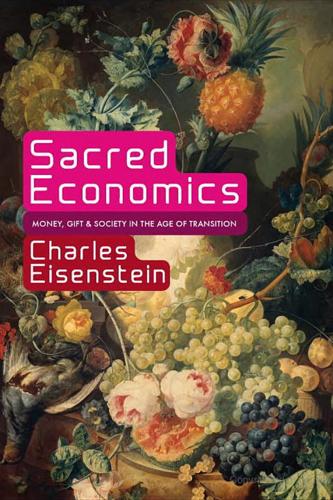
Sacred Economics: Money, Gift, and Society in the Age of Transition
by
Charles Eisenstein
Published 11 Jul 2011
The proclamation that money is backed is little different from any other ritual incantation in that it derives its power from collective human belief. However true this was of gold, it is truer still of more recent, more sophisticated backed-currency proposals, such as Bernard Lietaer’s terra currency, and recent proposals for revised IMF Special Drawing Rights, to be backed by a commodity basket reflecting overall economic activity. There is merit in this approach; indeed it is a step in the direction I envision in this book. But this backing is obviously a fiction: no one is ever going to exchange their terras for actual, physical delivery—on their doorstep—of the prescribed combination of oil, grain, carbon credits, pork bellies, iron ingots, and whatever else is on the list.
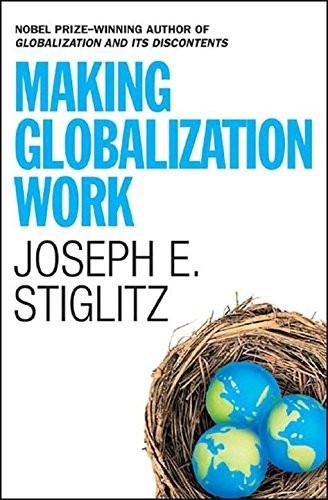
Making Globalization Work
by
Joseph E. Stiglitz
Published 16 Sep 2006
The holdings of one another’s currencies in reserves has the same effect as a line of credit, a commitment on the part of other countries to allow the country access to resources in times of need. The international community has already recognized that it can provide the kind of liquidity that Keynes envisioned, in the form of special drawing rights (SDRs). SDRs are simply a kind of international money that the IMF is allowed to create.20 The global greenbacks proposal simply extends the concept. I refer to the new money as global greenbacks to emphasize that what is being created is a new global reserve currency, and to avoid confusion with the existing SDR system, which has two problems: SDRs are only created episodically, while global greenbacks would be created every year; and SDRs are given largely to the wealthiest countries of the world, while global greenbacks would be used not only to solve the world’s financial problems but also to combat some of the deeper problems facing the world today, such as global poverty and environmental degradation.21 Here is a simplified description of how the system might work.

Air Crashes and Miracle Landings: 60 Narratives
by
Christopher Bartlett
Published 11 Apr 2010
The general rules regarding the compensation paid for victims used to be set by the Montreal Convention, which states that an airline can only be taken to court in the country the aircraft took off or landed in. It does have one advantage for the victims in that they can receive a modicum of compensation of up to (100,000 SDR (Special Drawing Rights)), which is roughly equivalent to US$150,000, without having to prove the airline was at fault. This is much less than they might receive in some courts and especially in the US where they might be able to obtain punitive damages. Thus, lawyers will often try to put the blame on a piece of equipment made in the US, which is not so difficult as many items used in airliners are from there.
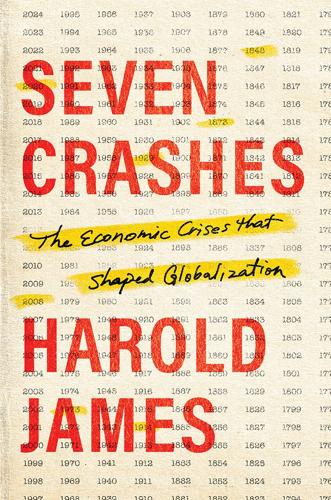
Seven Crashes: The Economic Crises That Shaped Globalization
by
Harold James
Published 15 Jan 2023
The building up of the IMF, by contrast, looked as if it was a more tangible achievement of the meeting. In advance of the summit, Japan and the European Union pledged an additional $100 billion of IMF funding. The summit communique included the pledge to “treble resources available to the IMF to $750 billion, to support a new SDR [Special Drawing Rights, the IMF’s currency] allocation of $250 billion, to support at least $100 billion of additional lending by the MDBs [Multilateral Development Banks], to ensure $250 billion of support for trade finance.” That calculation could be cast as a commitment to stimulus of over $1 trillion. China, by contrast, like the European leaders, did not want simply to bail out the existing order, in which—as the Chinese leadership saw matters—financial instability had been generated by Anglo-Americans.
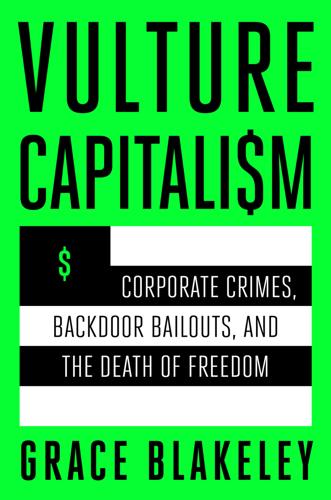
Vulture Capitalism: Corporate Crimes, Backdoor Bailouts, and the Death of Freedom
by
Grace Blakeley
Published 11 Mar 2024
There is no reason why creditors should constantly be protected from the consequences of their lending decisions at the expense of generally poorer debtor nations. Kevin Gallagher and Richard Kozul-Wright argue cogently for some much-needed reforms to this system, including introducing new allocations of IMF special drawing rights, which poor countries can exchange for cash in emergencies; establishing a multilateral swap facility at the IMF like the swap lines currently offered by the US central bank; and establishing a global debt authority with the power to determine how debts are restructured.75 Most importantly, unpayable debts must be canceled.
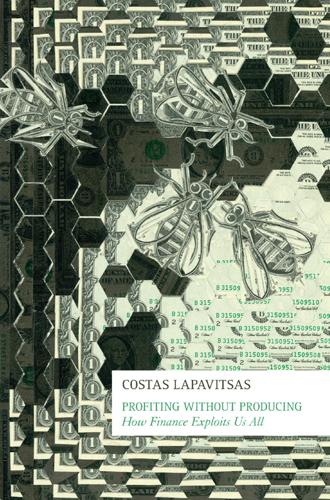
Profiting Without Producing: How Finance Exploits Us All
by
Costas Lapavitsas
Published 14 Aug 2013
Piketty, Thomas, and Emmanuel Saez, ‘Income Inequality in the United States, 1913–1998.’ Quarterly Journal of Economics 118:1, 2003, pp. 1–39. Plihon, Dominique, Le nouveau capitalisme, 3rd edition, Paris: Éditions La Découverte, 2009. Polak, Jacques J., and Peter B. Clark, ‘Reducing the Costs of Holding Reserves: A New Perspective on Special Drawing Rights’, The New Public Finance: Responding to Global Challenges, ed. Inge Kaul and Pedro Conceição, Oxford: Oxford University Press, 2006, pp. 549–63. Polanyi, Karl, ‘The Economy as Instituted Process’, in Trade and Markets in Early Empires, ed. Karl Polanyi, Conrad Arensberg, and Harry Pearson, Glencoe, IL: Free Press, 1957.

The Shifts and the Shocks: What We've Learned--And Have Still to Learn--From the Financial Crisis
by
Martin Wolf
Published 24 Nov 2015
The 14th General Review of Quotas, approved in December 2010, will double the IMF’s permanent resources to SDR 476.8 billion (about $737 billion). There will be a rollback in the NAB credit arrangements to SDR 182 billion, which will become effective when participants pay for these quota increases. In addition, in 2009, the membership agreed to make a general allocation of special drawing rights (SDRs), equivalent to $250 billion, resulting in a near tenfold increase in SDRs. See International Monetary Fund, ‘IMF’s Response to the Global Economic Crisis’, 19 September 2013, http://www.imf.org/external/np/exr/facts/changing.htm. 47. International Monetary Fund, ‘Greece: Ex Post Evaluation of Exceptional Access under the 2010 Stand-by Arrangement’, 20 May 2013, http://www.imf.org/external/pubs/ft/scr/2013/cr13156.pdf. 48.

More: The 10,000-Year Rise of the World Economy
by
Philip Coggan
Published 6 Feb 2020
Private investors demanded to exchange their dollars for gold. In 1967, in the face of its repeated trade deficits, Britain devalued the pound for the second time under the system. In the following year, the US stopped redeeming privately held dollars for gold. The IMF created a new composite currency, the Special Drawing Right, as an alternative to the dollar. But the pressure continued, with foreign investors swapping their dollars for German marks and Japanese yen, since gold was not available.72 In a sense, this was inevitable. The Bretton Woods system had been set up at the end of the war, when European and Japanese economies were shattered and the US was dominant.

Manias, Panics and Crashes: A History of Financial Crises, Sixth Edition
by
Kindleberger, Charles P.
and
Robert Z., Aliber
Published 9 Aug 2011
Outside the European Monetary Union, most large countries regard the issue and control of money as a mark of sovereignty; in the United States, these functions are enshrined in the Constitution. The United States and the dollar The United States took the lead in the 1940s, the 1950s, and the 1960s in establishing new international financial arrangements – the IMF and the World Bank, the General Arrangements to Borrow, the Special Drawing Rights, the swap network, and the gold pool. Moreover the United States took the initiative at the end of the 1980s in assisting developing countries to write down the value of their loans to major international banks so they might again be creditworthy. And the United States took a leadership role when individual countries like Mexico and Russia and South Korea had major international payments problems.
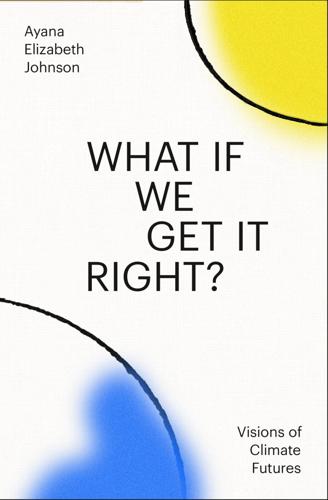
What If We Get It Right?: Visions of Climate Futures
by
Ayana Elizabeth Johnson
Published 17 Sep 2024
And, depending on what parts of the Bridgetown Initiative are ever adopted, it would do a lot of things, including make it much easier for countries to borrow money in ways that don’t end up being absurdly penalizing, that don’t force people to pay back money that they need for doing the kind of climate mitigation and adaptation work they have to do through no fault of their own, that set up special drawing rights that countries could draw on in the case of emergencies that wouldn’t land them as deeply in the debtor’s prison many of them now inhabit. These are all good ideas. To make them happen requires considerable sums of public money, and that can’t happen without the acquiescence of institutions like the U.S.
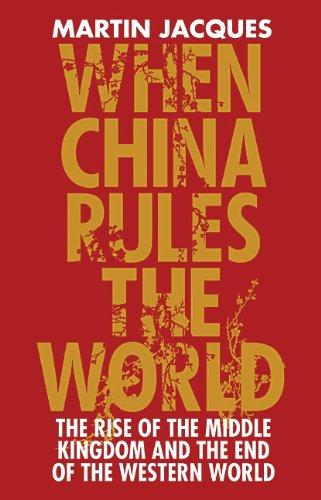
When China Rules the World: The End of the Western World and the Rise of the Middle Kingdom
by
Martin Jacques
Published 12 Nov 2009
It is not difficult to predict some of the likely consequences: the G20 will effectively replace the G8 and the IMF and the World Bank will be subject to reform, with the developing countries acquiring a greater say. The most audacious proposal that has so far emanated from Beijing is the suggestion for a new de facto global currency based on using IMF’s special drawing rights, which might in time replace the dollar as the world’s reserve currency. Whether such a proposal would ever see the light of day, or indeed work, given that reserve currencies hitherto have always depended on a powerful sovereign state, it offers an insight into the strategic financial thinking that informs the Chinese government’s approach.
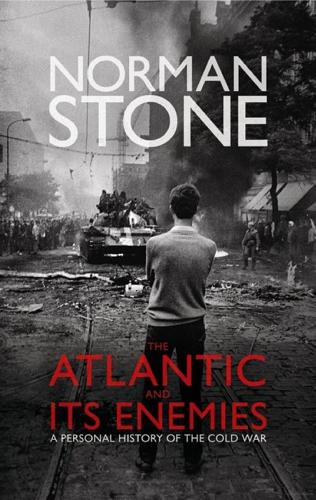
The Atlantic and Its Enemies: A History of the Cold War
by
Norman Stone
Published 15 Feb 2010
Wise heads shook, though they shook in the wrong direction, absurdly conjuring up a ‘liquidity crisis’, and deflation, in which they were quite wrong, because the problem was that there was a glut of money, and an inflation that rocked the entire system. At any rate, tinkering happened. A G10 group of the industrial nations was formed to defend the dollar (and a Basle one for the pound) and they could lend to the IMF, which allowed special drawing rights of immediate credit to defend a currency under threat. The IMF thereby, at last, acquired a role. NATO members were encouraged to spend dollars in the USA and to deposit cash there; American citizens were forbidden to own gold coins (1965) and the GATT round of 1958-62 even allowed countries with threatened currencies to impose an import surcharge of 10 per cent (as happened with the British in 1961 and 1964).